Happy Friday to all of you lovely people. Sorry for not showing you nice places, but first I had some familiar stuff to handle with my sista so I had no time and nervs to go out and get inspired or checking some great places for you guys and second I had some troubleshoot here. Til now, now I am baaaaaack. Hopefully.
Lets see, if I got downvoted again, I am wondering...normally I am allowed to post again without probs. I wrote all the shit here, lol. Sources are given, photos shot by myself. Lets goooooooo.
So get your cup of coffee or tea and enjoy more than 160 #photos and surely more than 5000 word...
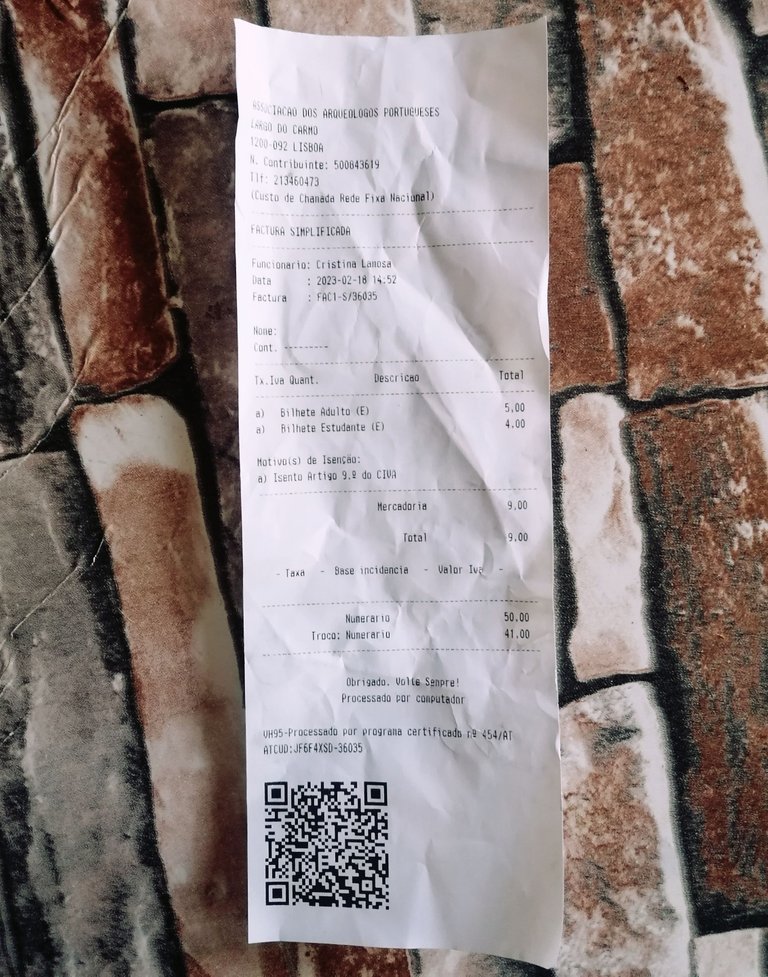
here you see the prices for an adult and a student
Museu Arqueologico do Carmo
Adress:
Largo do Carmo, 1200-092 Lisboa
Date:
February, 18th, 2023
Camera:
cellphone Huawei P30
Website:
https://www.museuarqueologicodocarmo.pt/
other Sources:
https://www.visitportugal.com/en/content/museu-arqueologico-do-carmo
https://pt.m.wikipedia.org/wiki/Museu_Arqueol%C3%B3gico_do_Carmo
But now enough background infos, lets go for a walk on this sunny day in February.
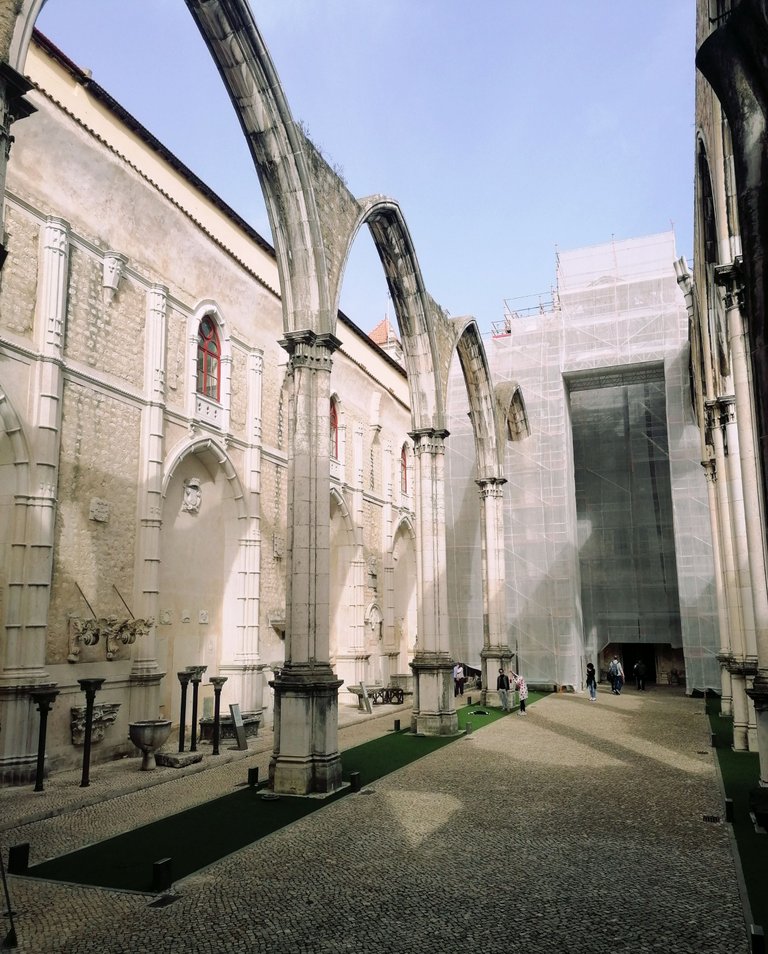


The Museu is a marvelous example of Gothic architecture and a popular destination for those interested in history and culture and for a loooot of tourists too. However, before visitors can explore the museum and its ruins, they must first pass through the reception area, which was designed by the architect Carlos Antunes.
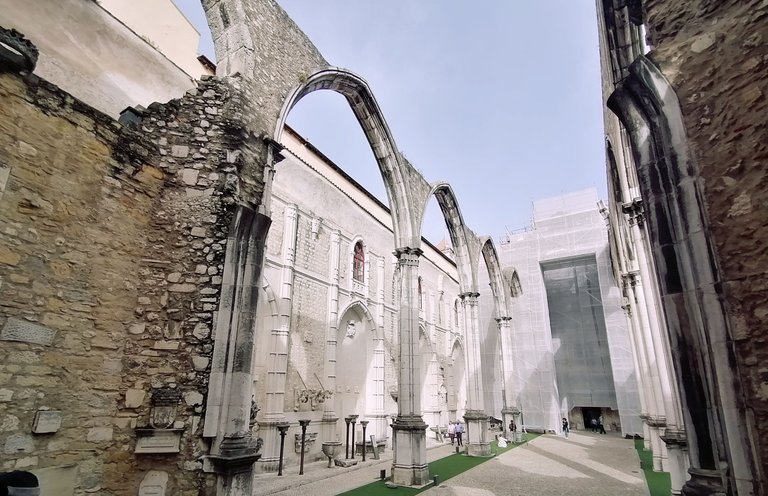
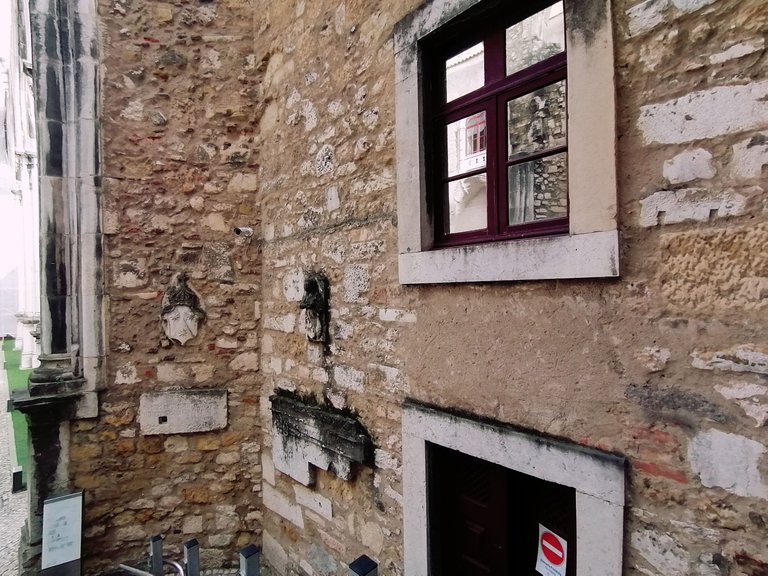
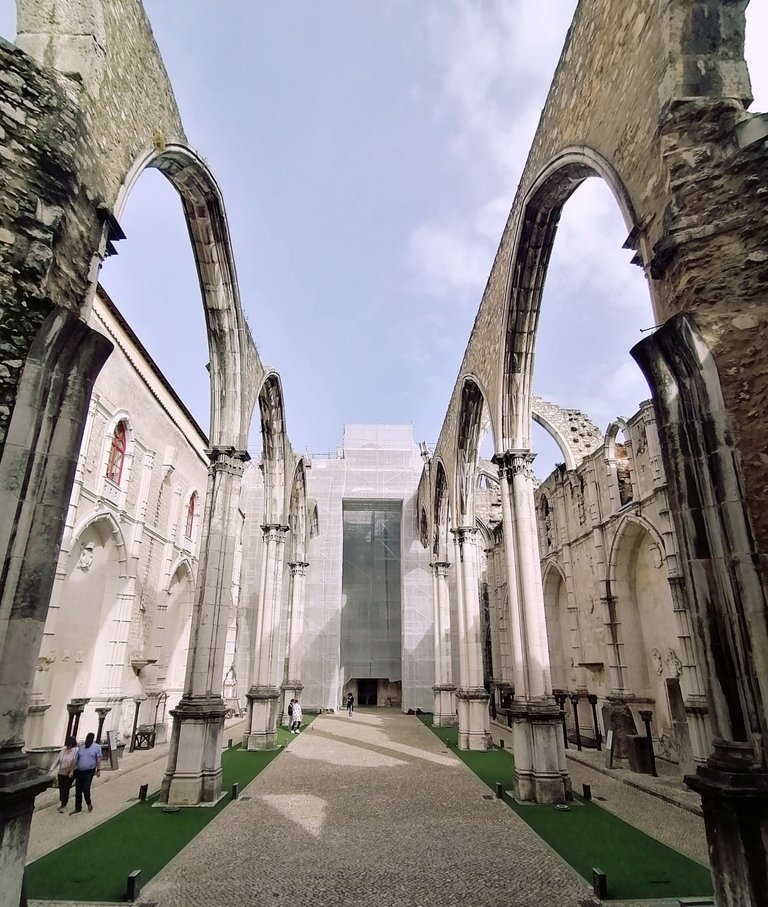
The reception area is characterized by a wooden structure that includes the ticket office. The design is modern and minimalist, with clean lines and a simple color palette that complements the surrounding Gothic architecture.
The museums employee's are super friendly and they can speak mostly english or other languages too. A lot of Portuguese people talk minimum 2 or 3 languages.
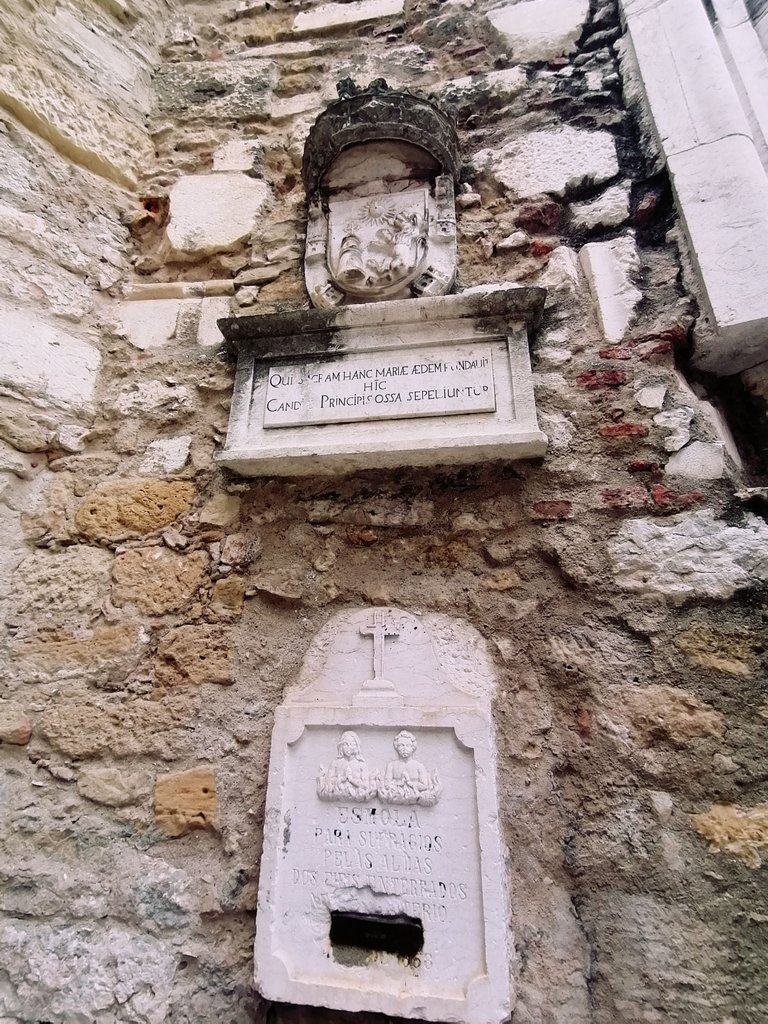
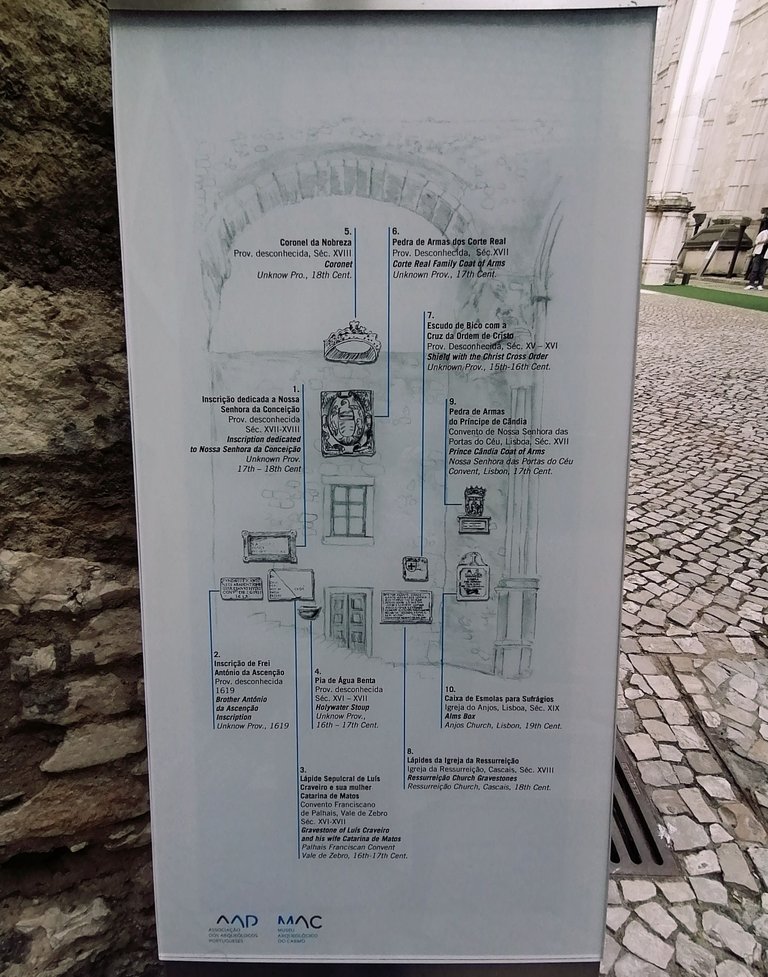

One of the most notable features of the reception area is the side staircase that leads visitors down to the naves, which are at a lower elevation than Largo do Carmo. This unique design element creates a sense of anticipation and excitement as visitors descend the stairs, building anticipation for the wonders that await them in the museum. When I was there, renovations were taking place. So if you go there this days, you are warned, lol, but anyway its an amazing place to see.


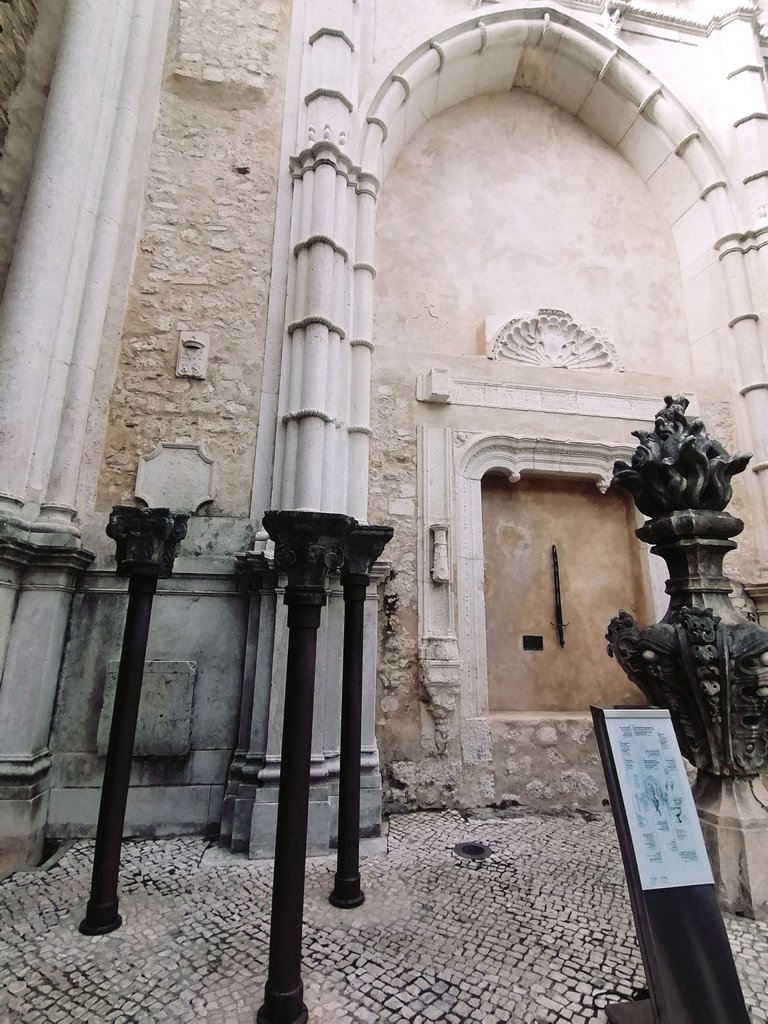
This area looks a bit like a stone sculpture garden. On the left and right side you will find ancient sculpture works.
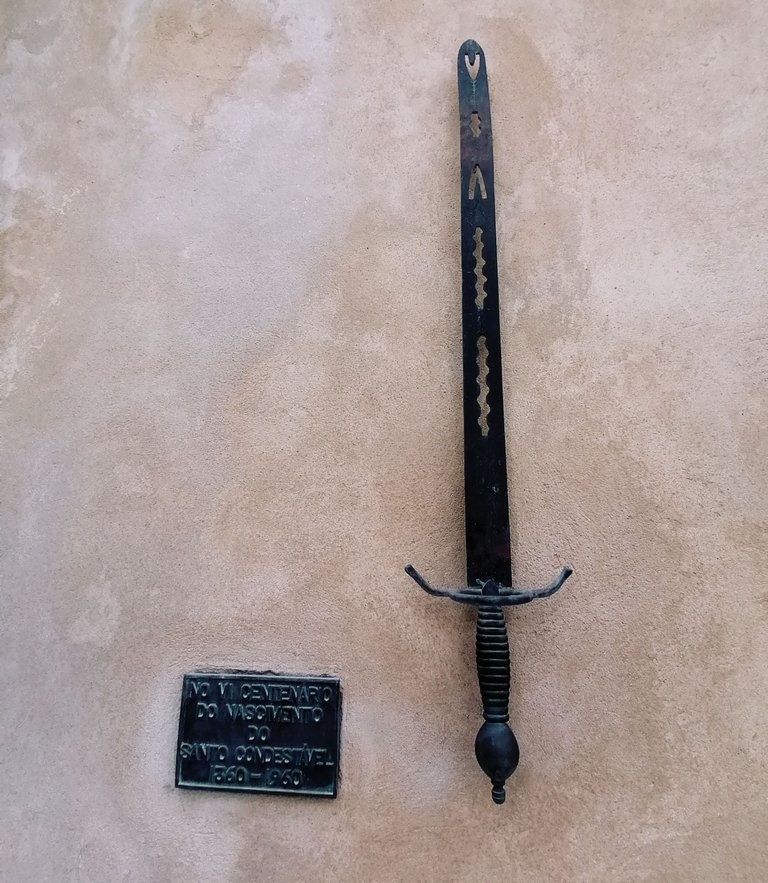
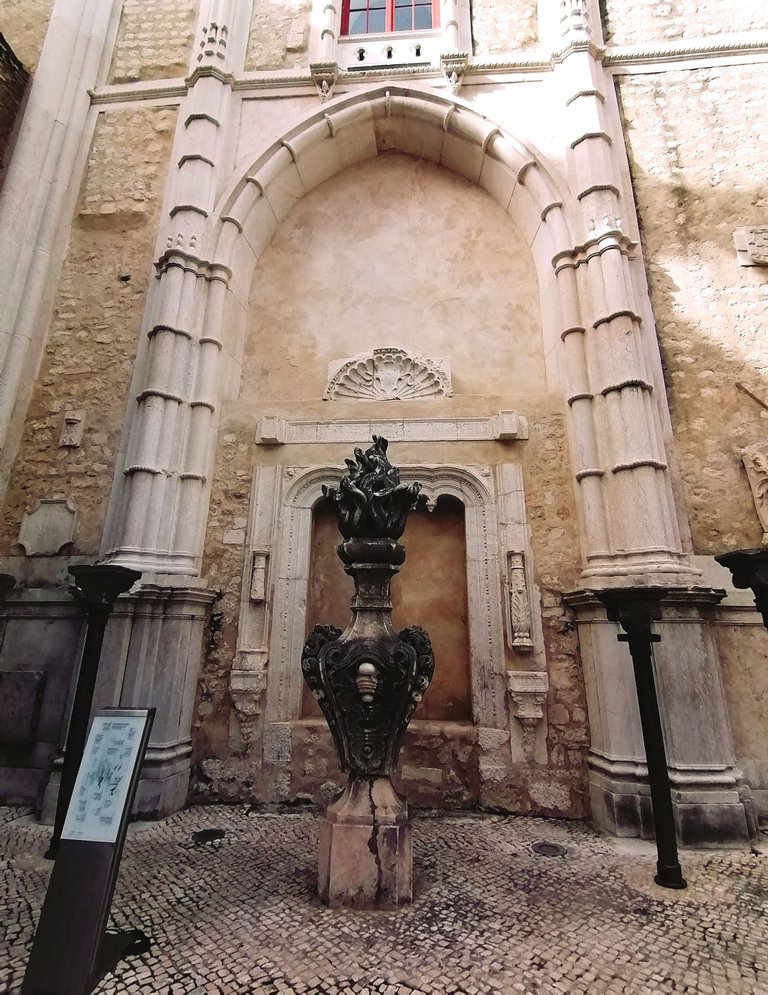
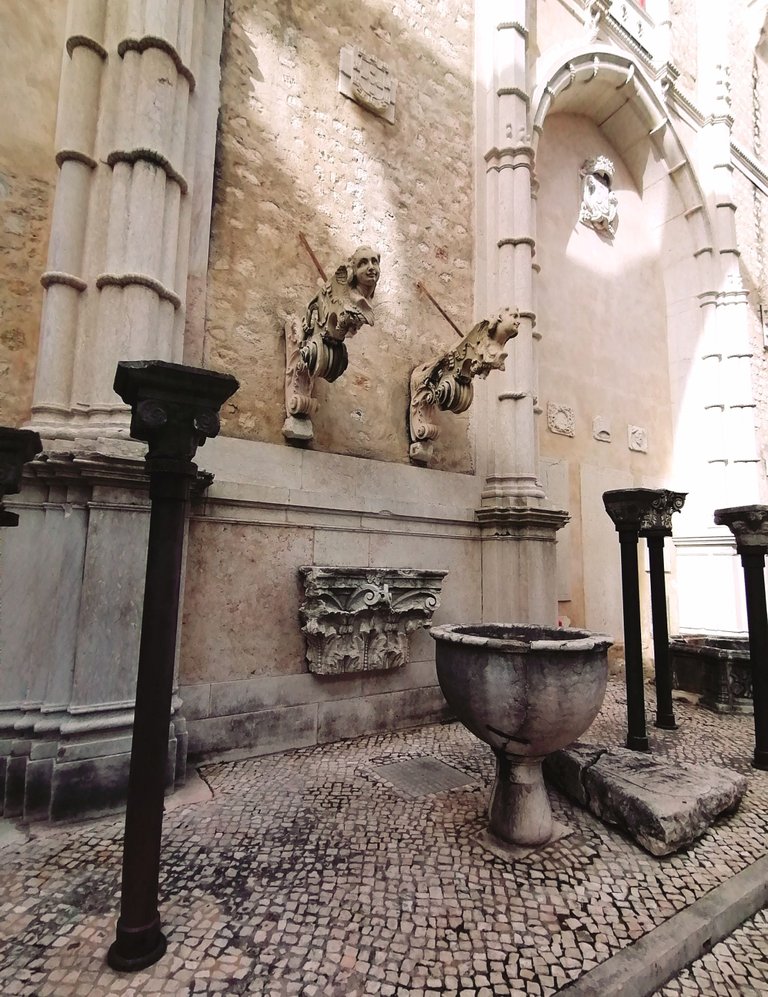
Visitors to the museum should take the time to appreciate the thoughtful design of the reception area as they make their way to the naves below. By doing so, they will gain a deeper appreciation for the museum's focus on preserving and celebrating Portugal's rich cultural heritage.
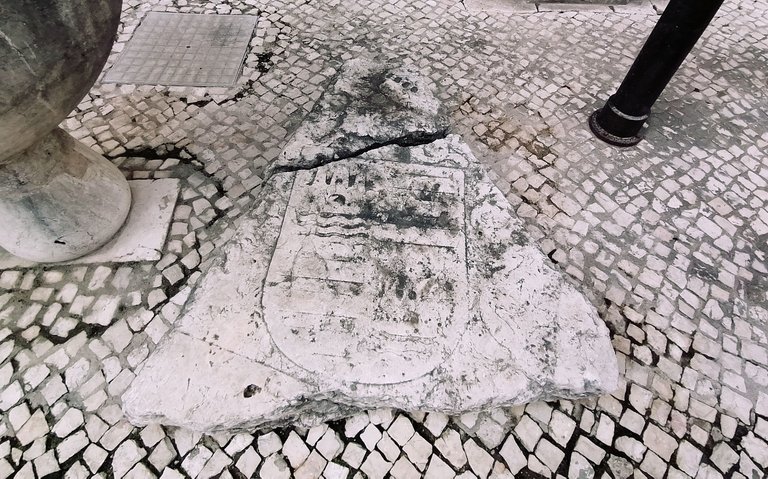

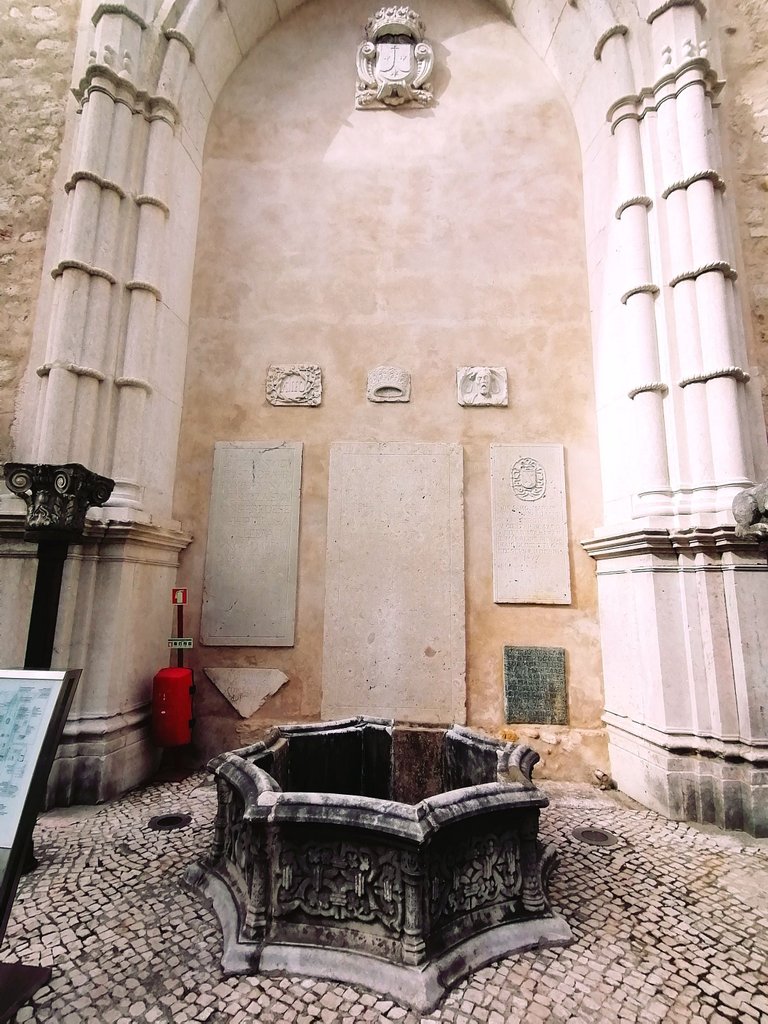
I tried to photograph also the infos of many sculpture works so you can read it on English and Portuguese. This post will be rich on photos ( ~ 160 photos) and over 5000 words (I stopped counting...) this is why I don't write about every artwork or ancient sculpture much. But you can find a lot infos on the museums website.
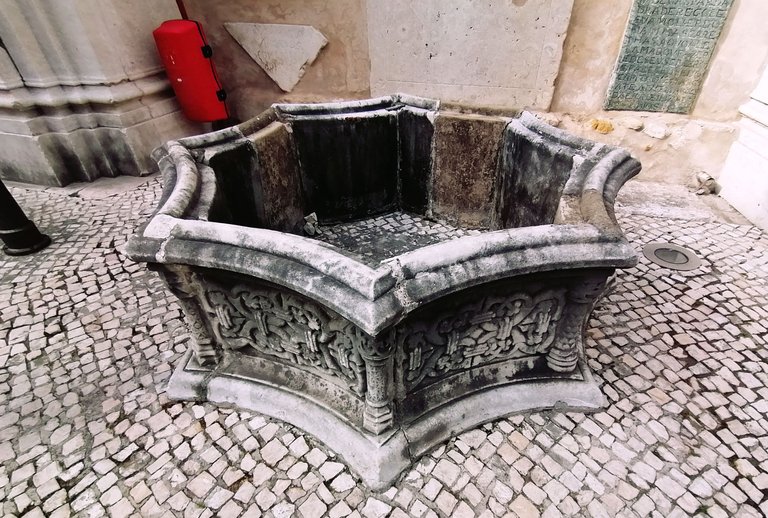
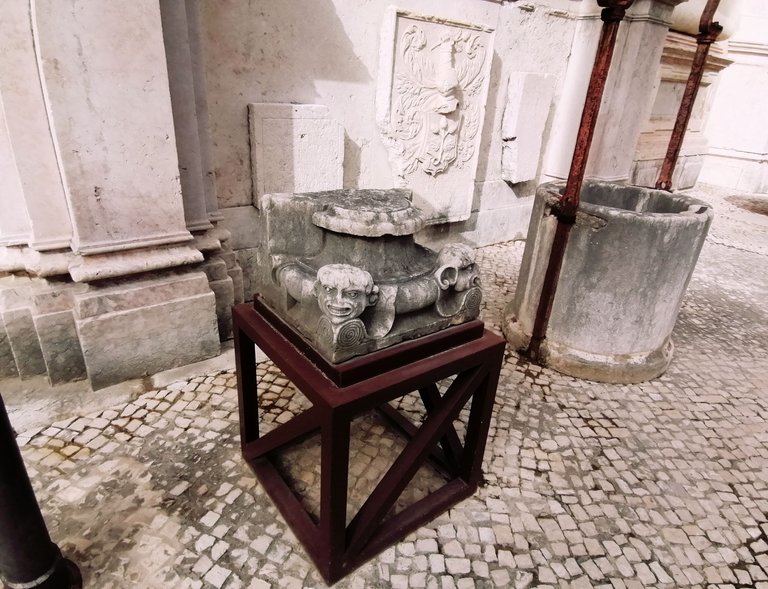
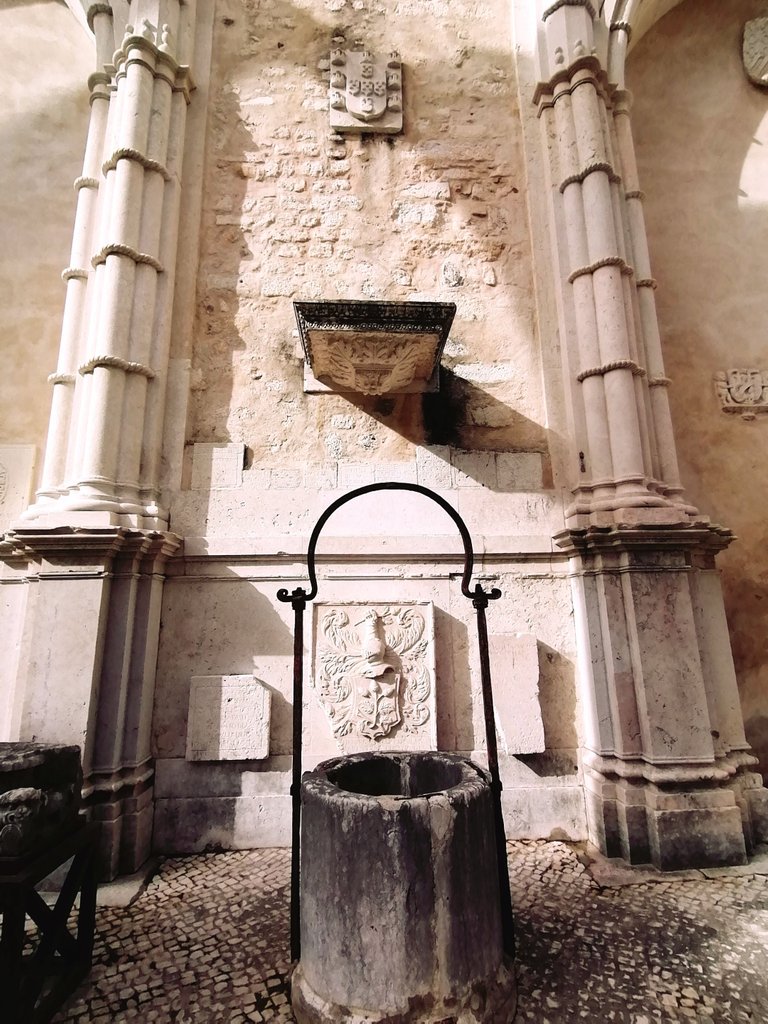
And its still the outdoor area. Lets continue our walk...
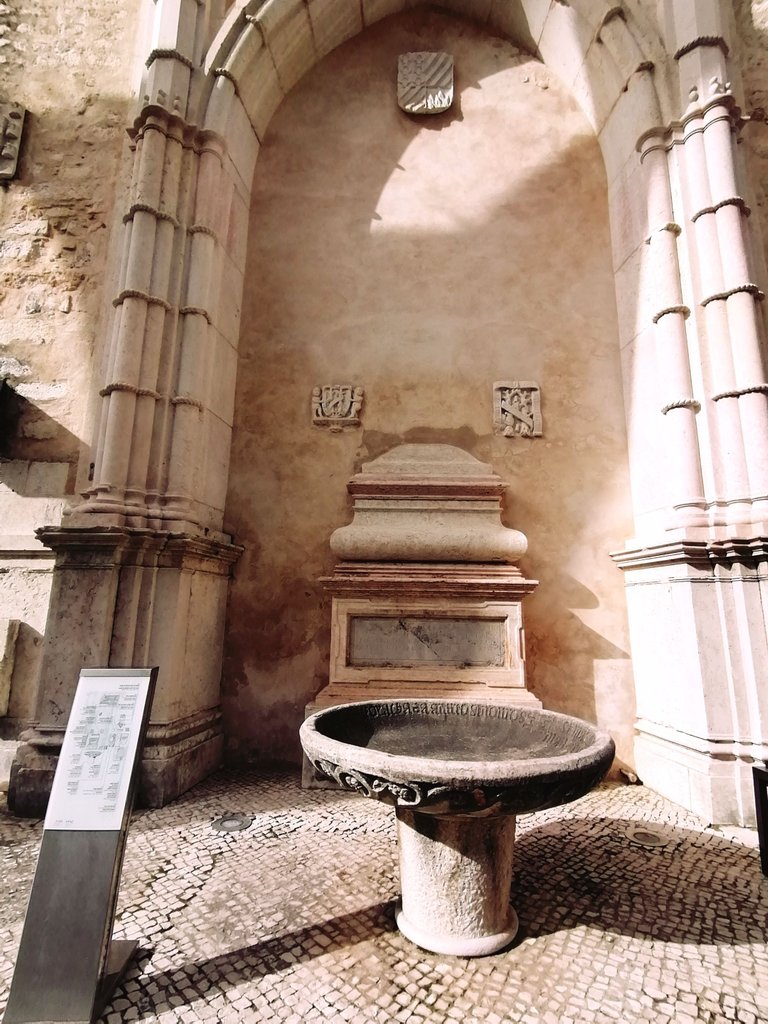

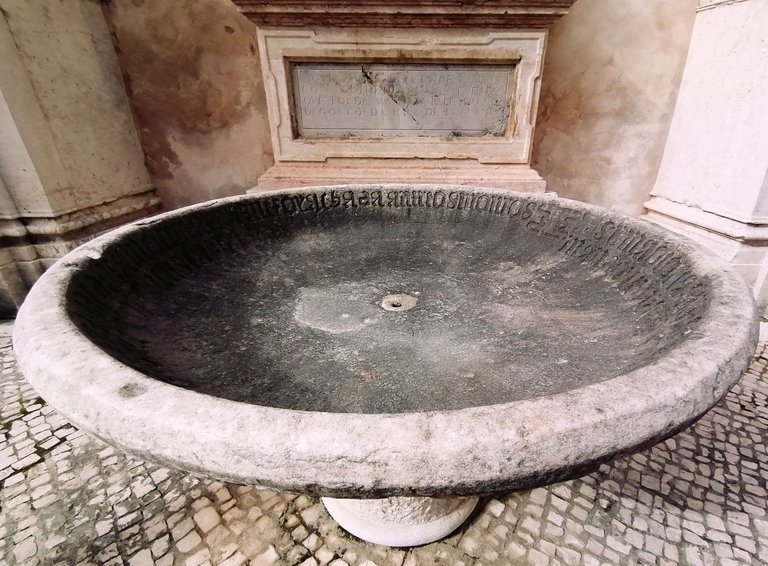
So many things to see and watch. Phew, you could spent a whole day here to analyze everything.
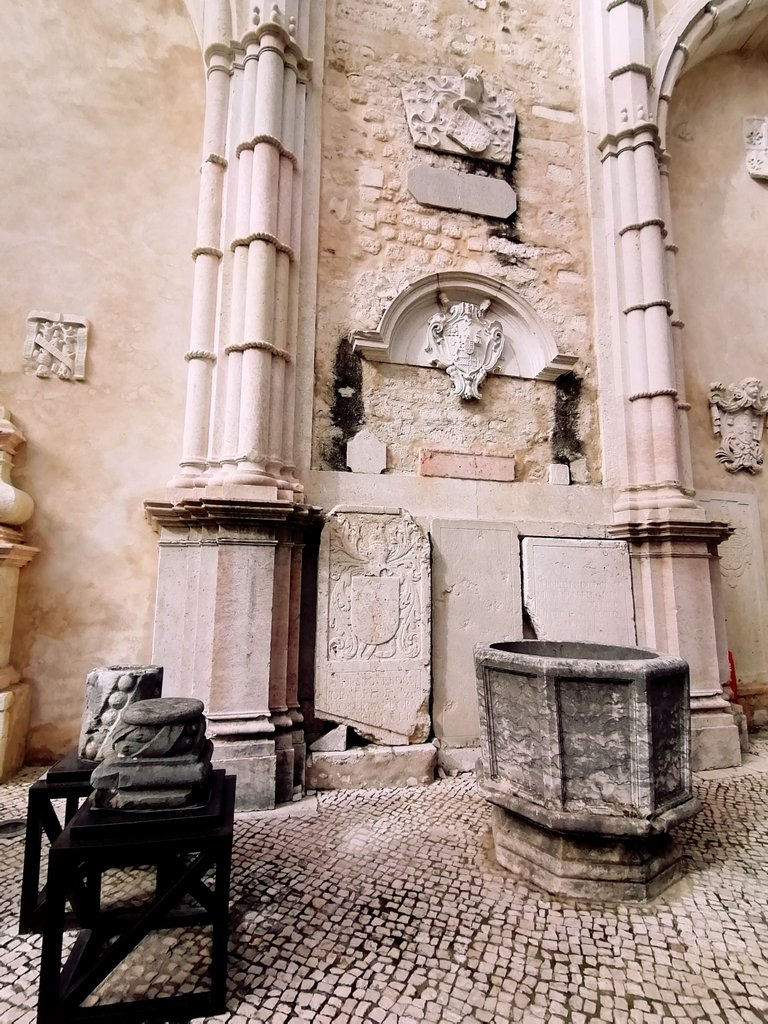
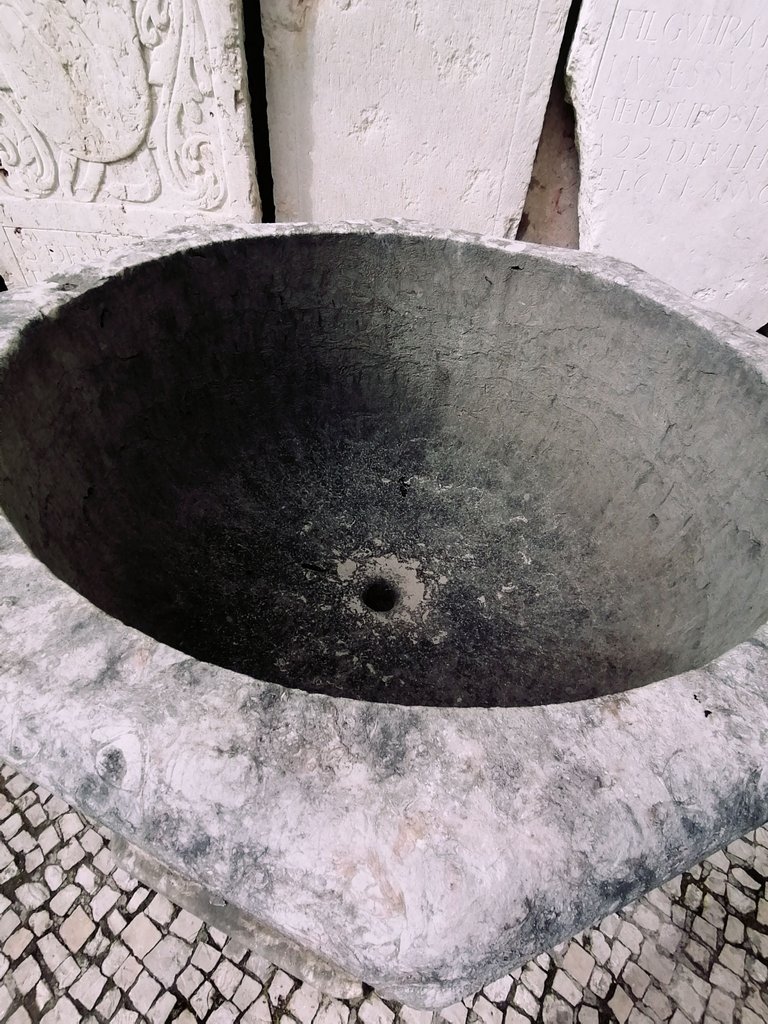
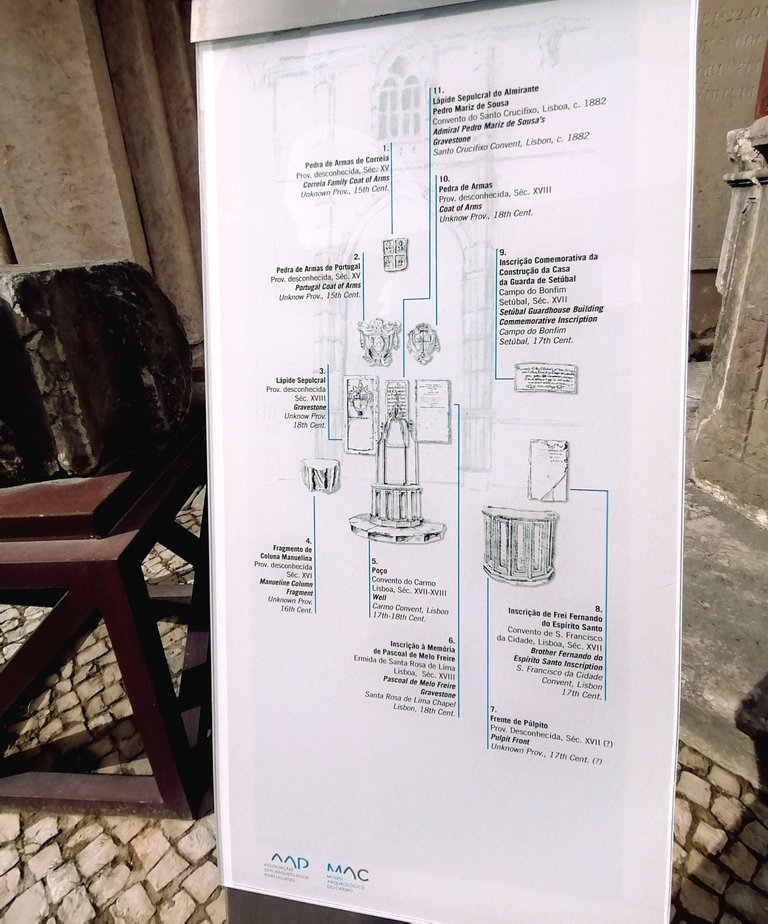
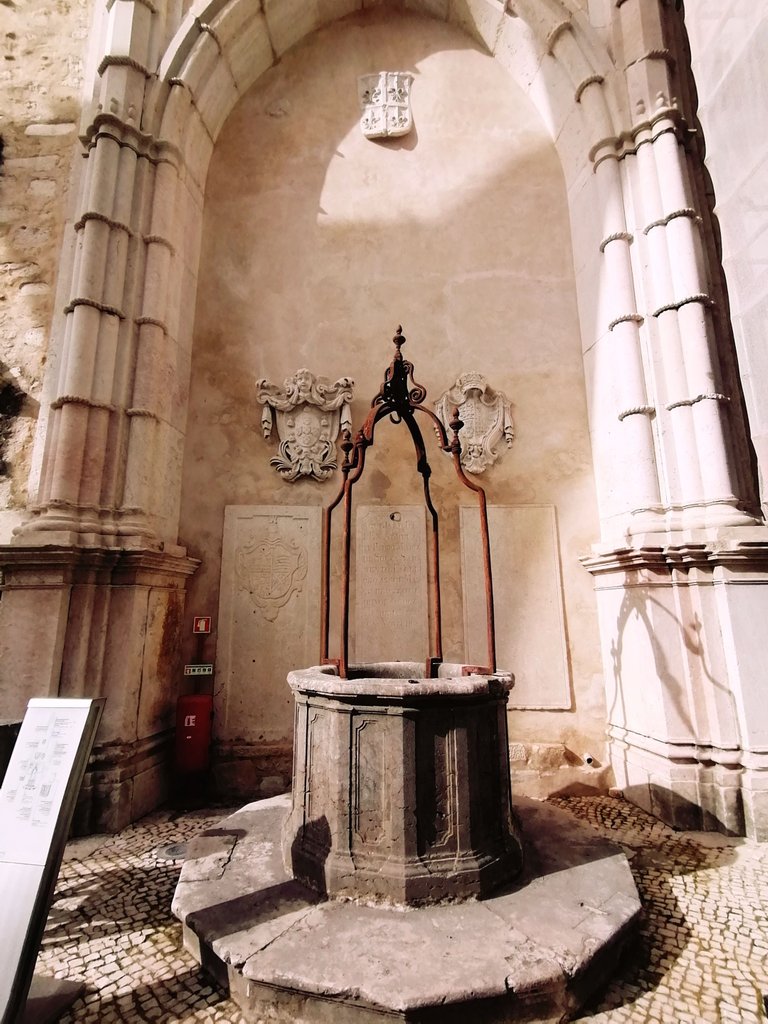
Hope you have enough coffee or tea, otherwise get a fresh new one, our walk continues...
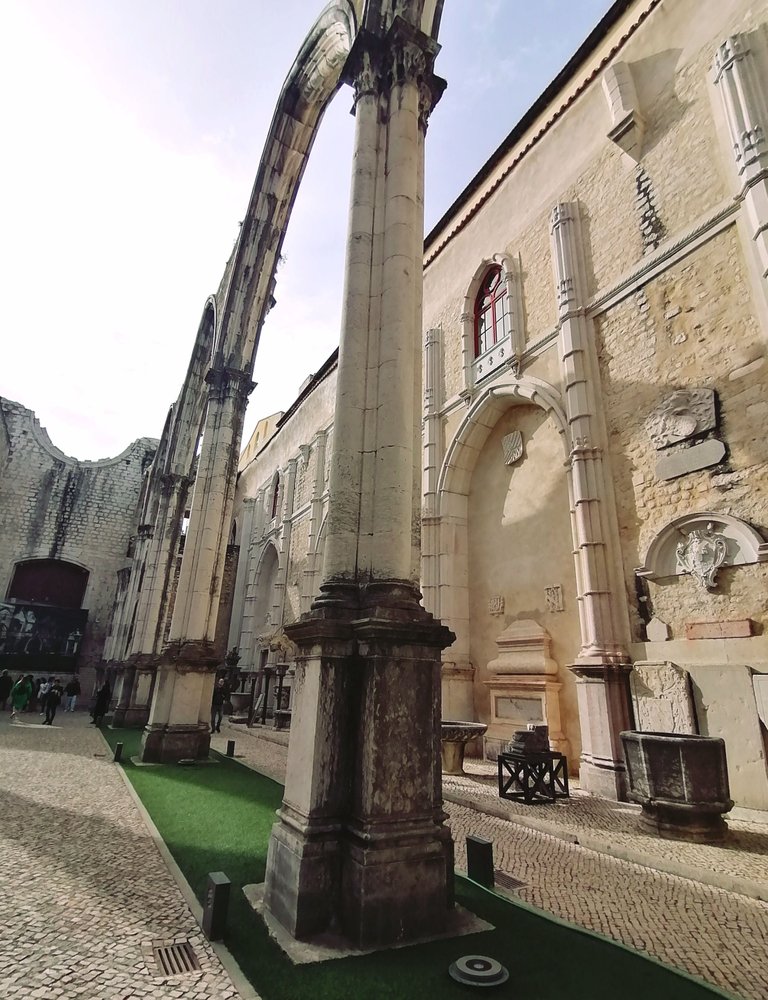
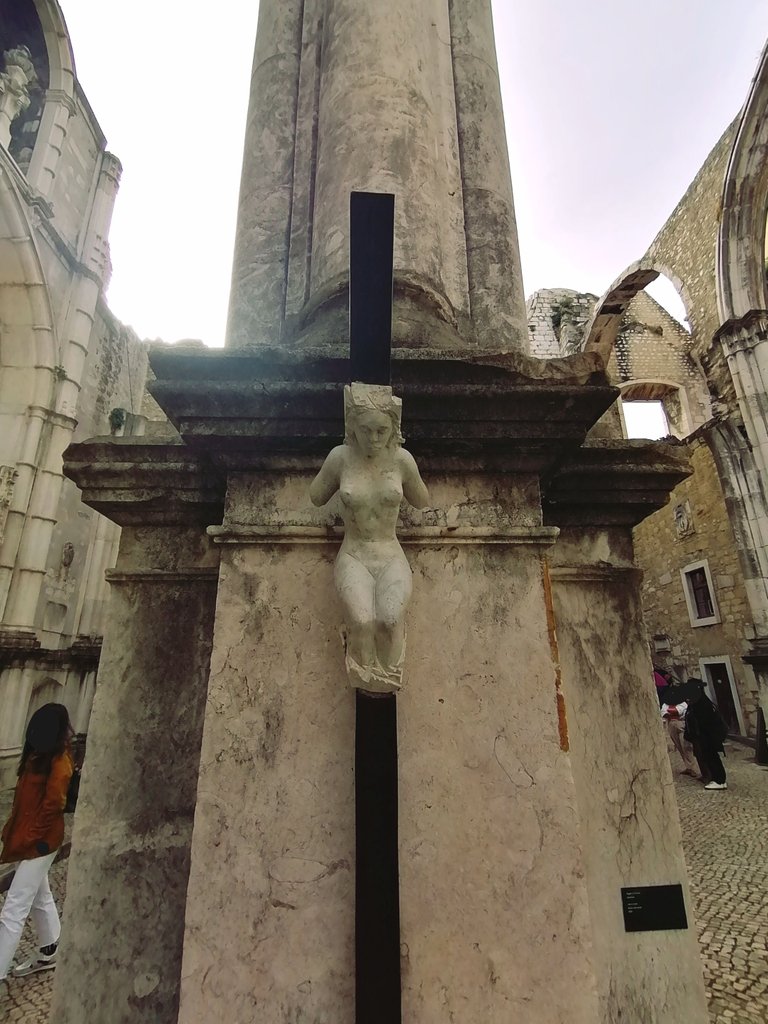
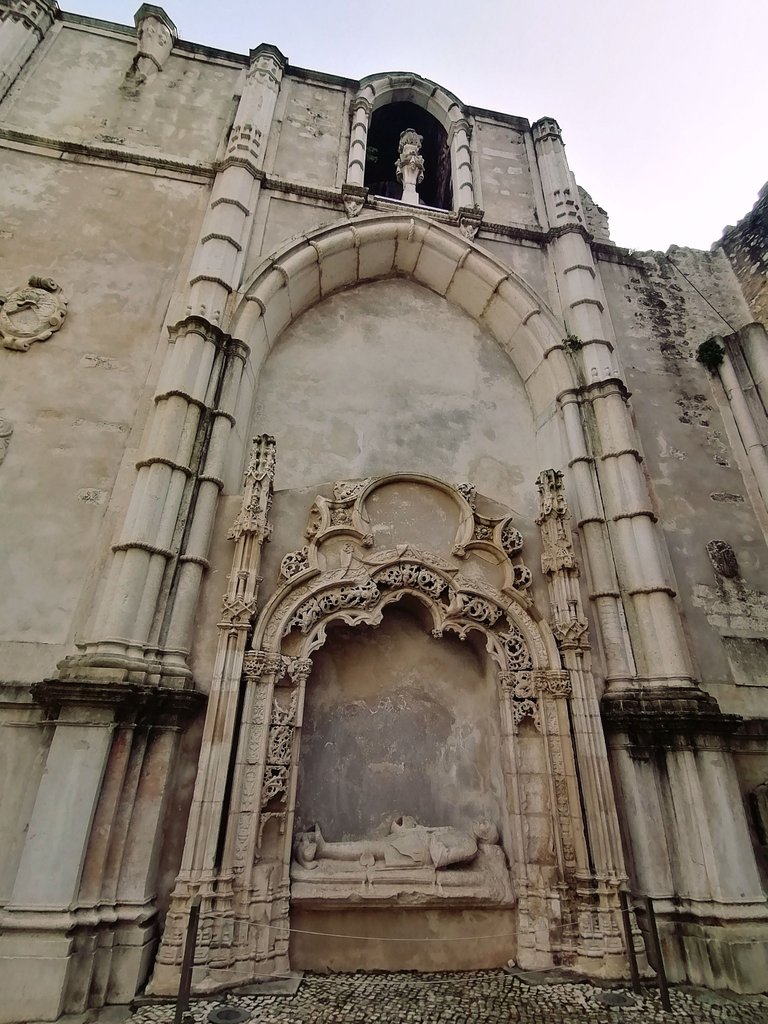
Before I forget, to keep the privacy of the museums visitors I colored the faces of the people when some visitors were to clear visible.
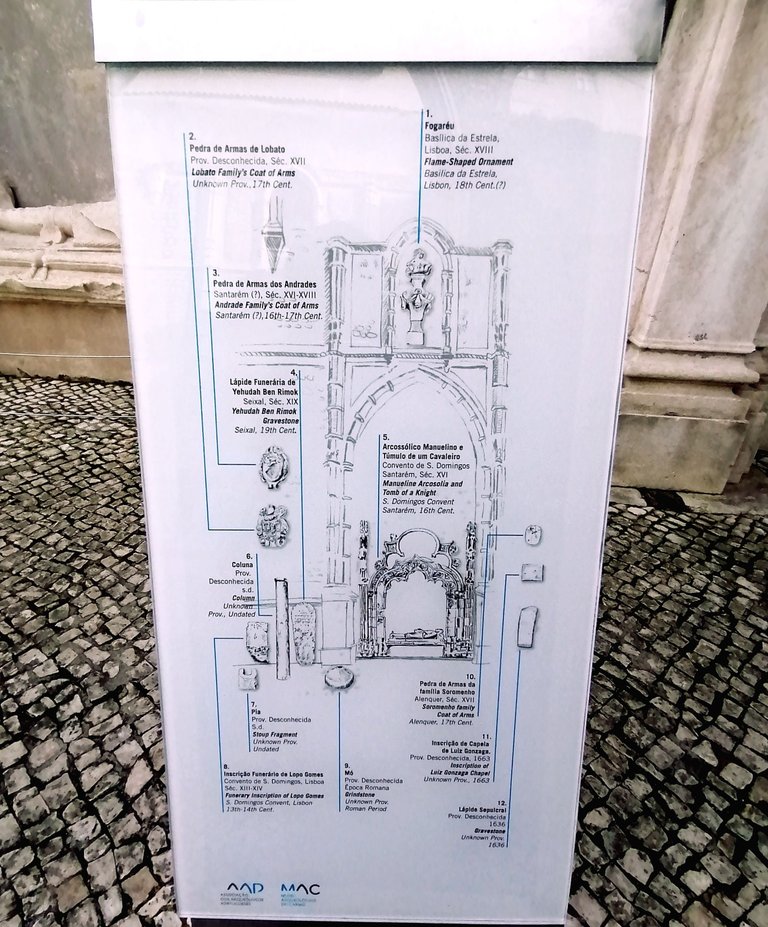
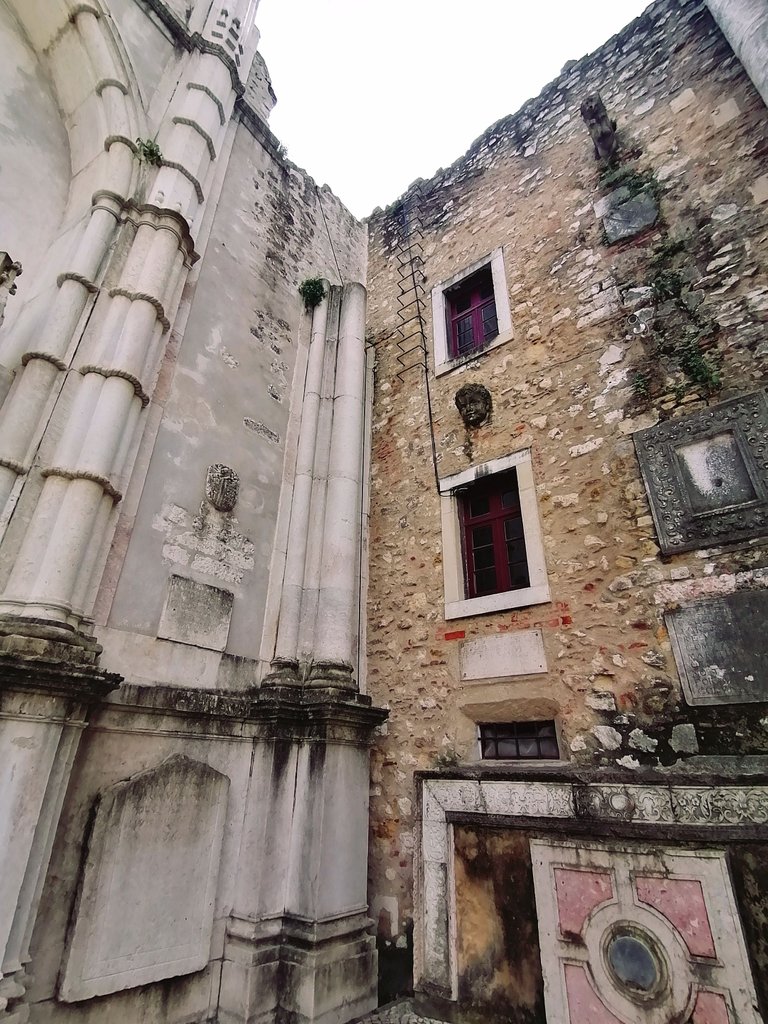
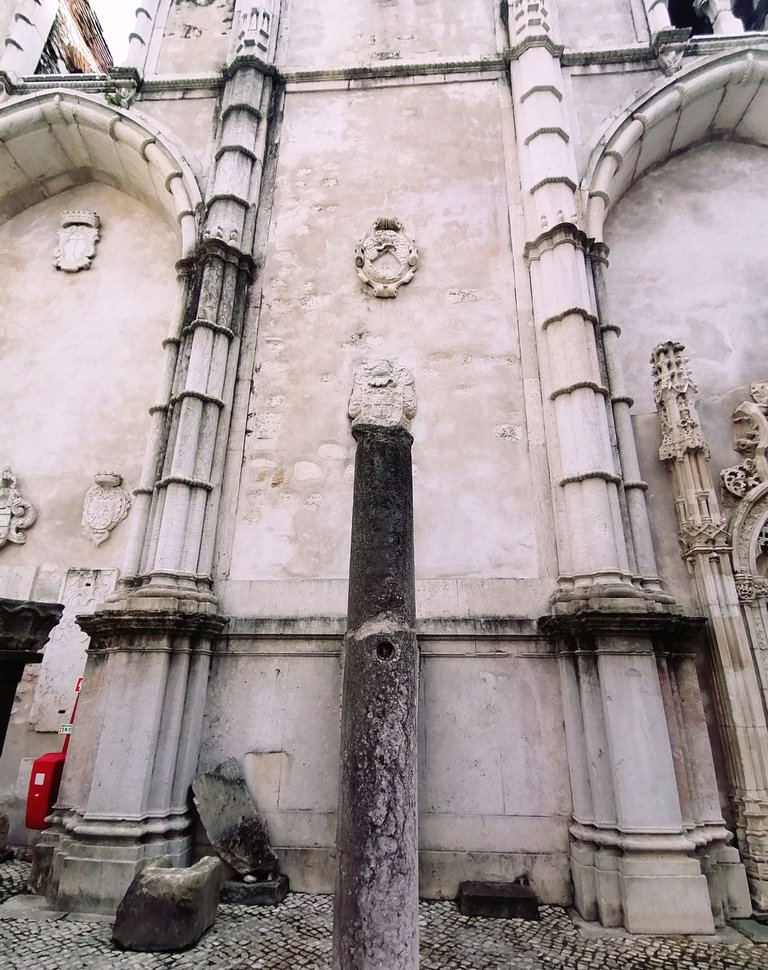
Discovering everything what is on the stone walls and standing around. The outside walk of the museum can take a bit longer.
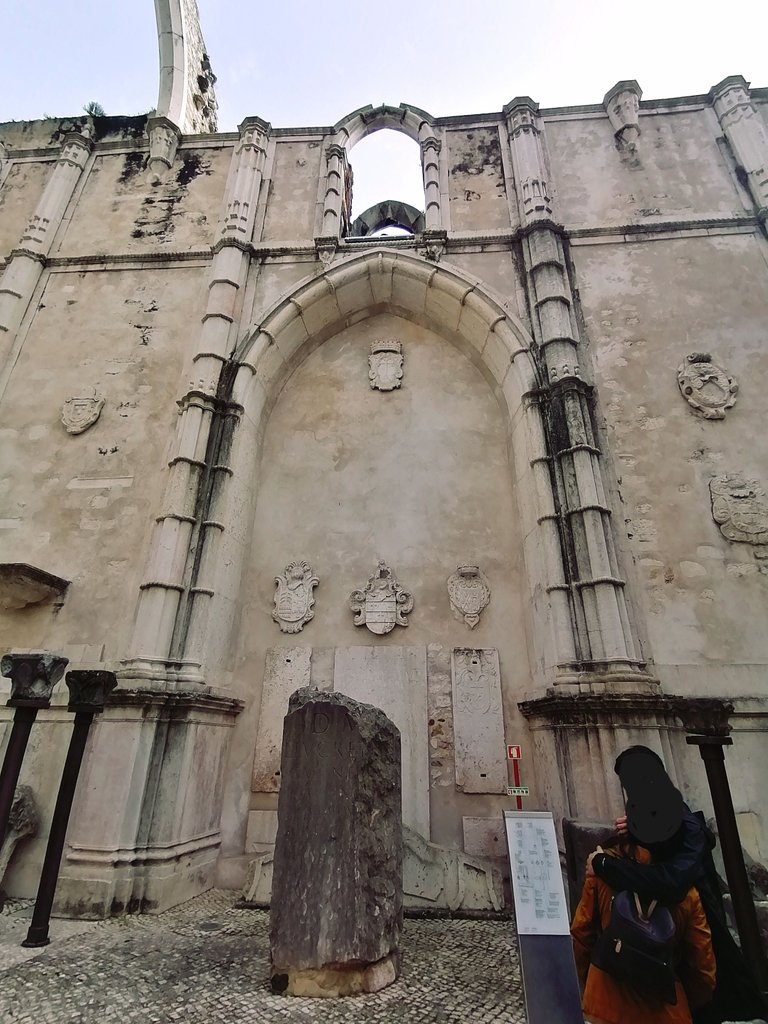
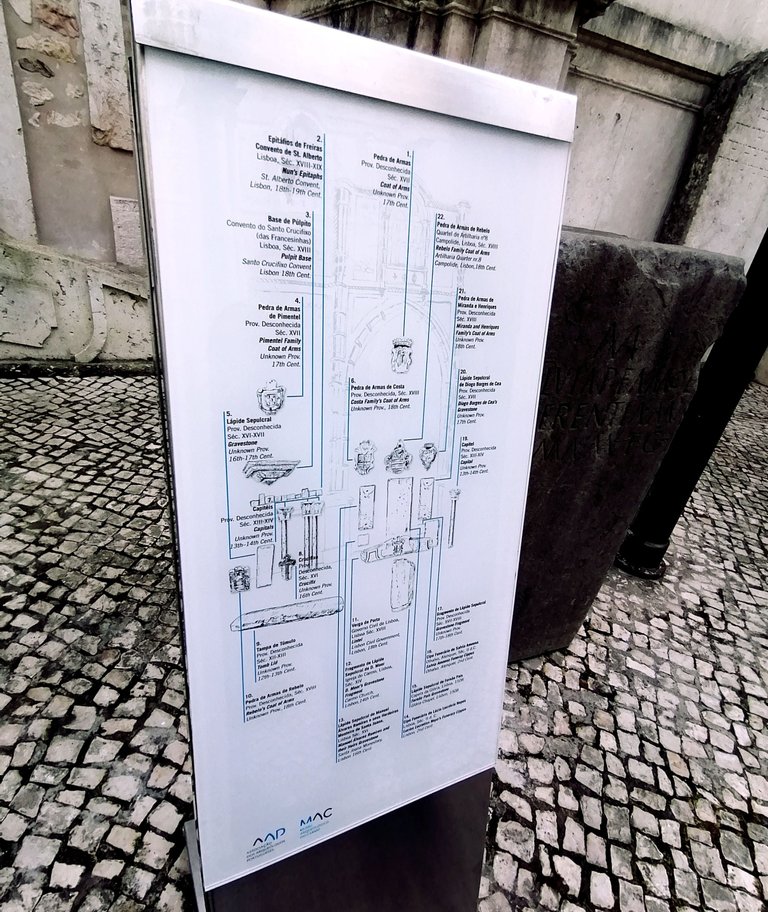
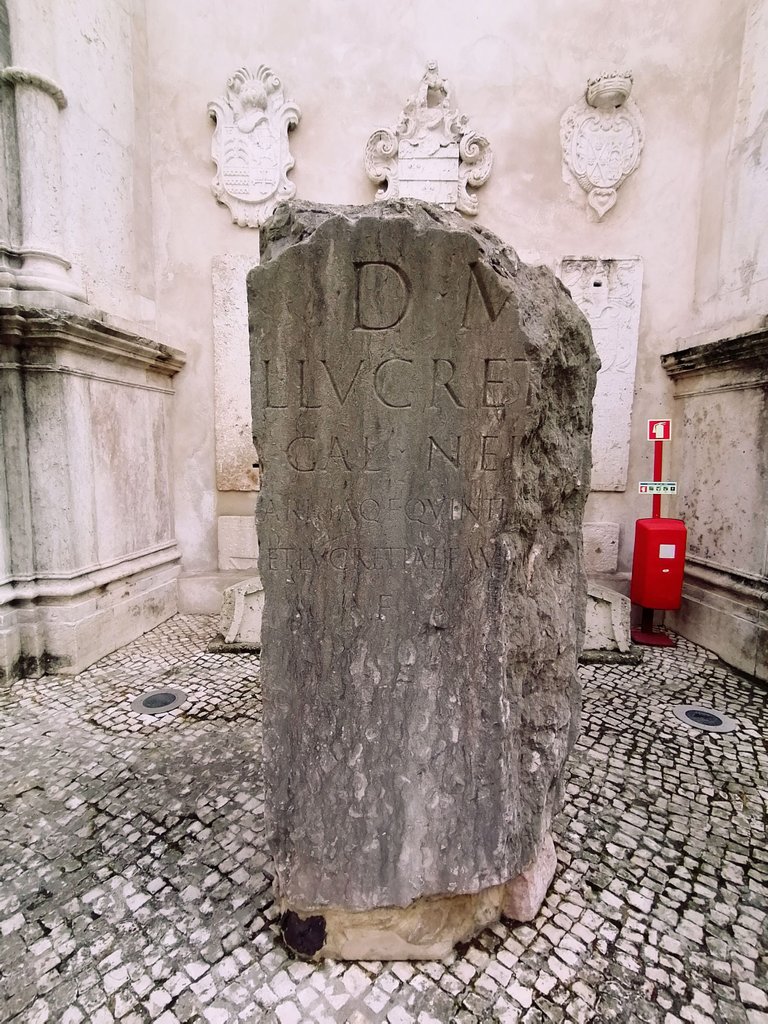

Some sculptures and stone faces really look like a kind of demon face or something like that. Whatt you think?
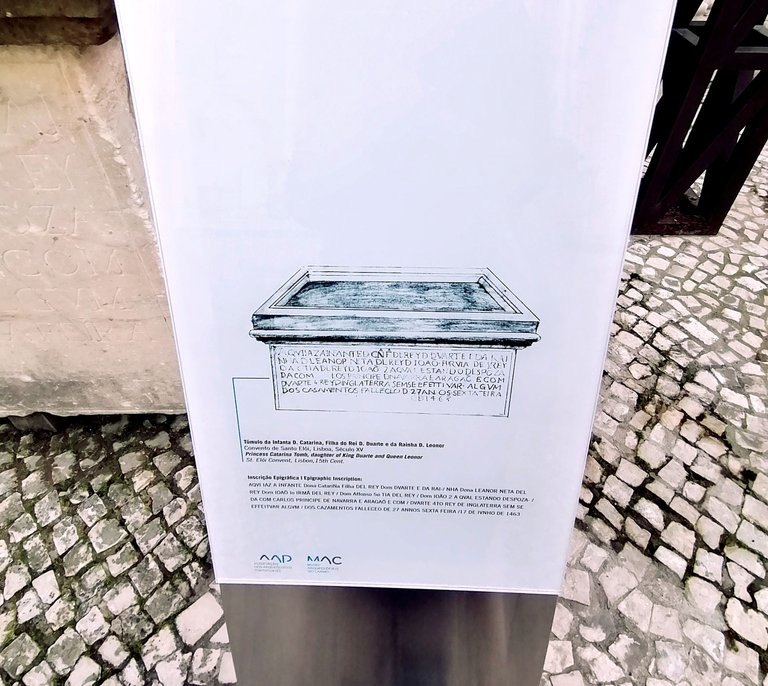

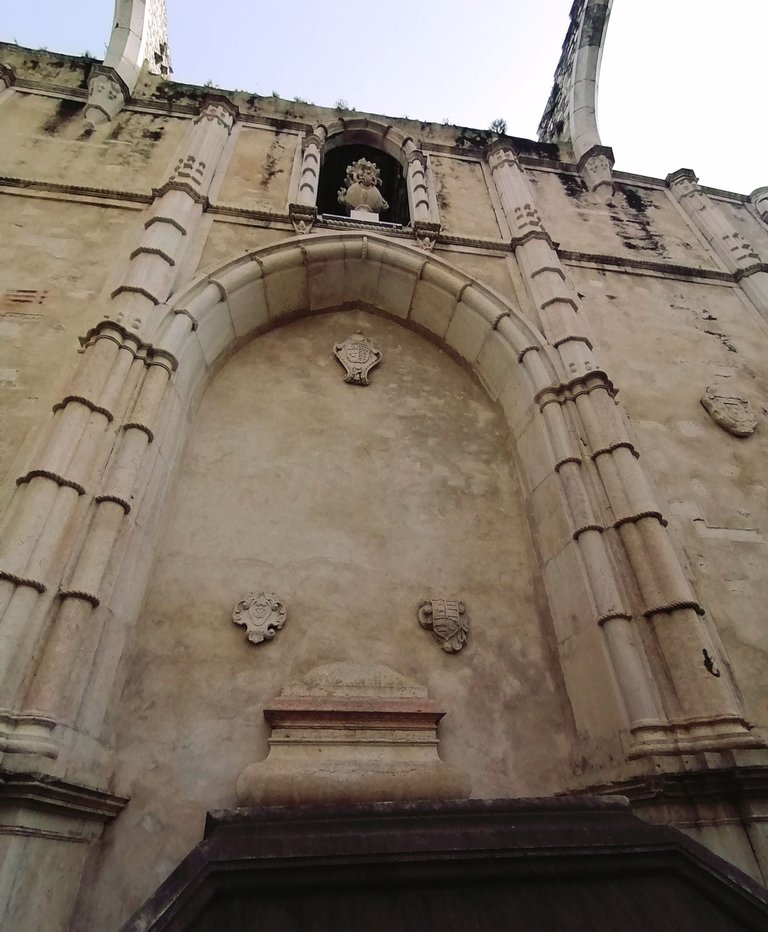
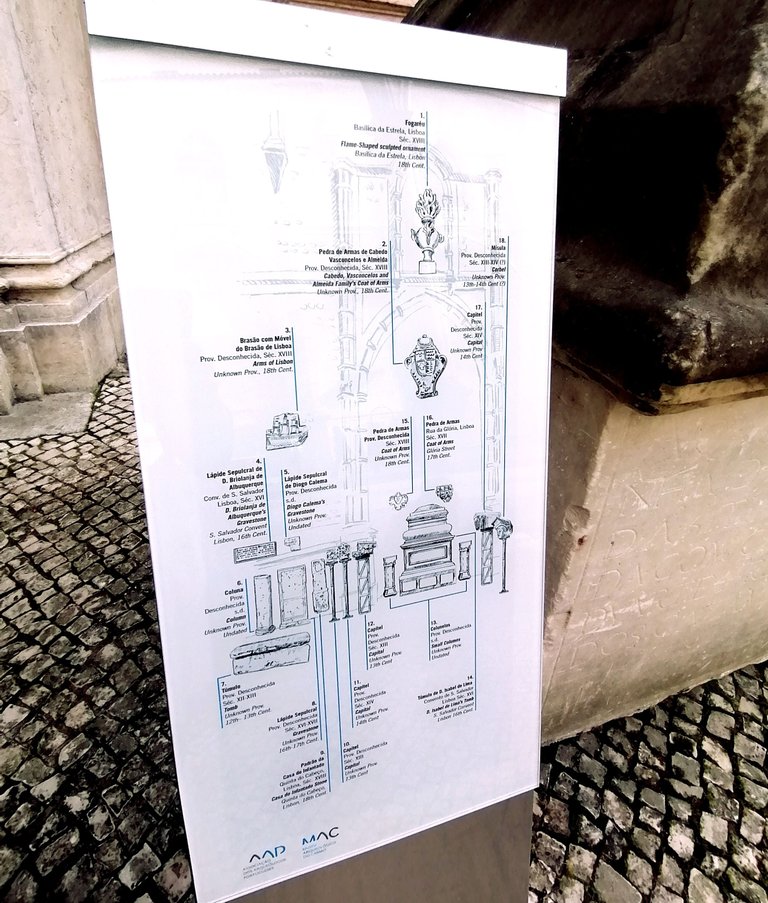
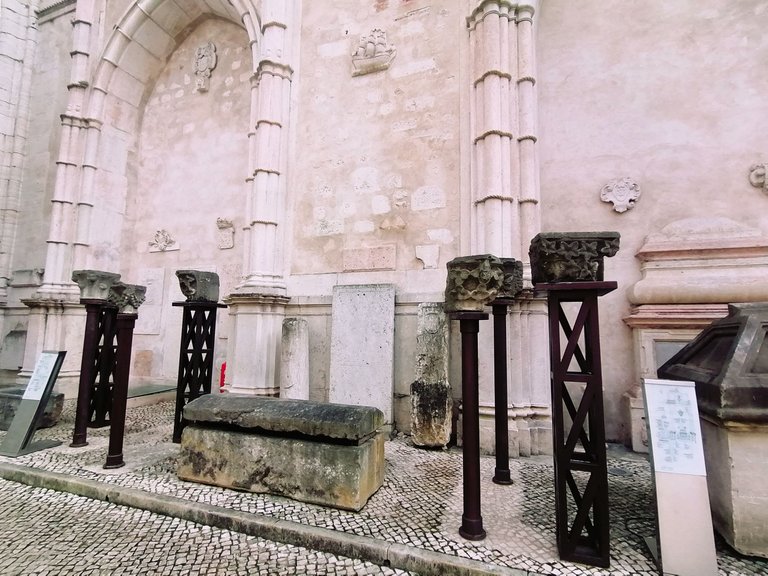
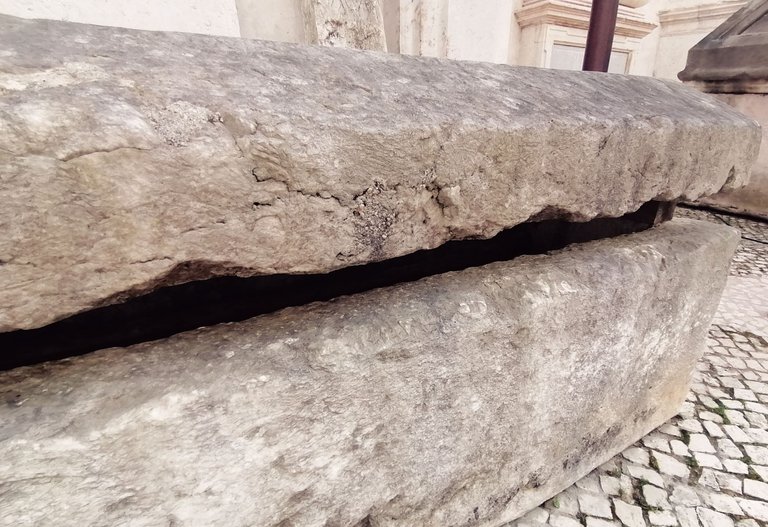
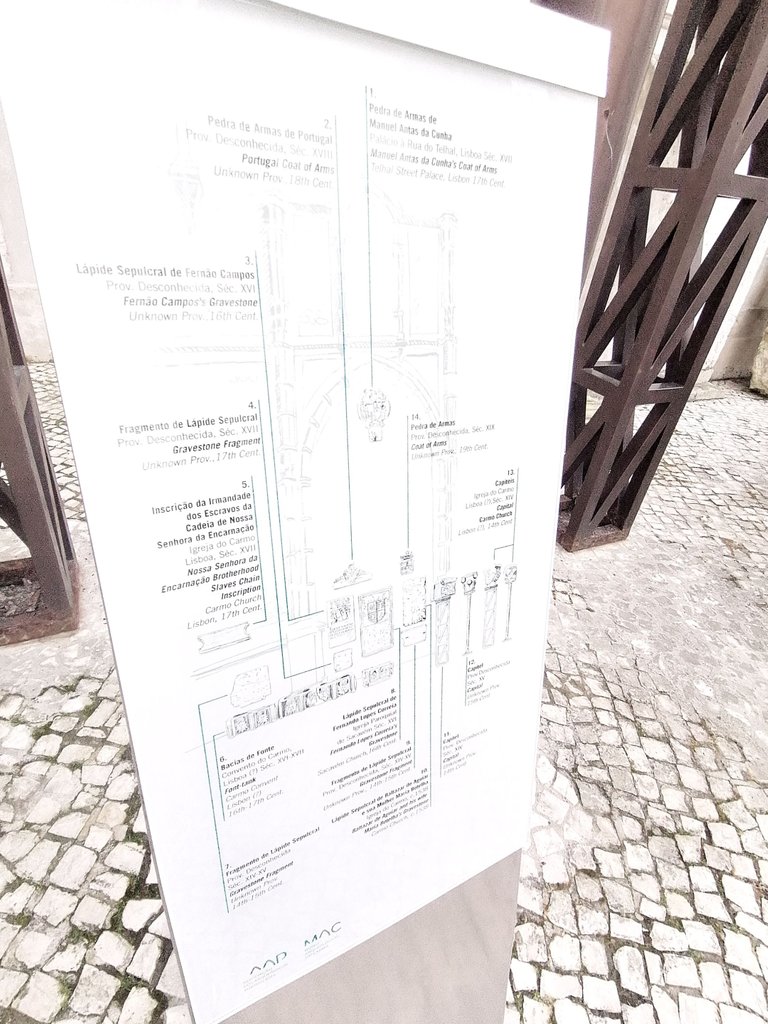
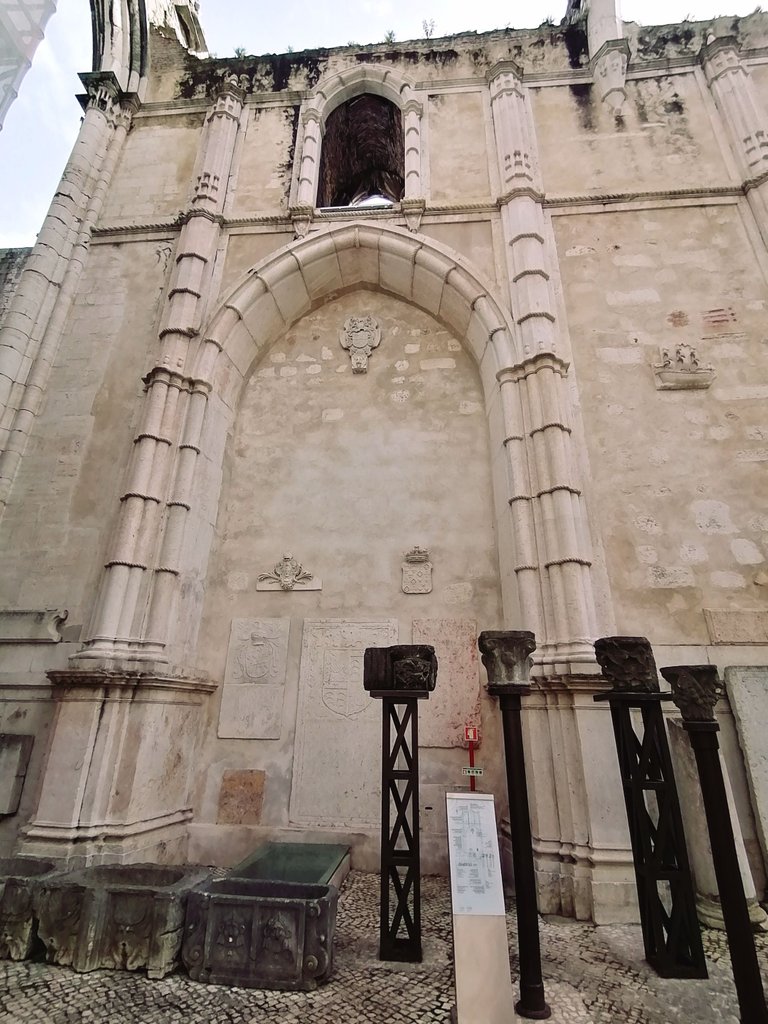
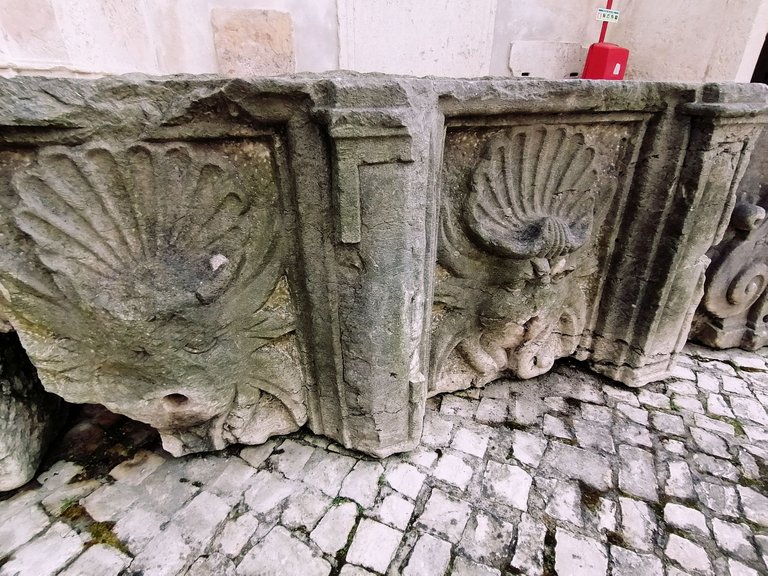
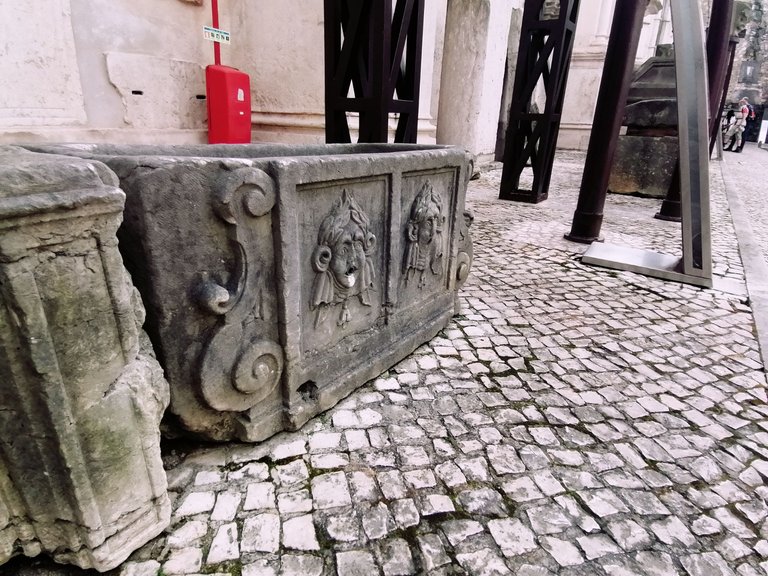
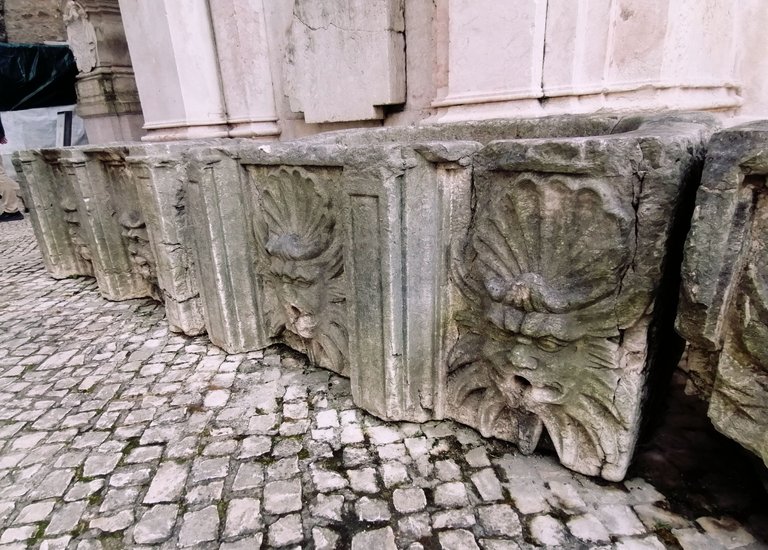



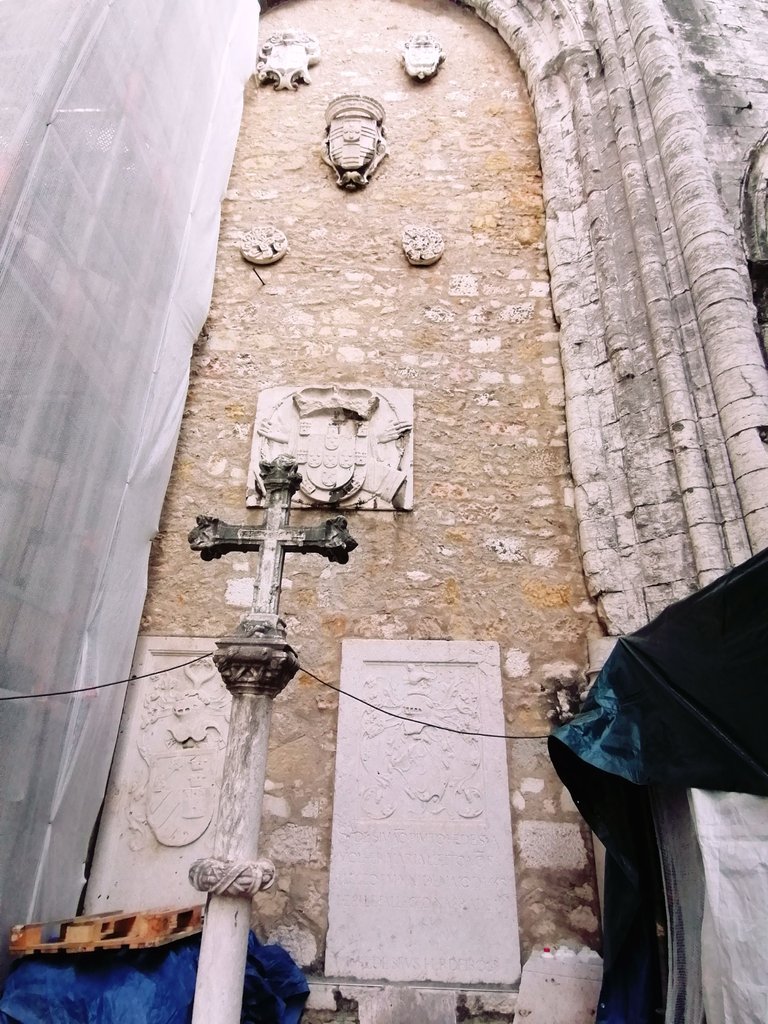
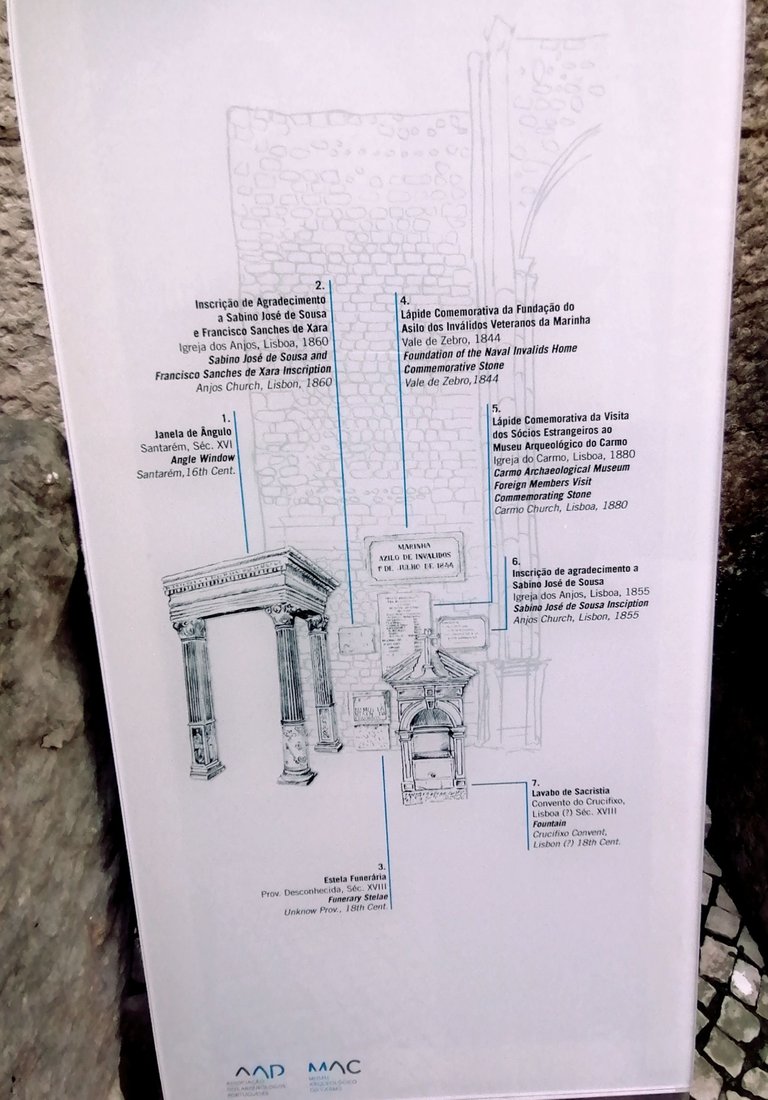
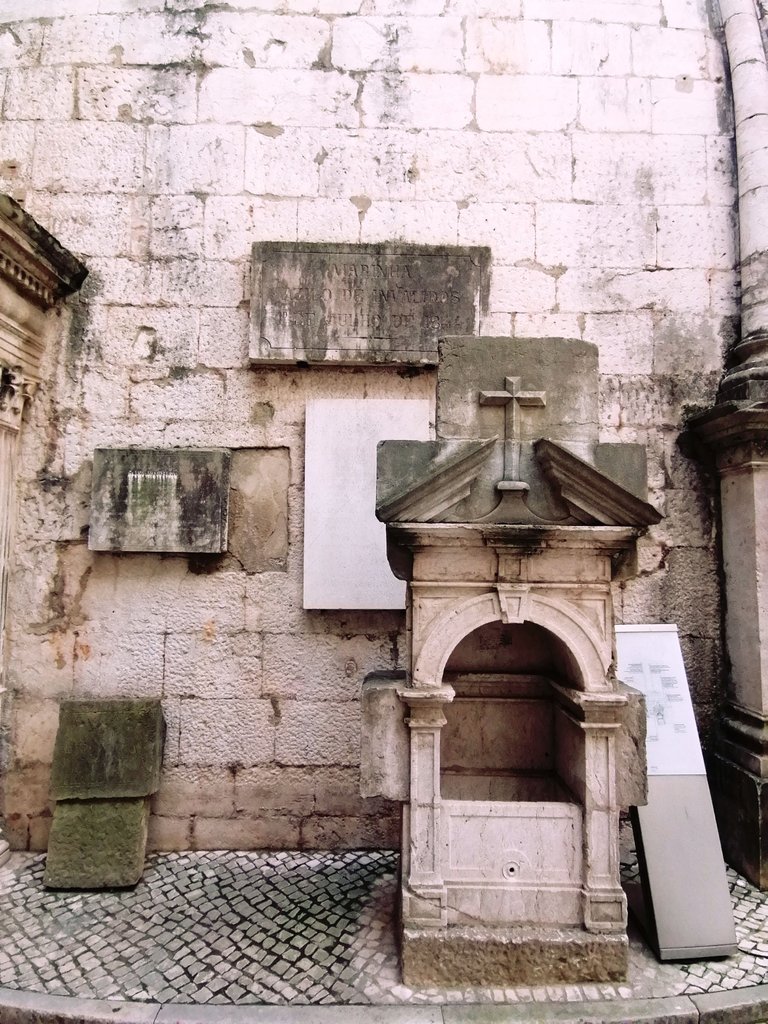
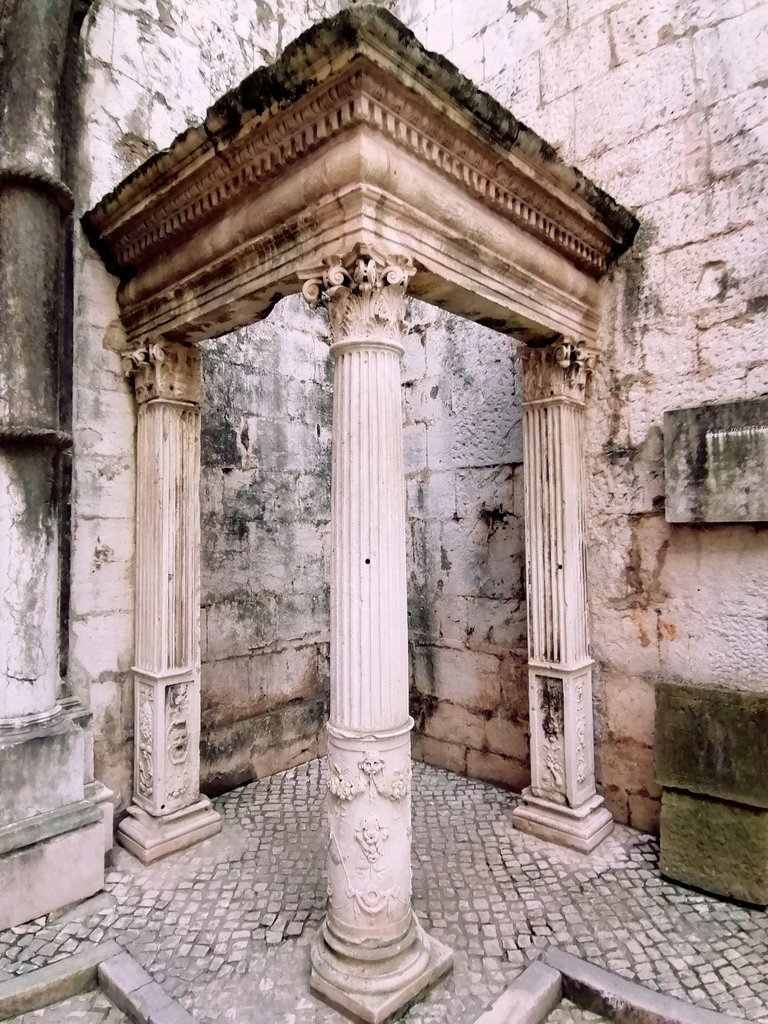
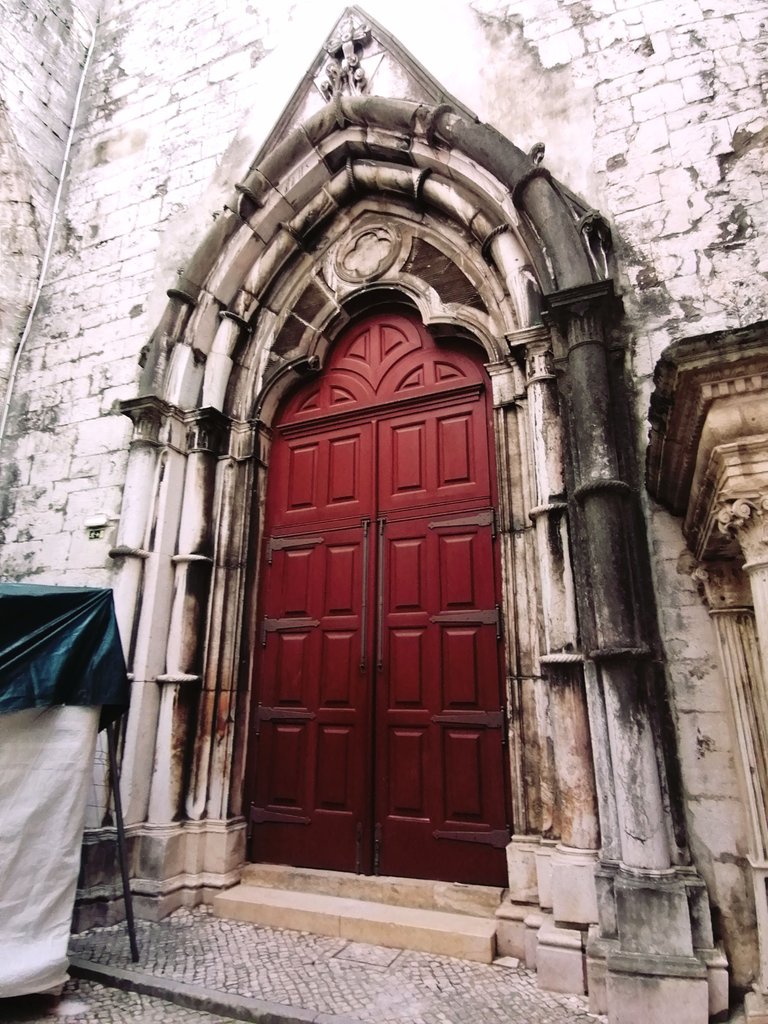
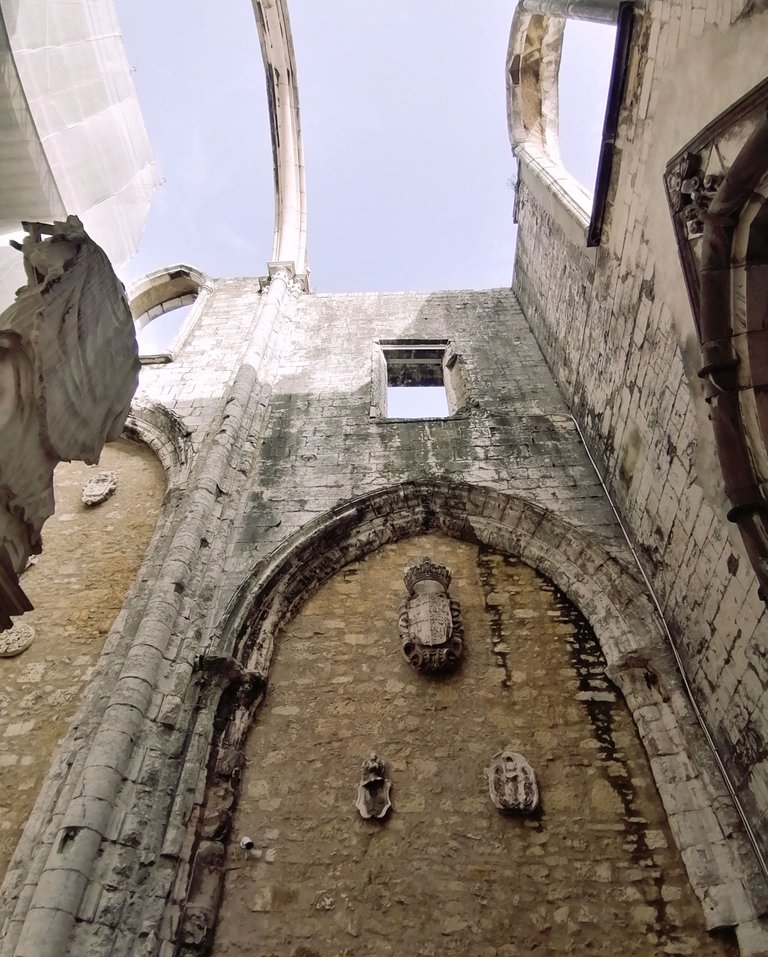
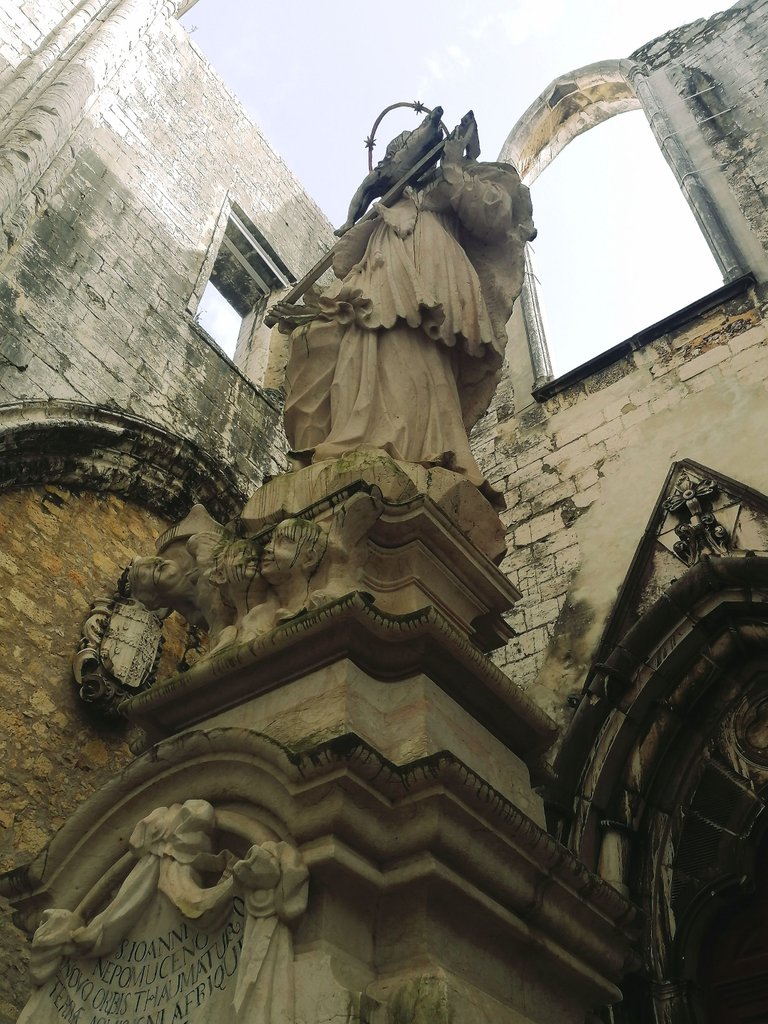
This head under the sculpture are looking a bit weird and freaky isn't it? I would like to know what was in the artist mind when creating this.
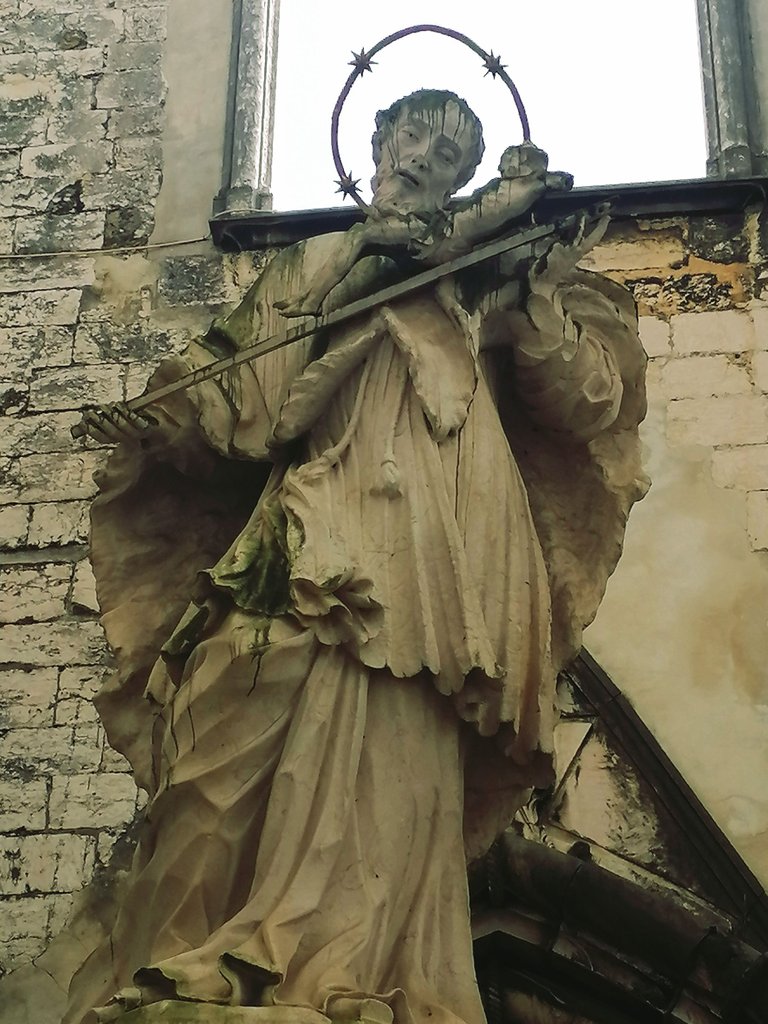
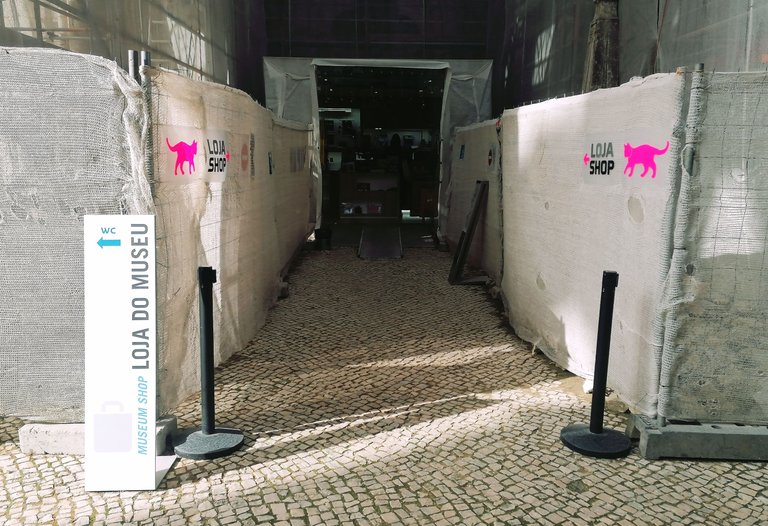
On the left you see the museums shop.
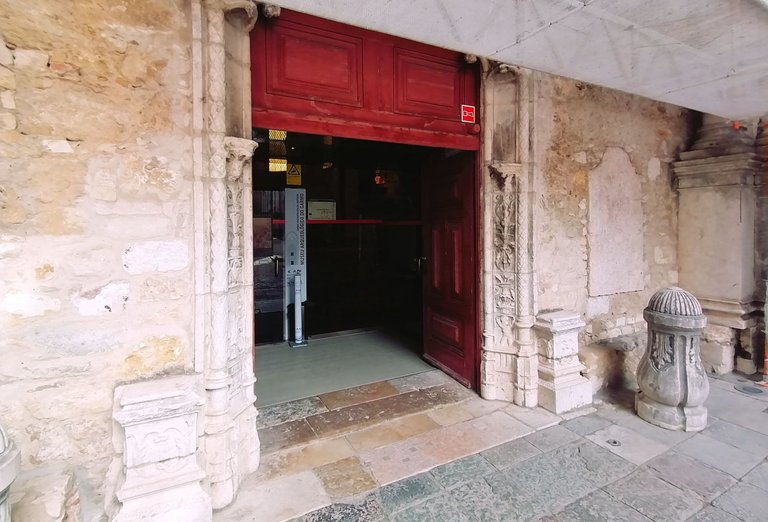
Finally, the entrance to the museums inside exhibition. Lets gooooo.
lets walk in
This Museum is located in the Chiado neighborhood of Lisbon, Portugal. The museum is housed in the ruins of the Carmo Convent, which was largely destroyed during the 1755 Lisbon earthquake. Yup, I often write about this earthquake because it destroyed soooo much here and it was a big thing for Portugal, even in school this we have to learn.
The museum's collection includes a variety of artifacts from ancient Portugal, including Roman, Visigothic, and Moorish pieces, as well as artifacts from other cultures such as Egypt and Greece and even India, yes, i was surprised to see an artifact from india there. The museum is also known for its collection of medieval Portuguese tombstones and sculptures.
But two things mostly interested me.... The mummified girls and the india stele. I will show you, no worries.
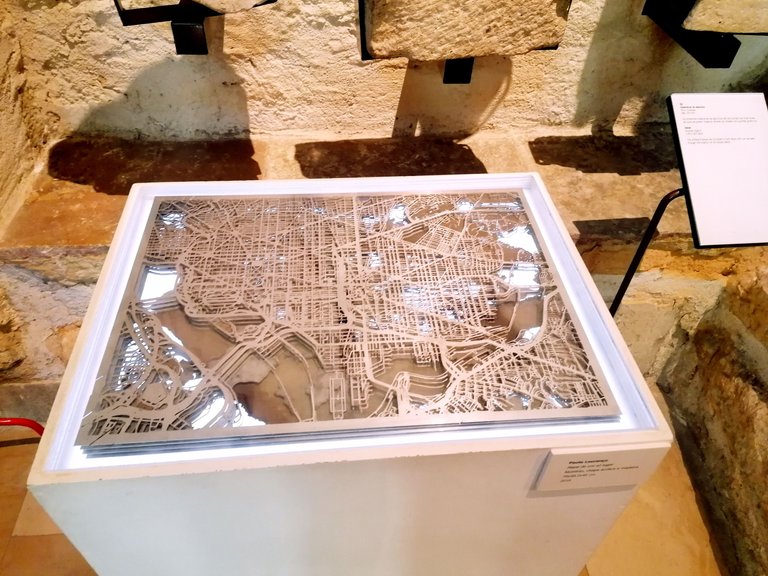
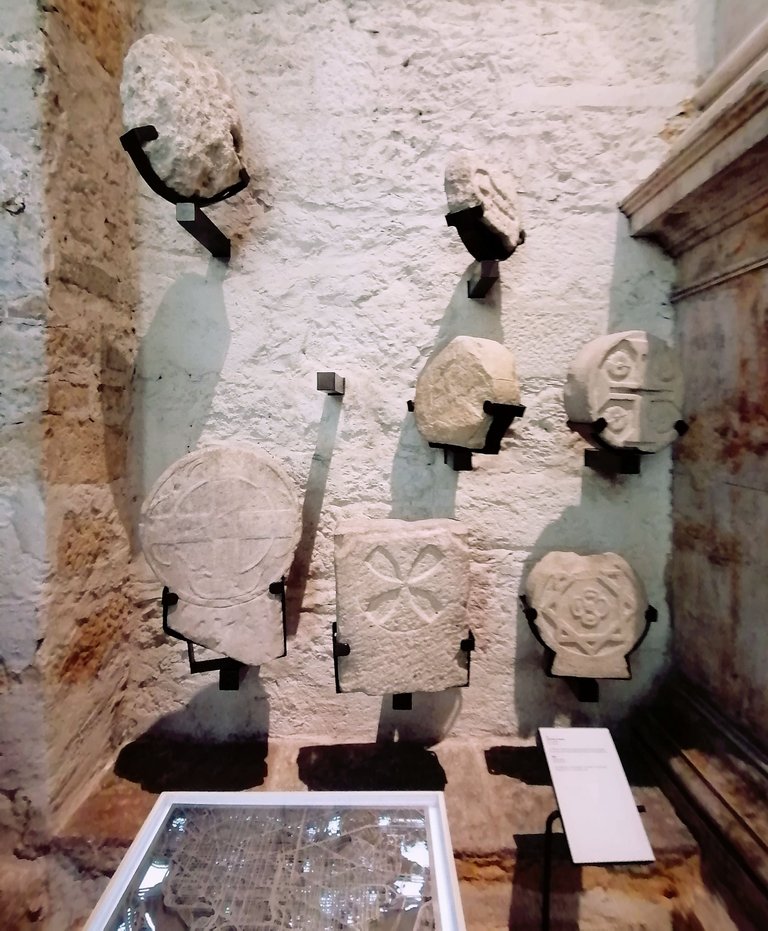
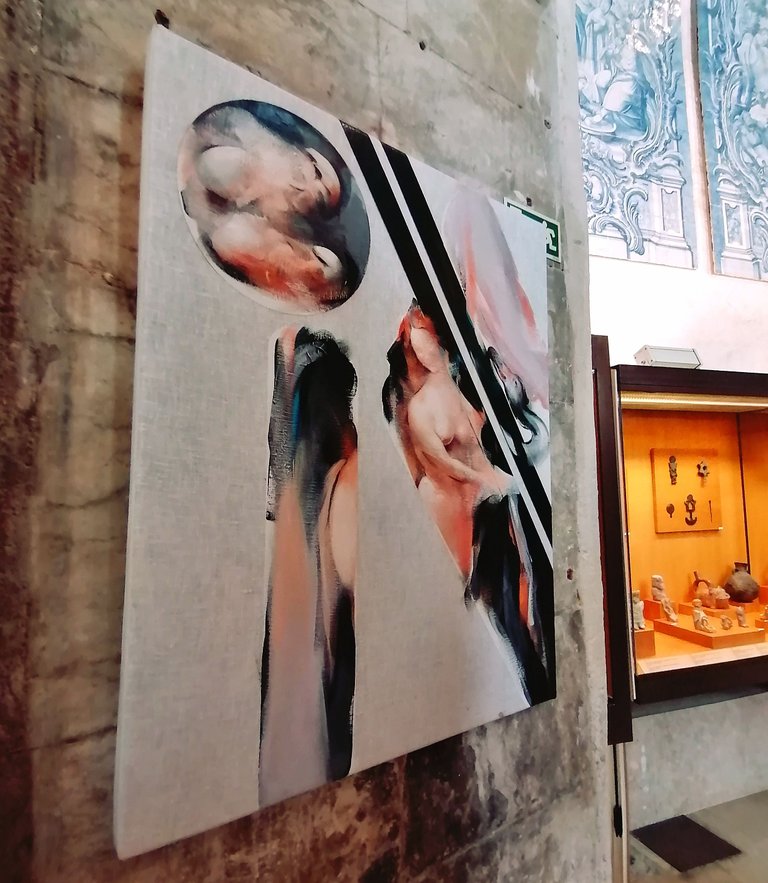
This was directly at the entrance.
The museum is divided into five rooms, each showcasing a different aspect of the collection(s).
Room 1

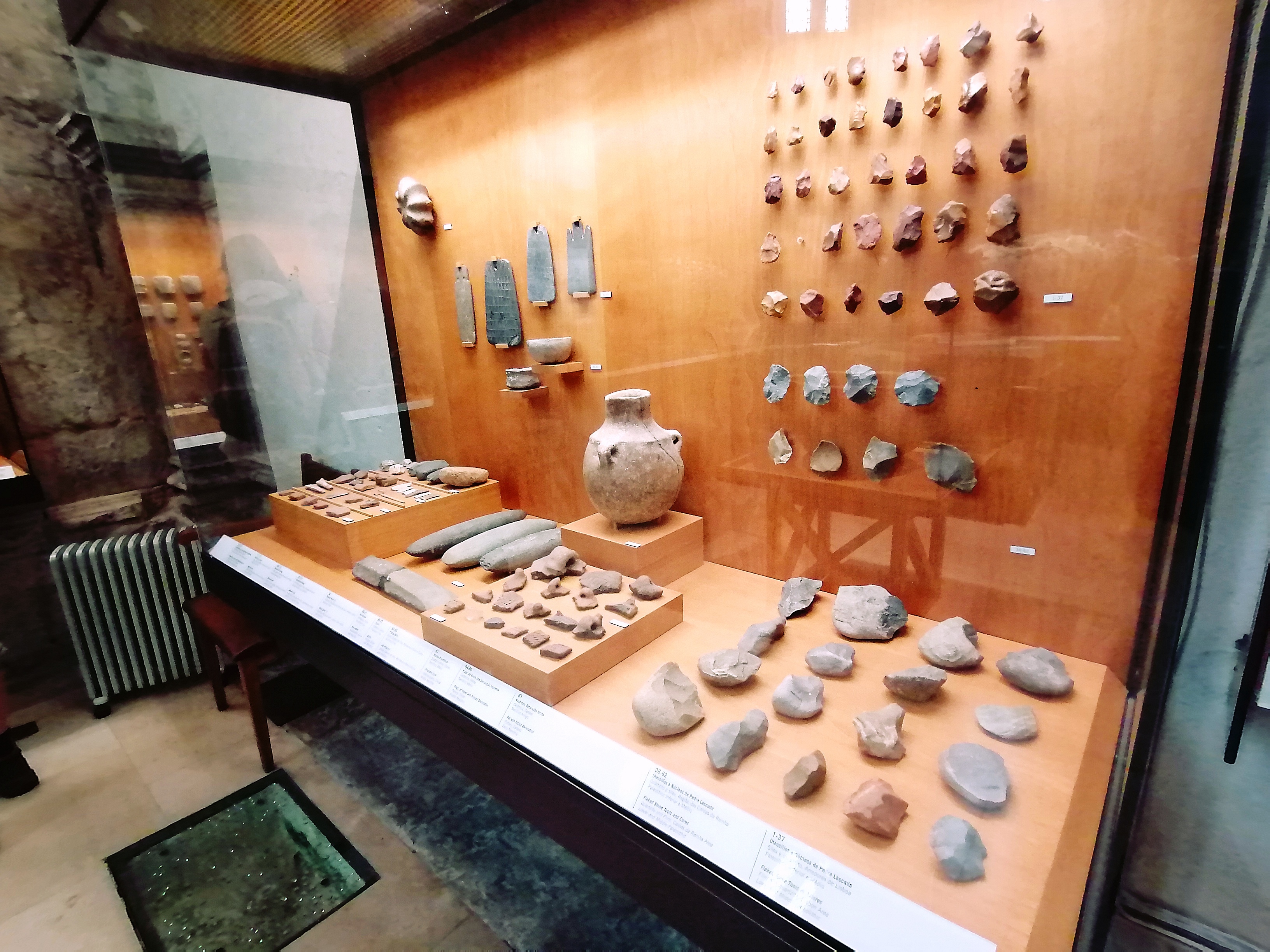
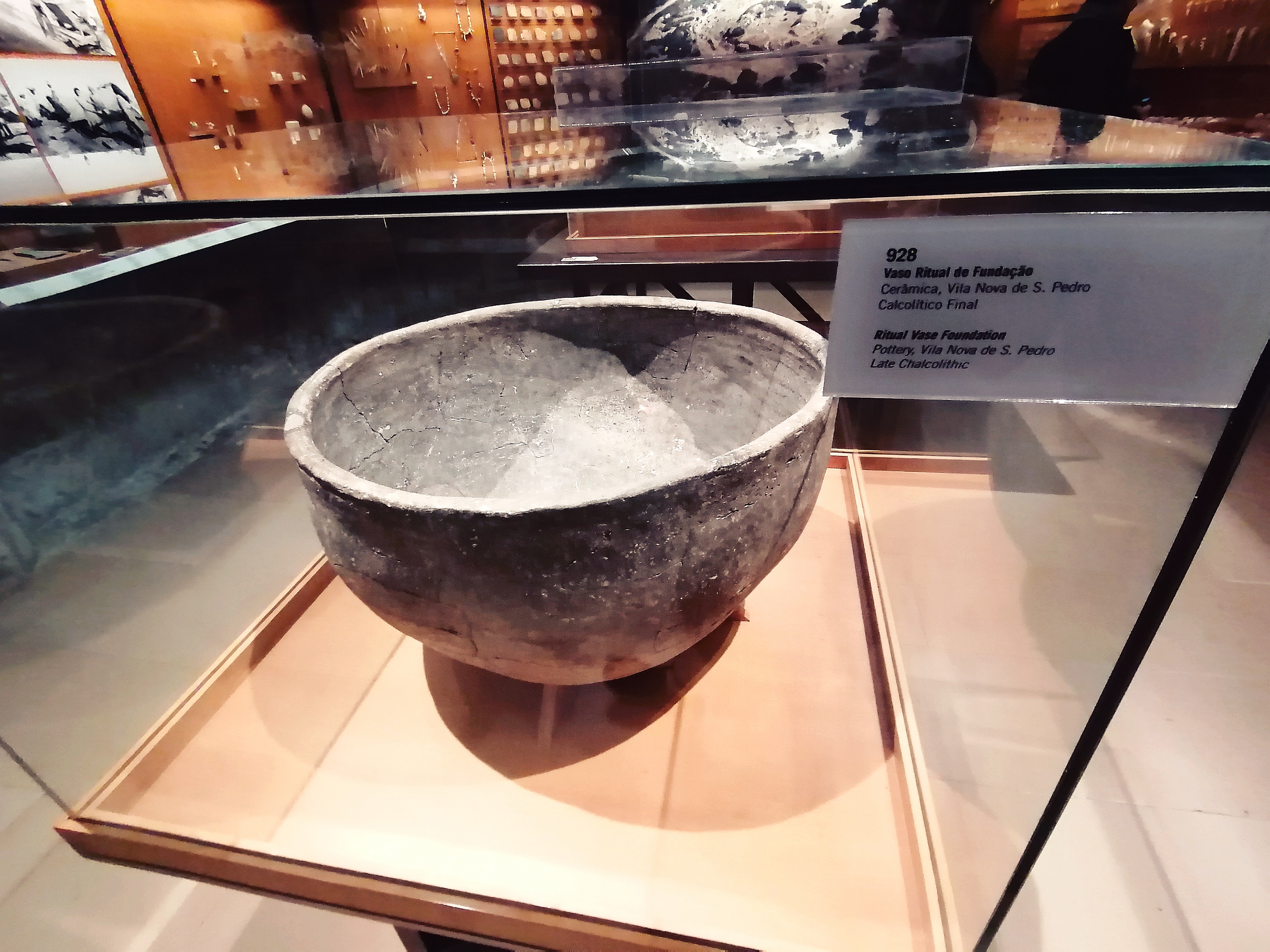


The room with the number 1 on it contains a variety of artifacts from ancient Portugal.

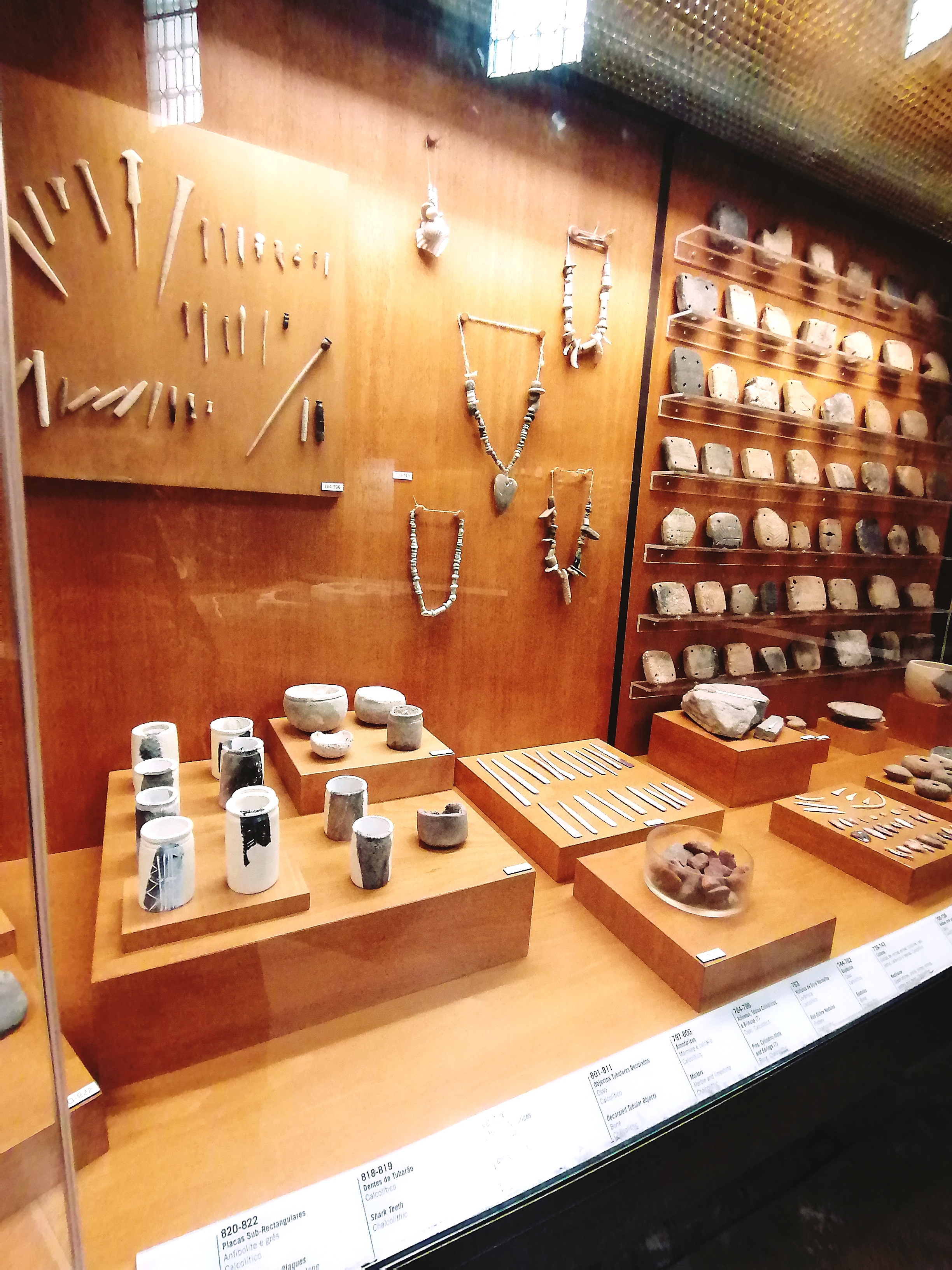


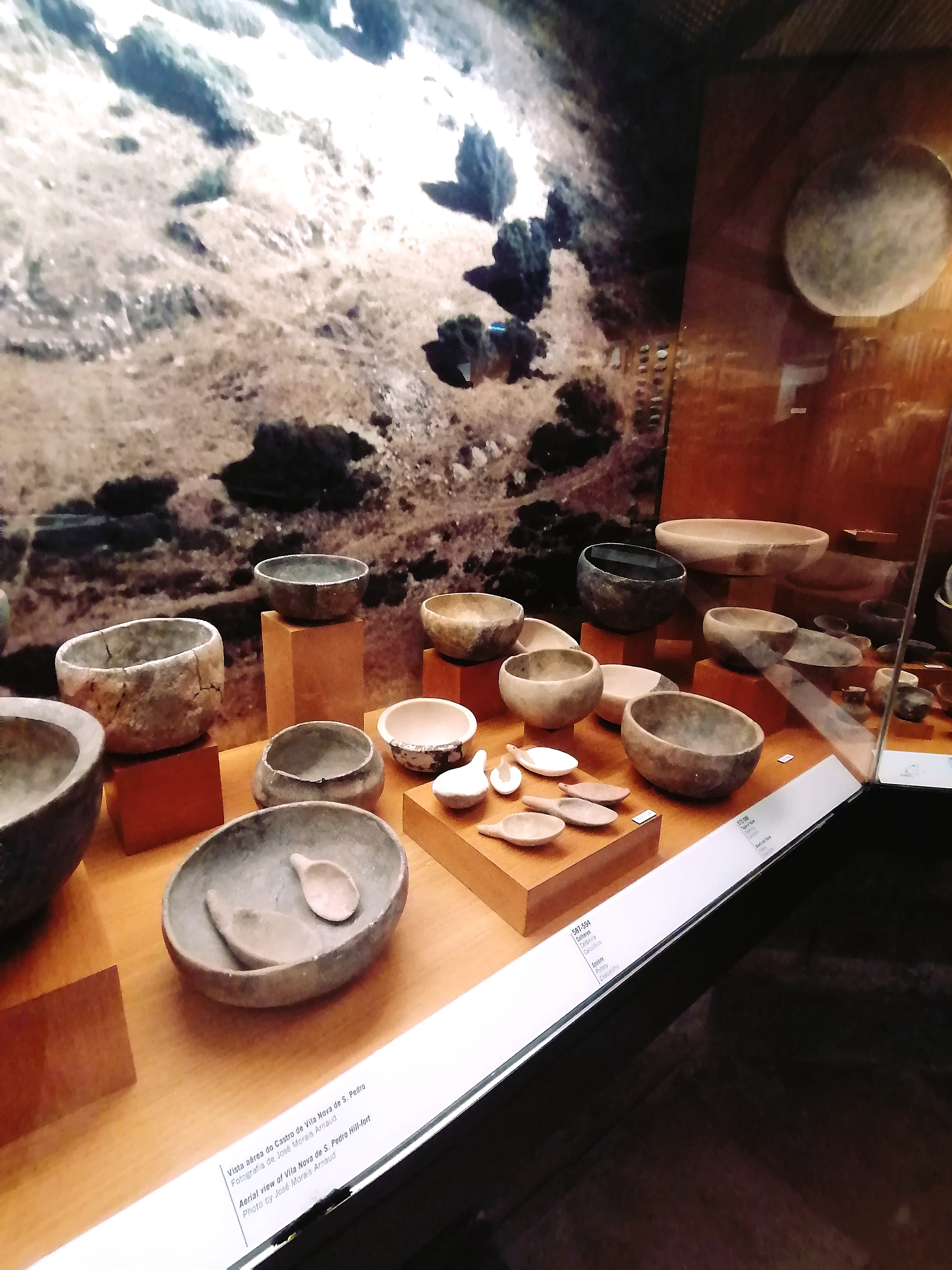

One of the highlights of this room is the statue of the Luso-Roman god Endovelicus, which dates back to the 2nd century. Or what I know, they praise this statue much and a lot of people say its the highlight but surely you will find your personal highlight there too.
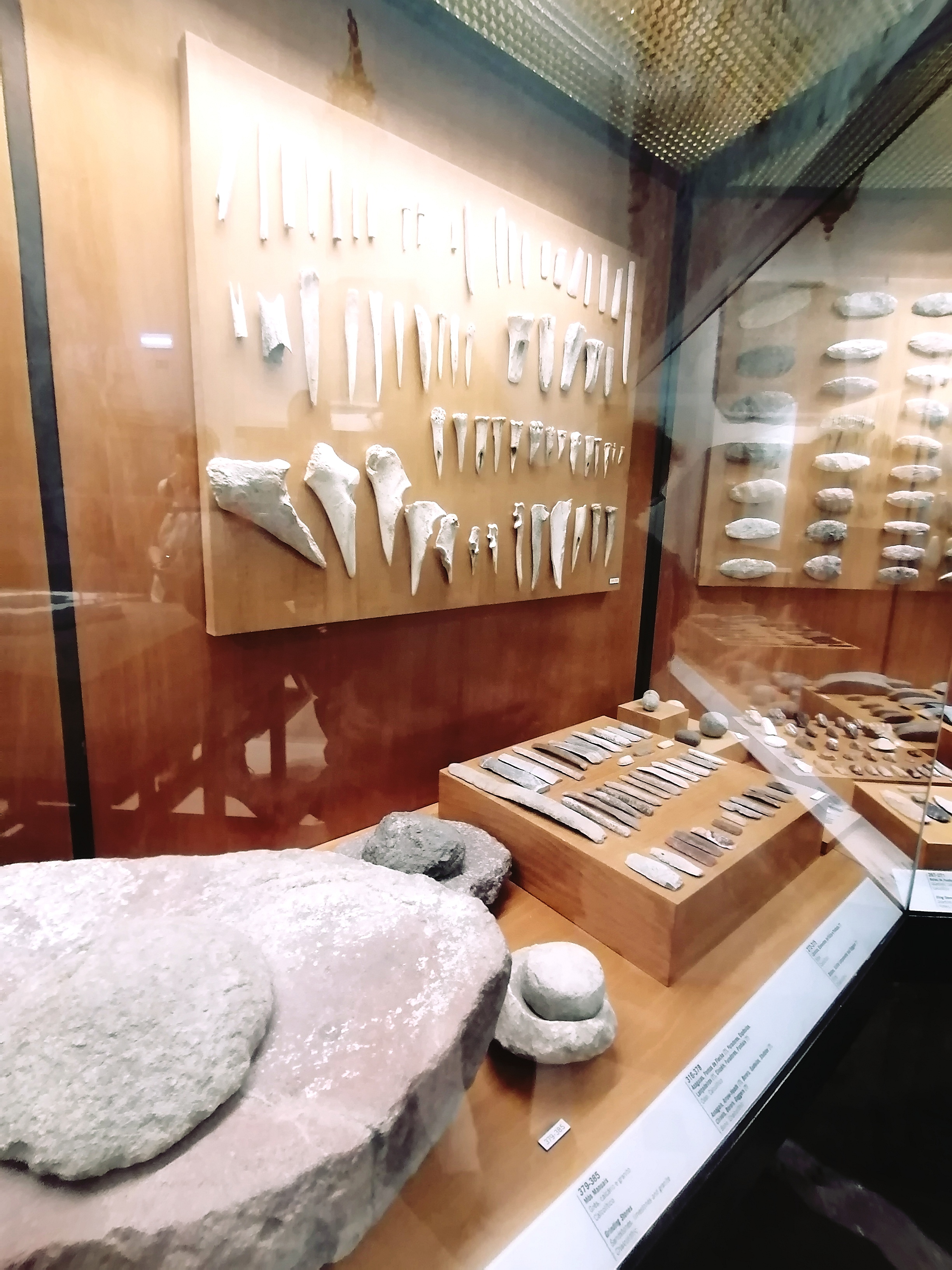
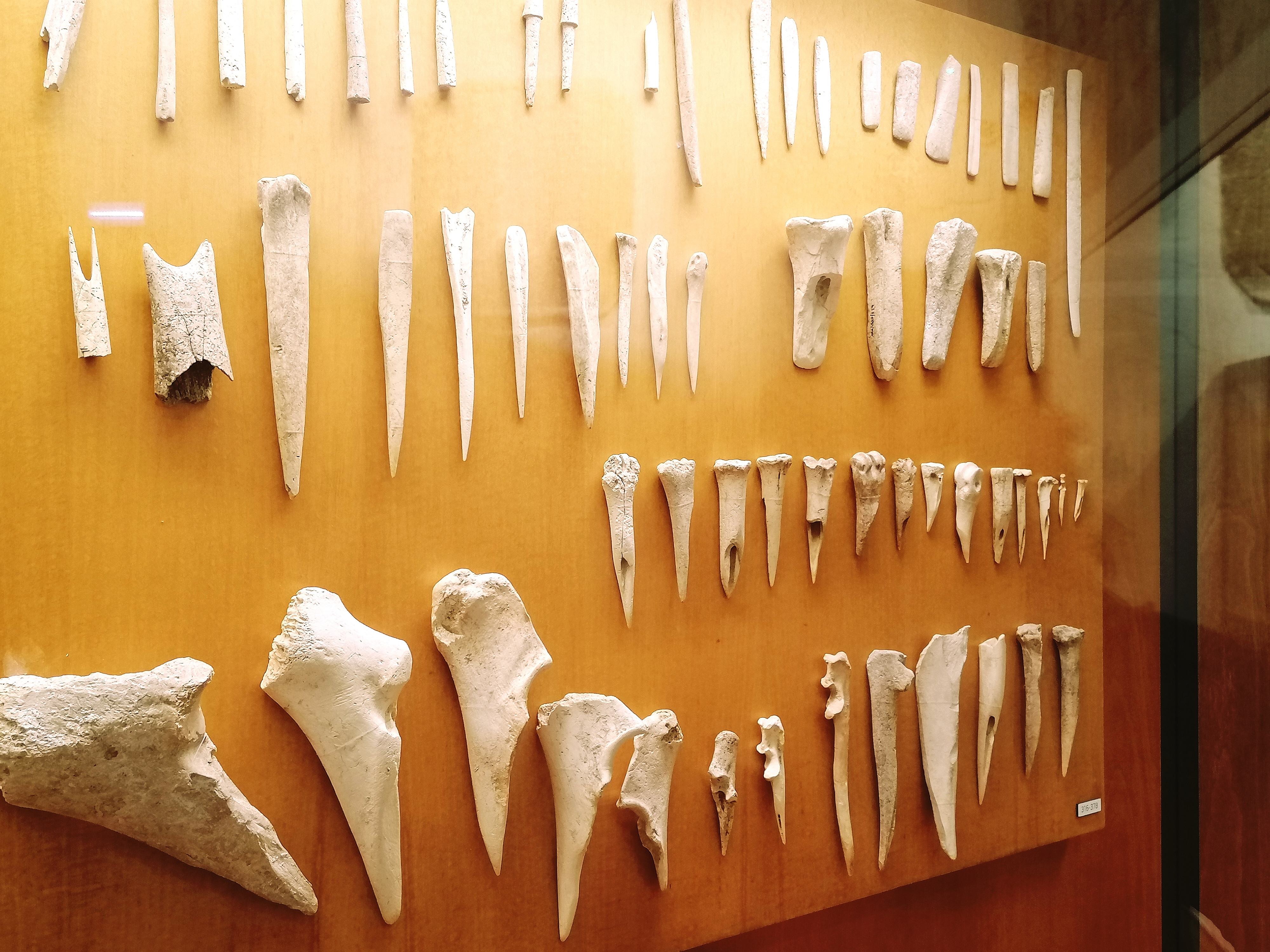
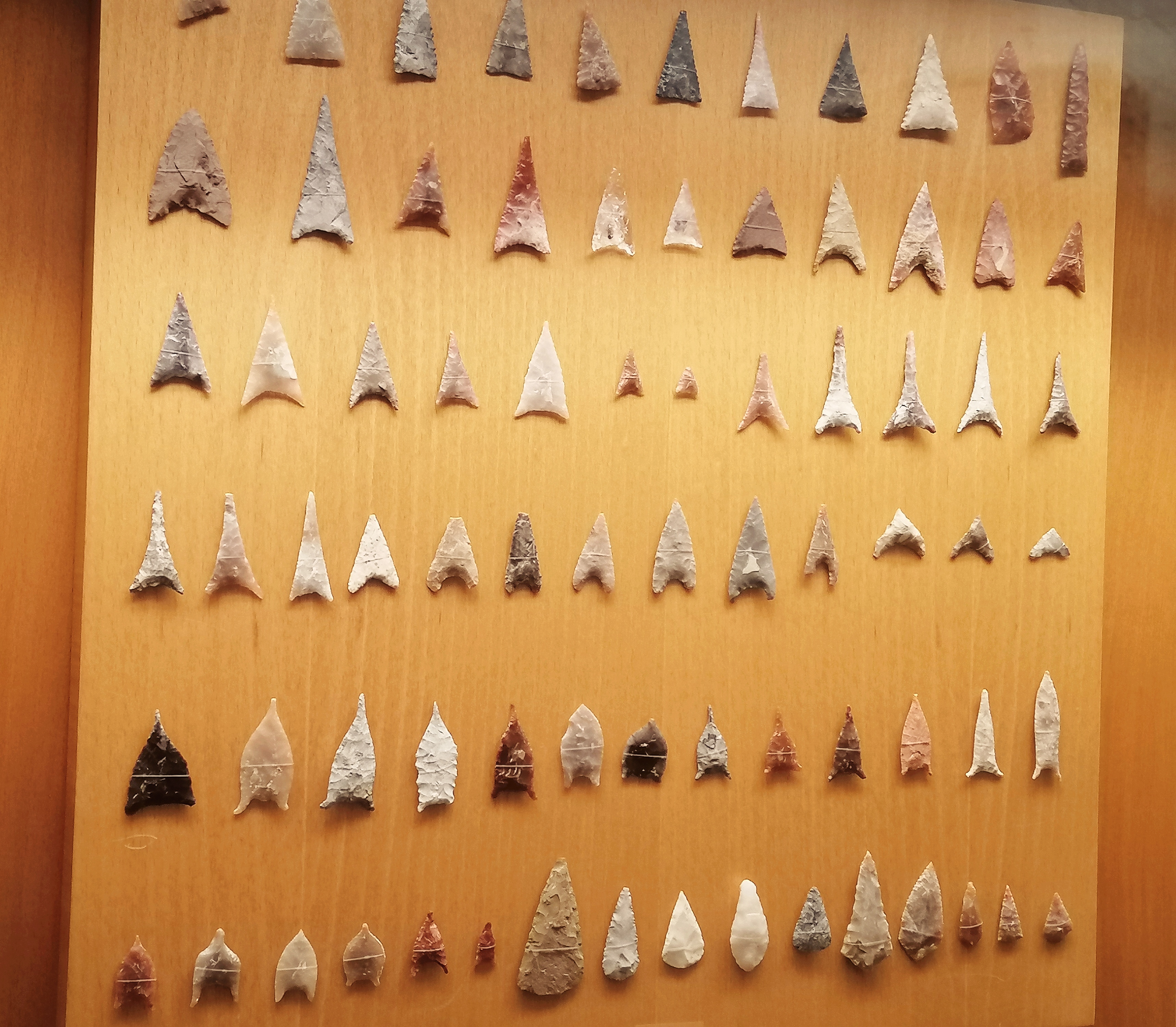

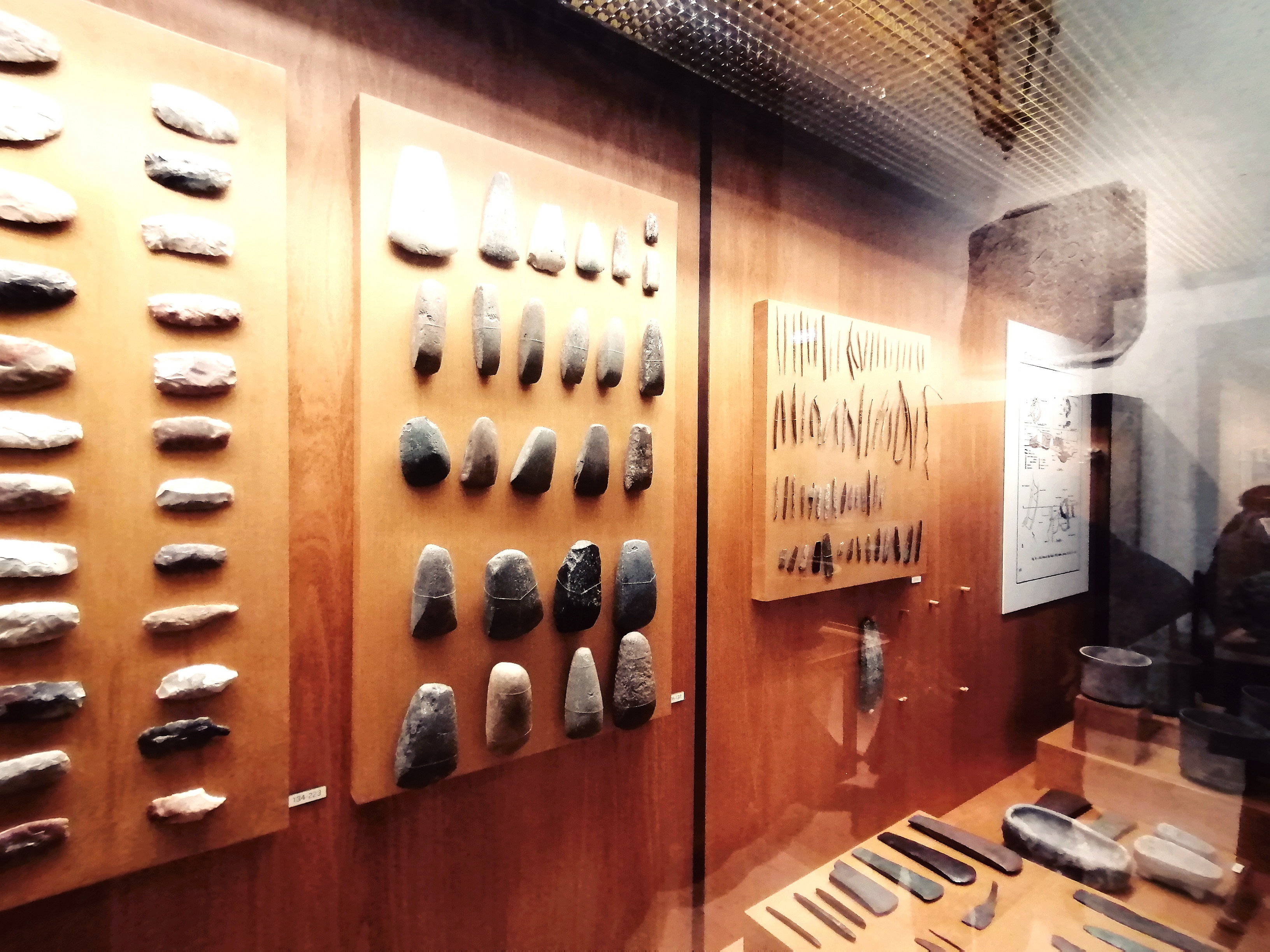


Other notable pieces in this room include Roman mosaics, Visigothic and Mozarabic fragments, and a collection of medieval Portuguese tombstones. To see this tombstones was a bit weird because its associated with death but on the other hand it was super interesting to see how they looked like.
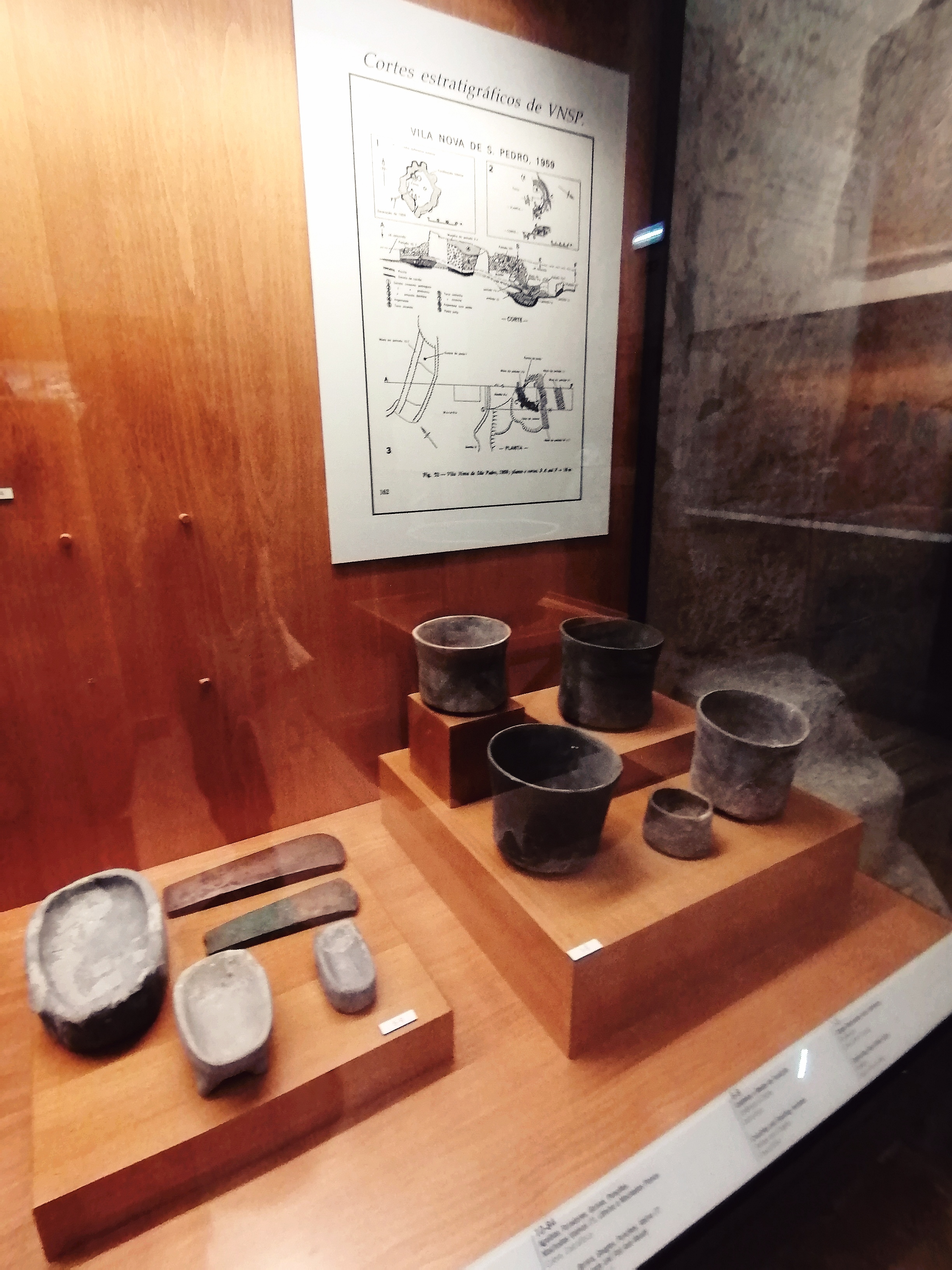
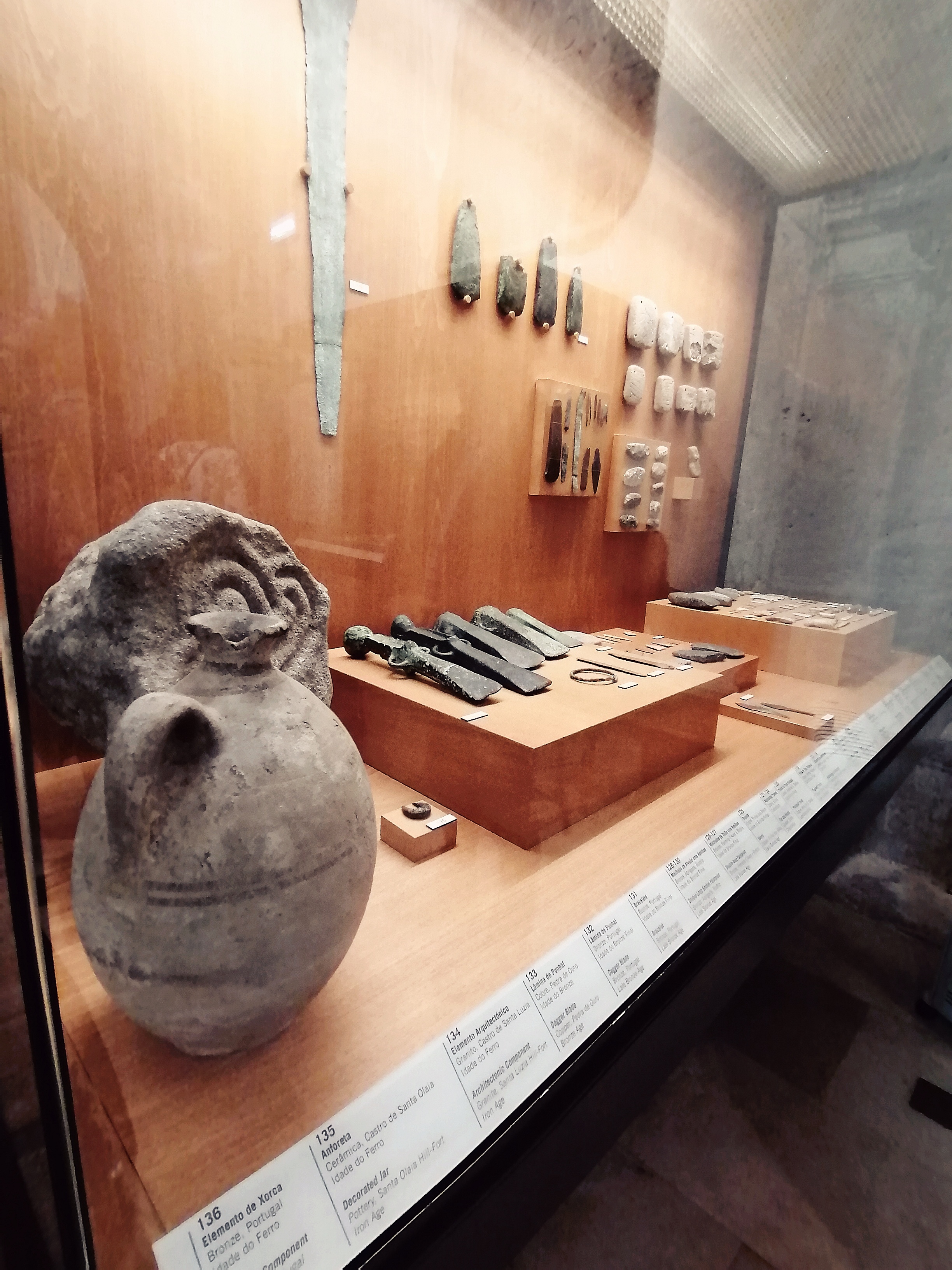
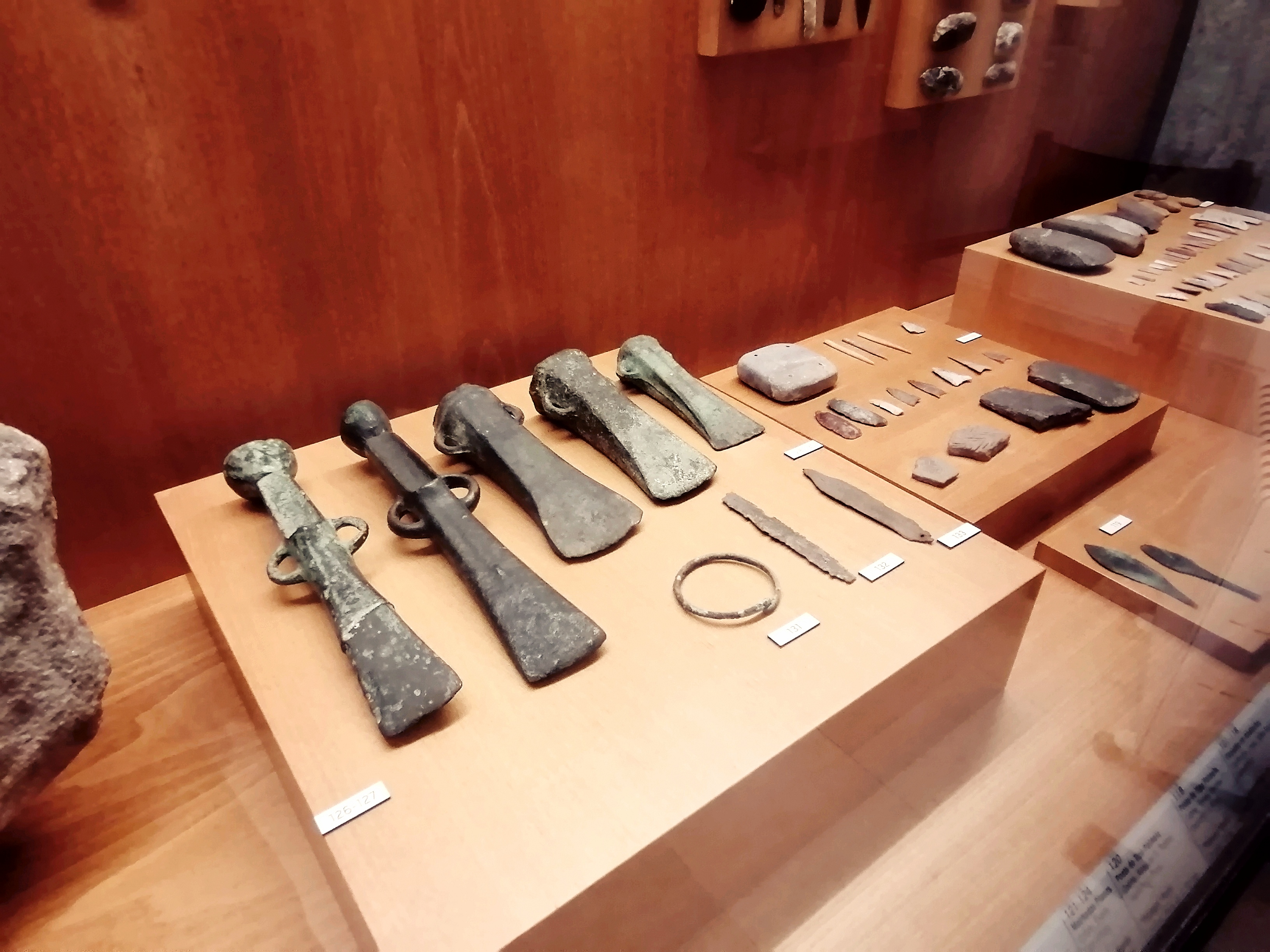
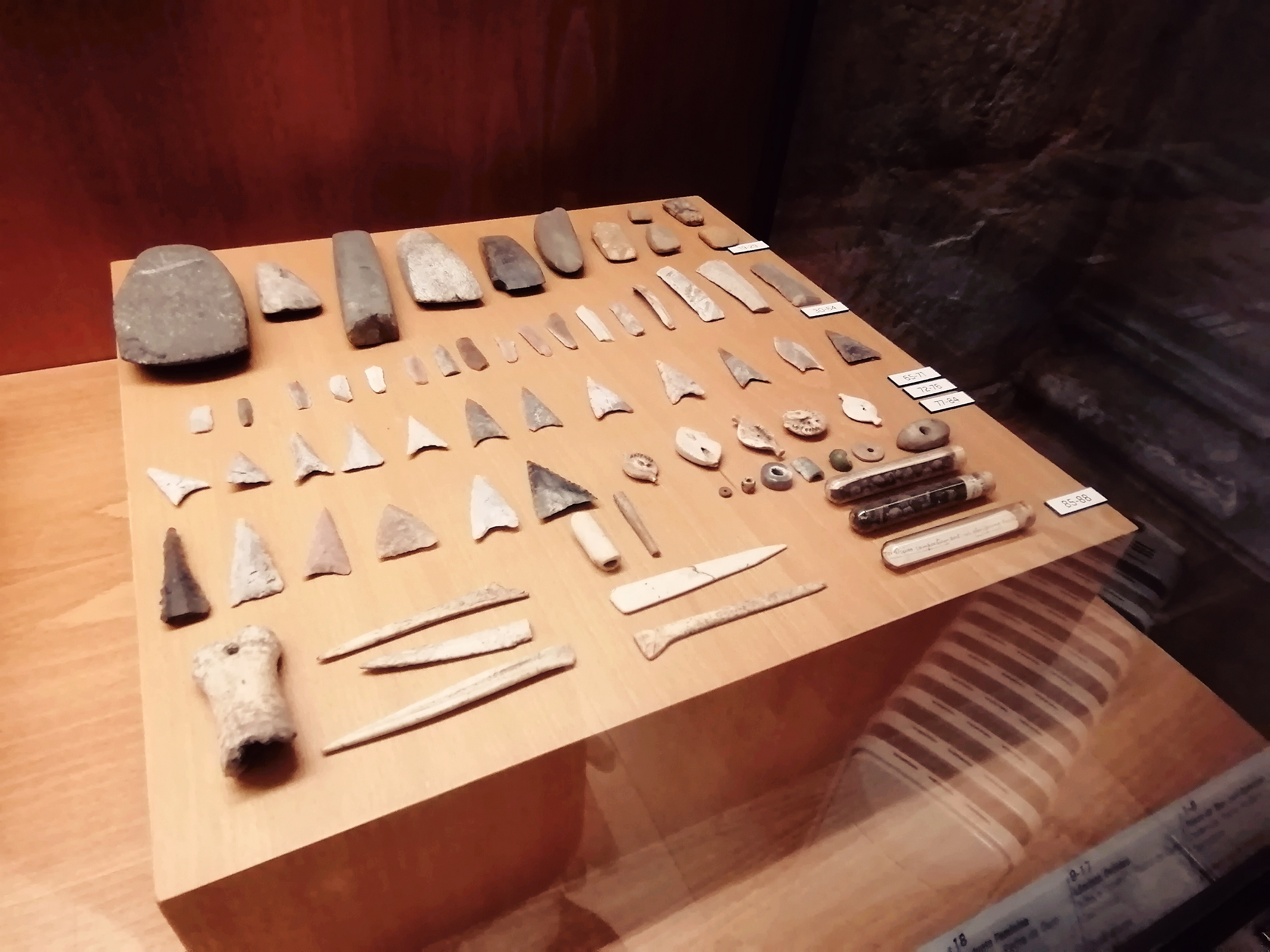
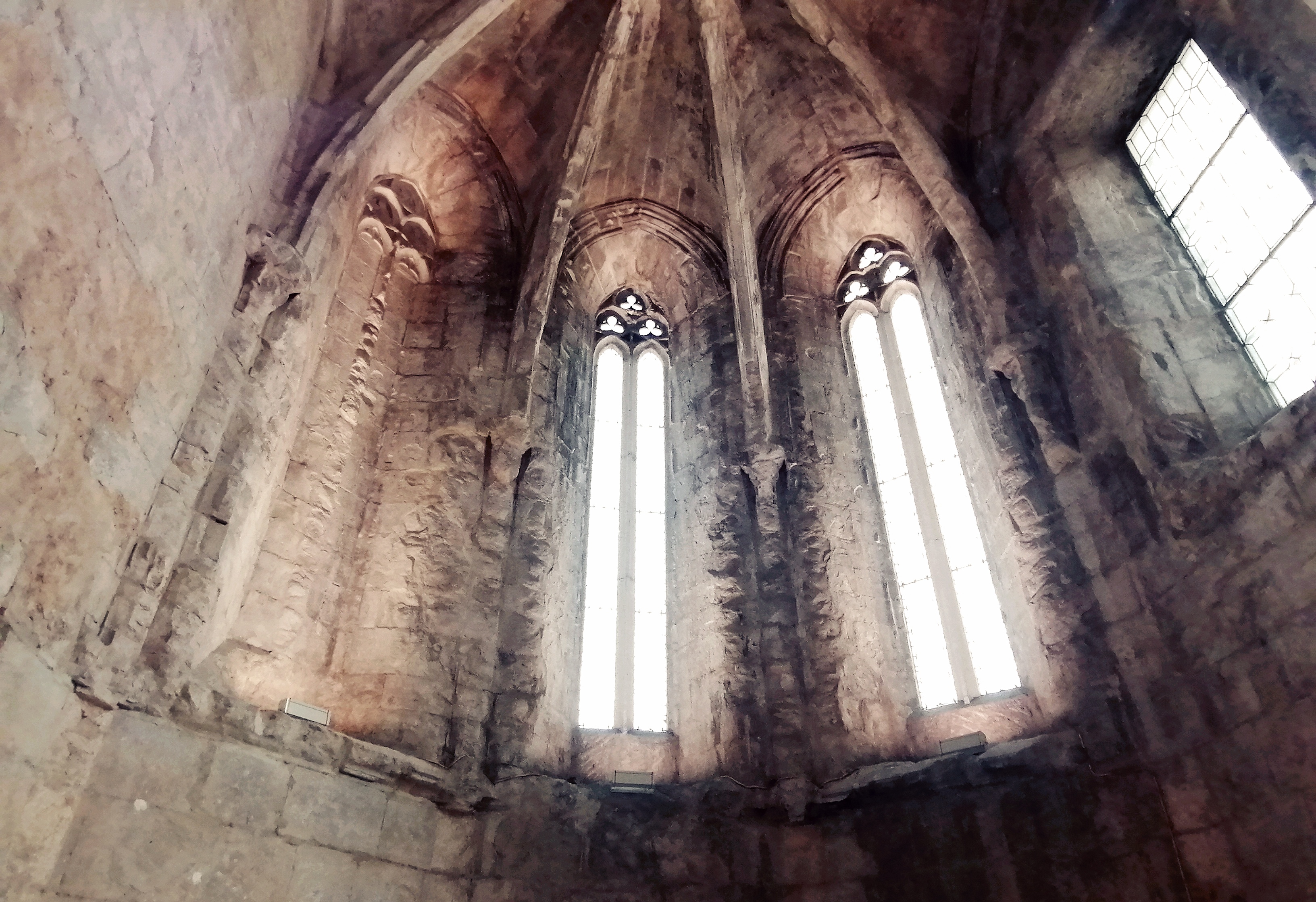
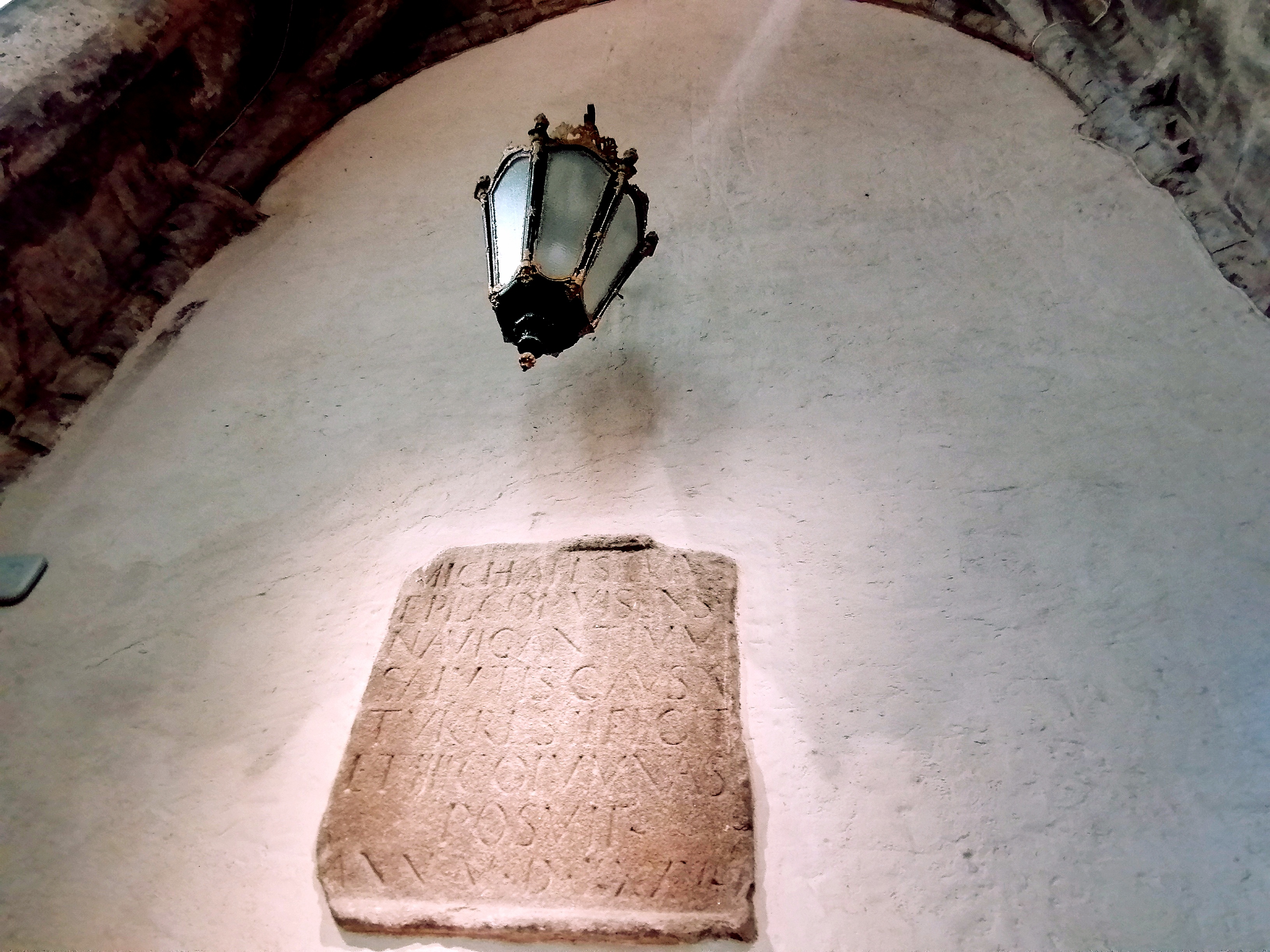

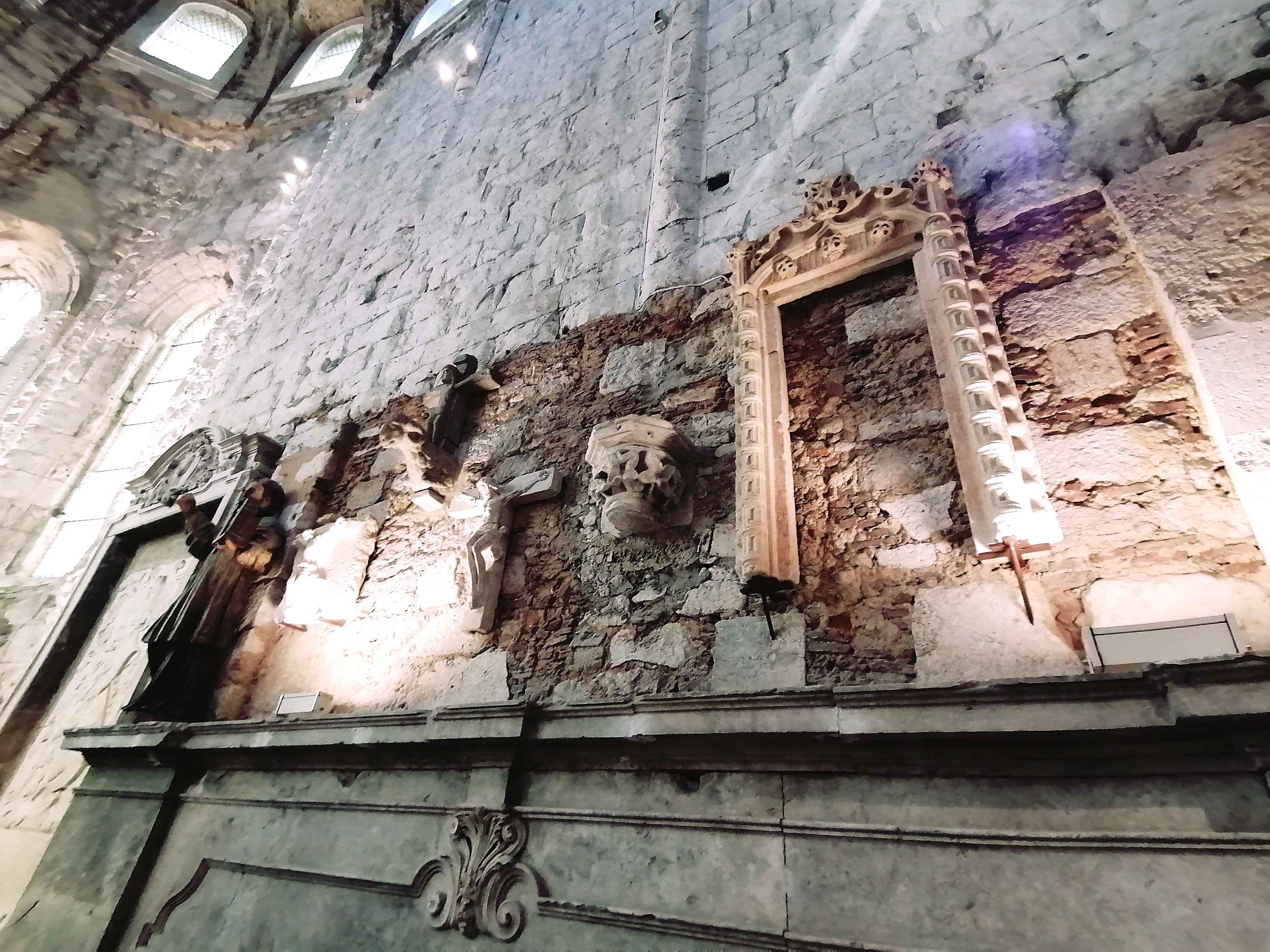
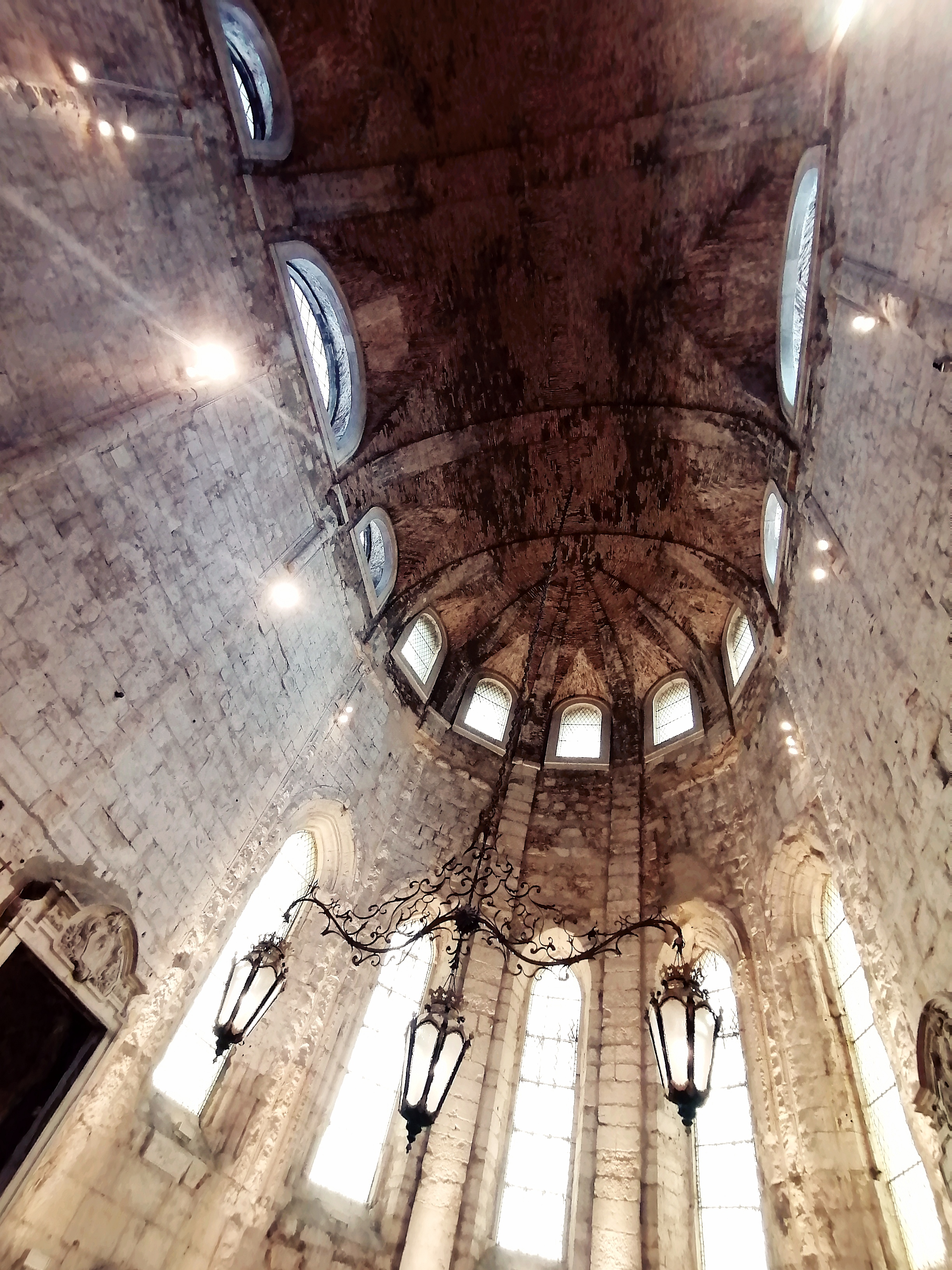
Room 2
The second room is dedicated to the history of Lisbon aka Portugal. The focus is on Lisbons Moorish period.
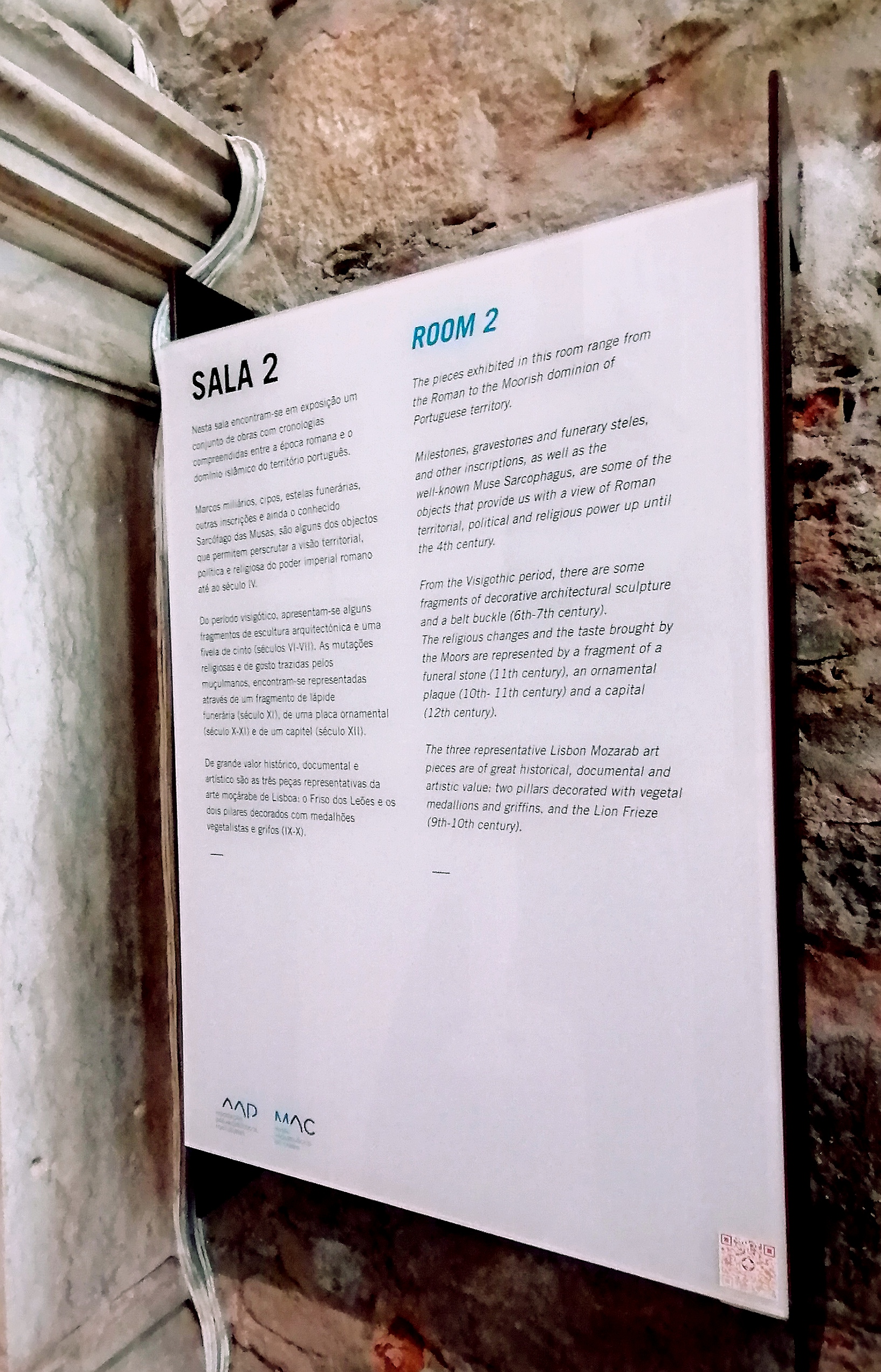

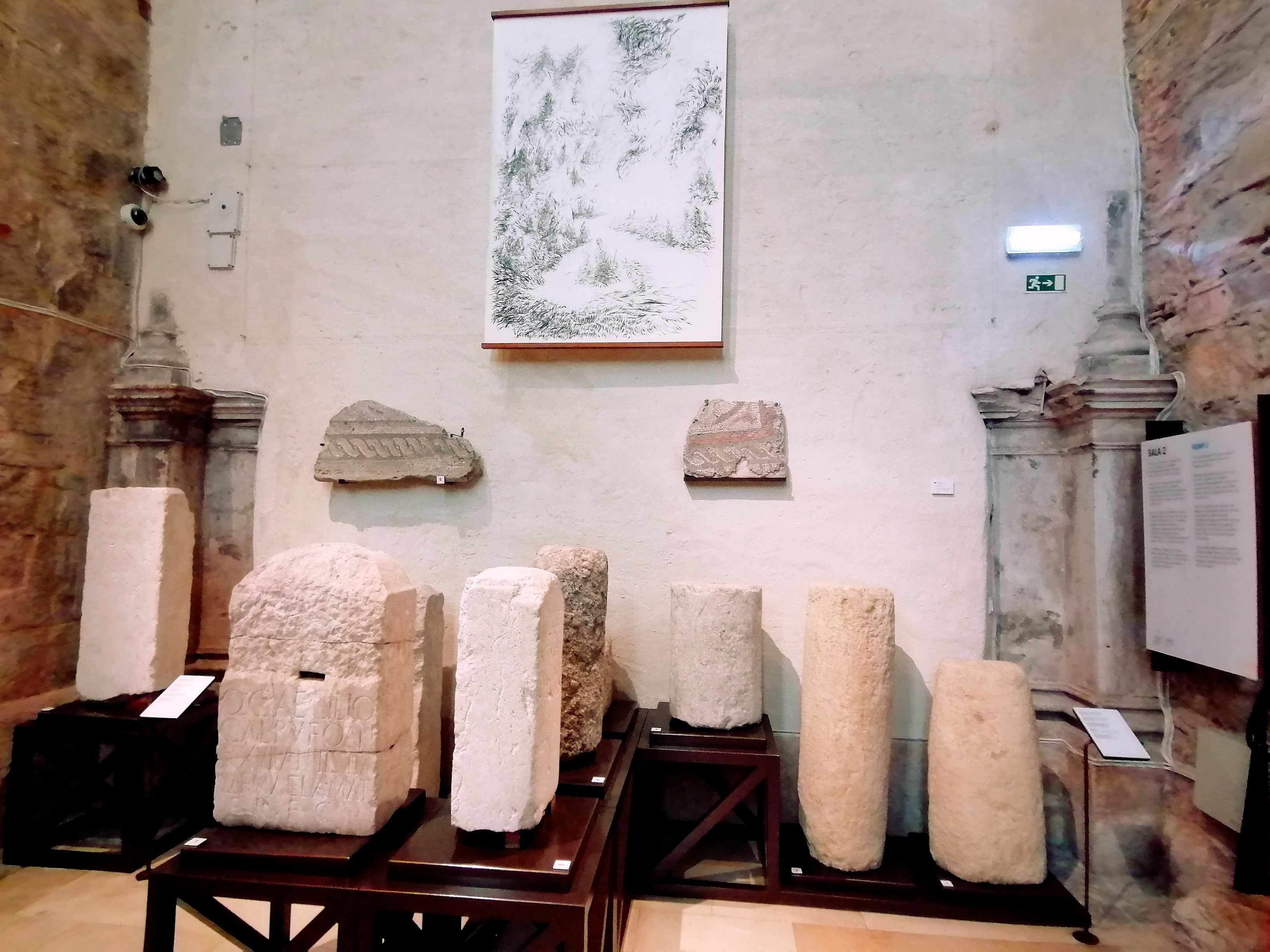



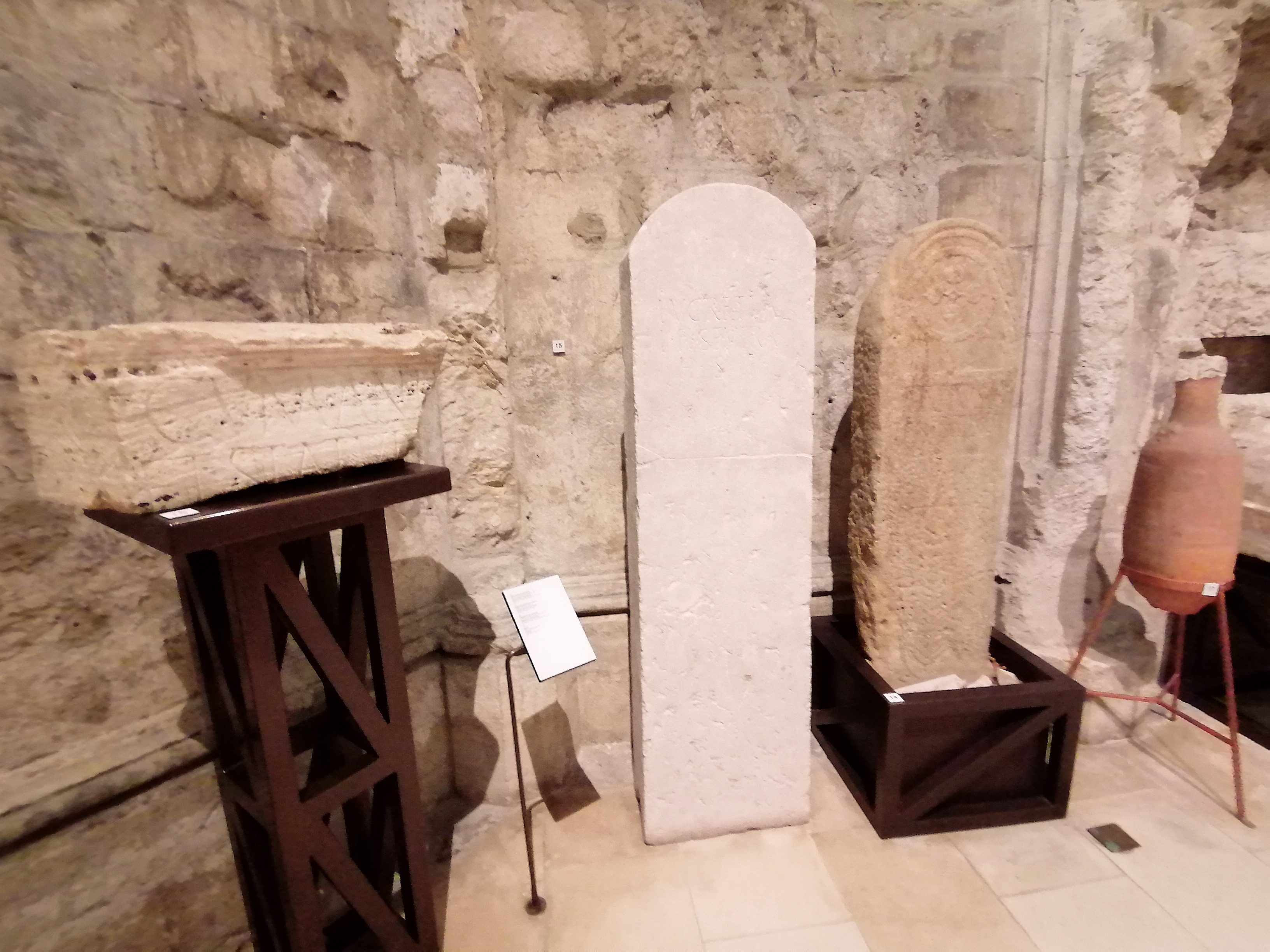
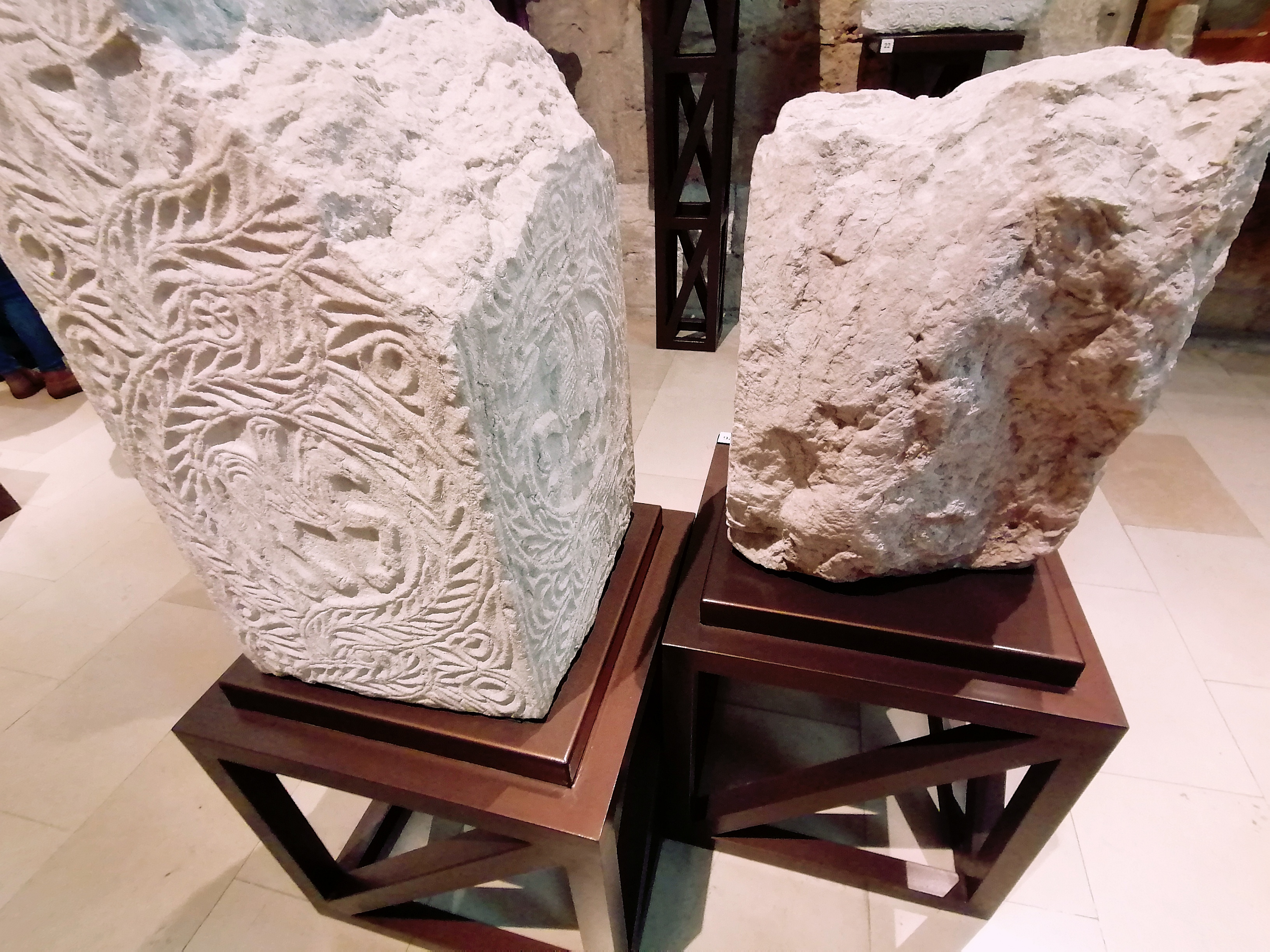
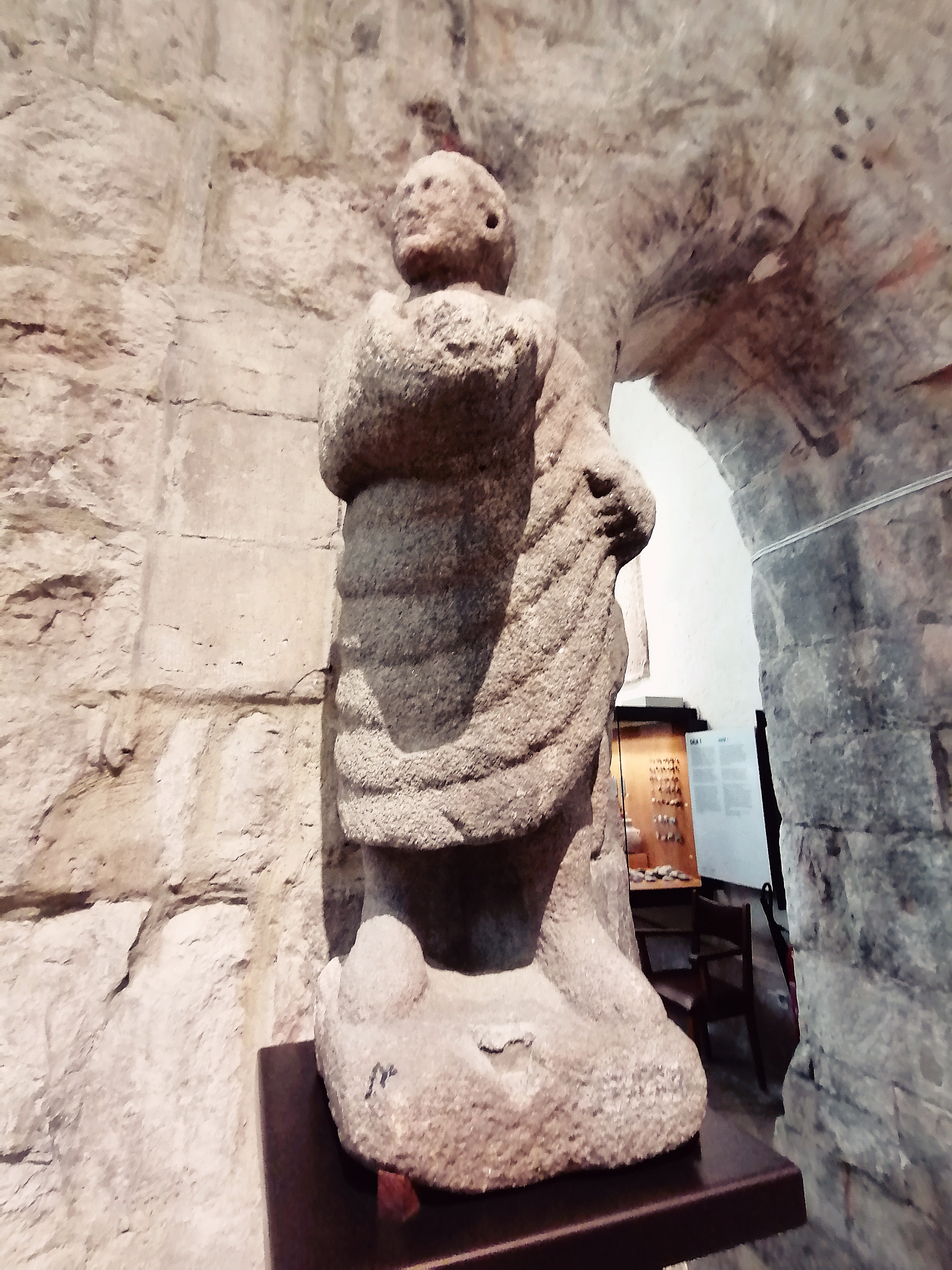

Visitors can even see a variety of Islamic artifacts in this room, including pottery, ceramics, and glassware. One of the highlights of this room number 2 is the 12th-century capital from the Alcáçova Palace, which features intricate decorations and inscriptions.
Room 3

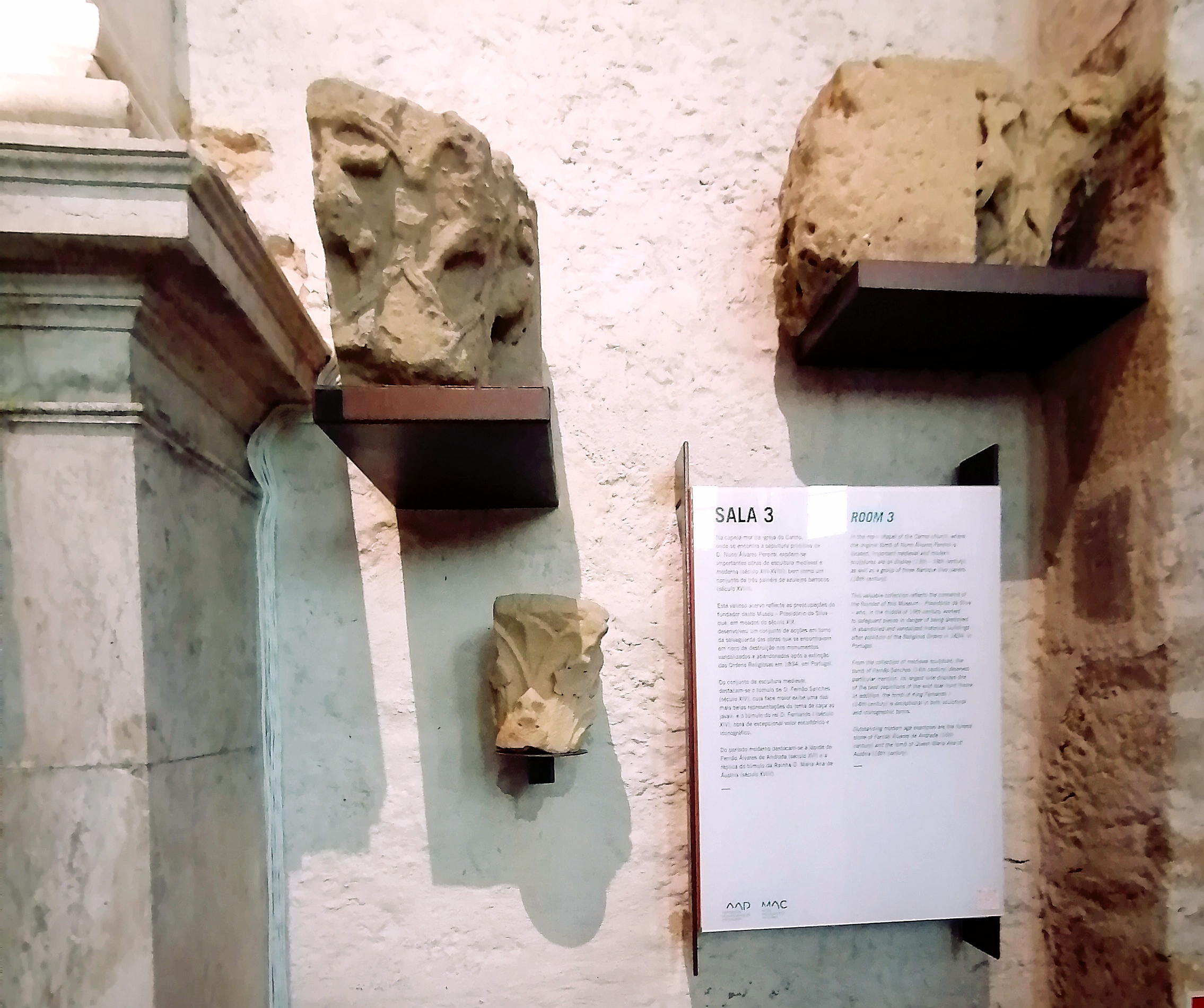


The third room is dedicated to the collection of D. Manuel do Cenáculo, a Portuguese archbishop who was known for his love of art and culture. The room contains a variety of religious artifacts, including paintings, sculptures, and liturgical objects. One of the highlights of this room is the 16th-century Flemish triptych, which depicts scenes from the life of Christ.
Room 4

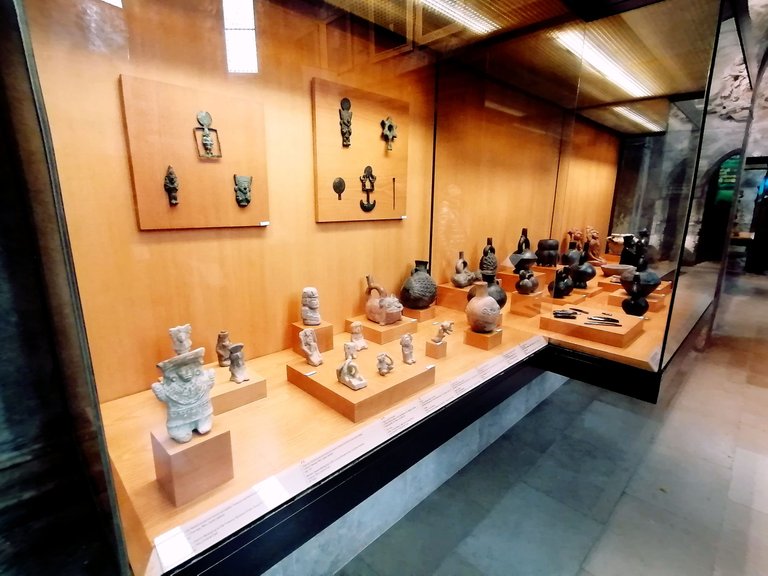
The fourth room of the museum contains a variety of ancient Egyptian artifacts, including mummies, sarcophagi, and statues. Visitors can also see a collection of Greek pottery in this room, as well as a variety of Roman artifacts, including sculptures and inscriptions. One of the highlights of this room is the 4th-century Roman sarcophagus, which features intricate carvings and scenes from the life of Bacchus.
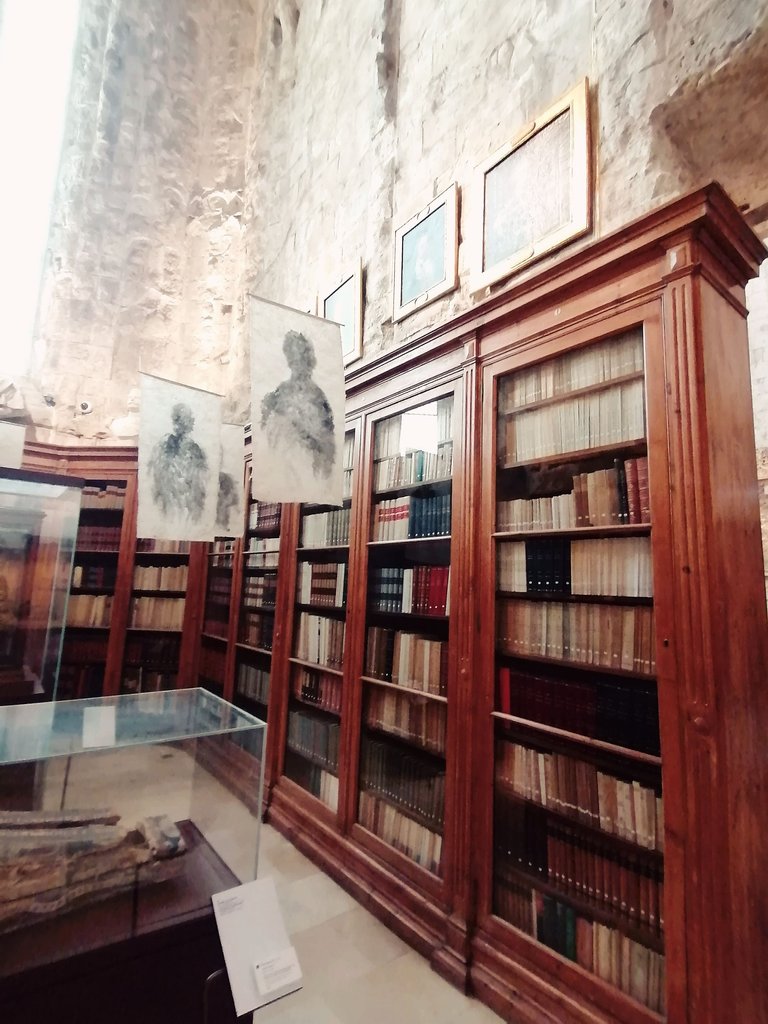
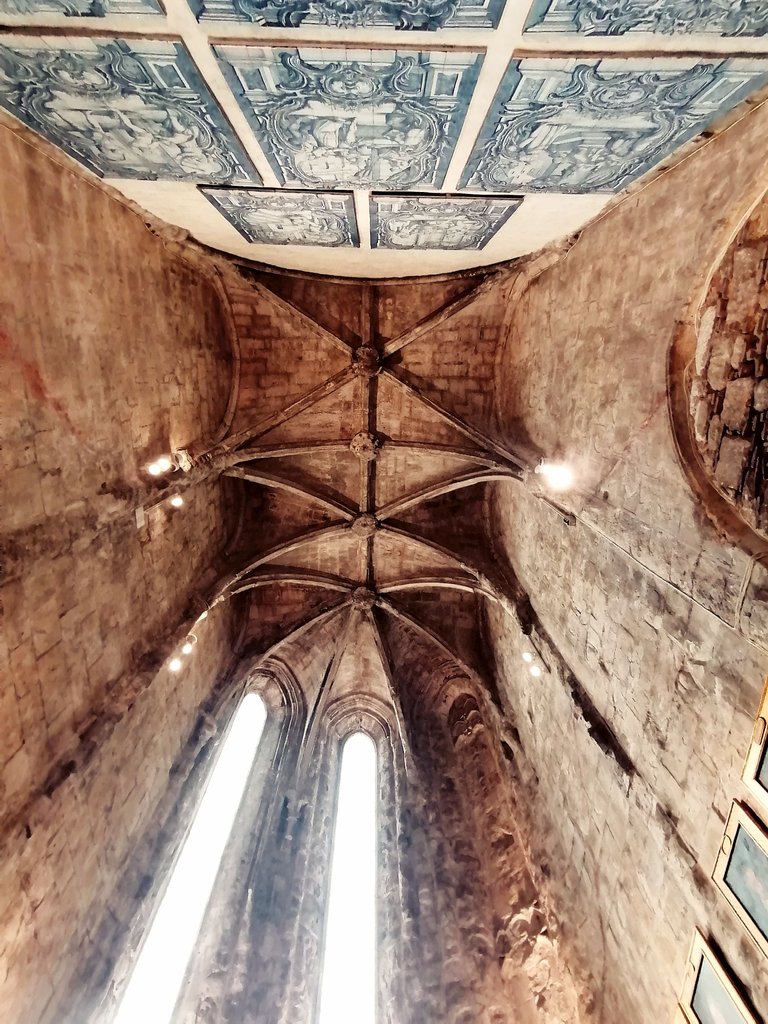
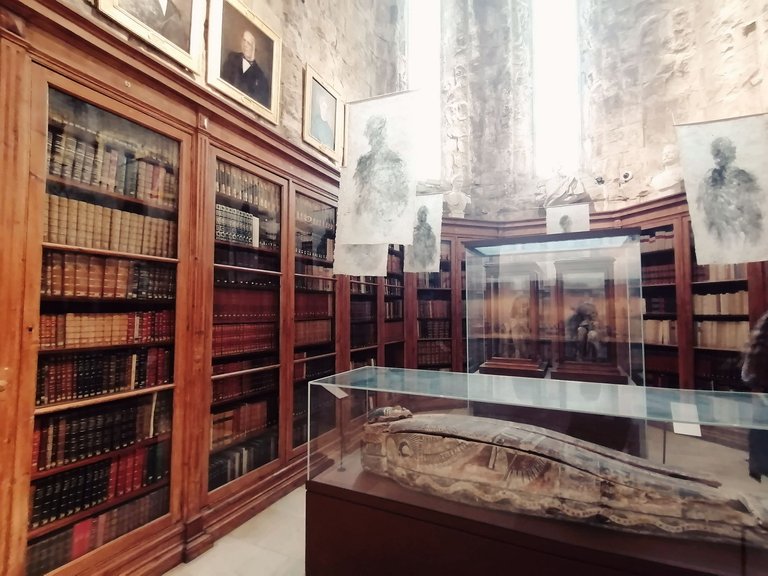
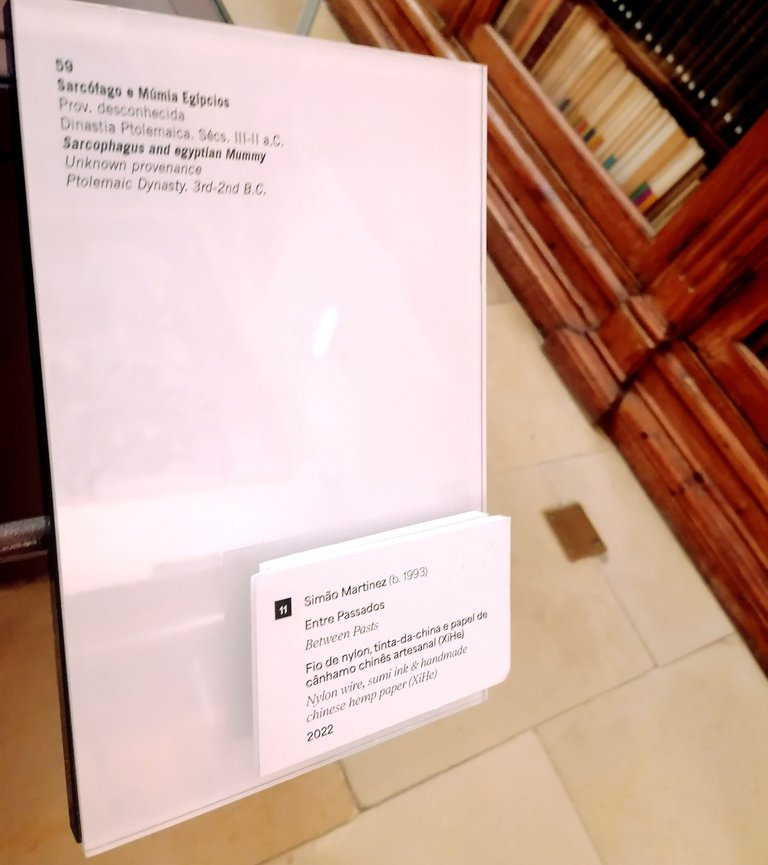
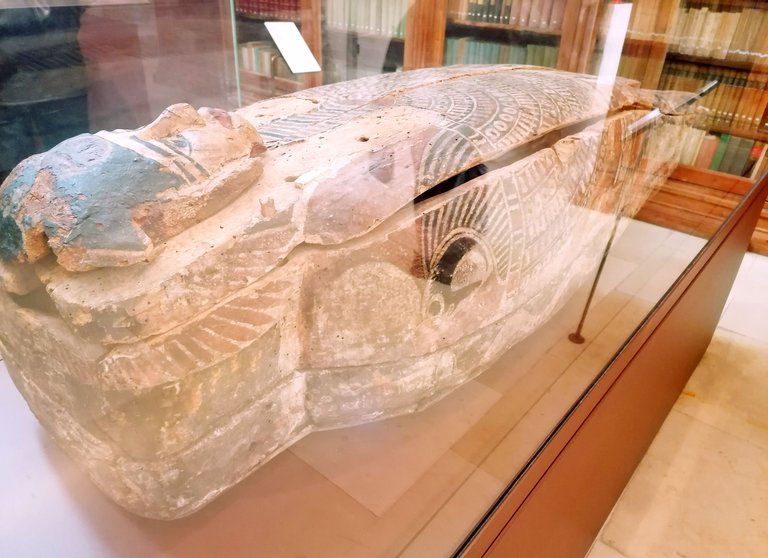
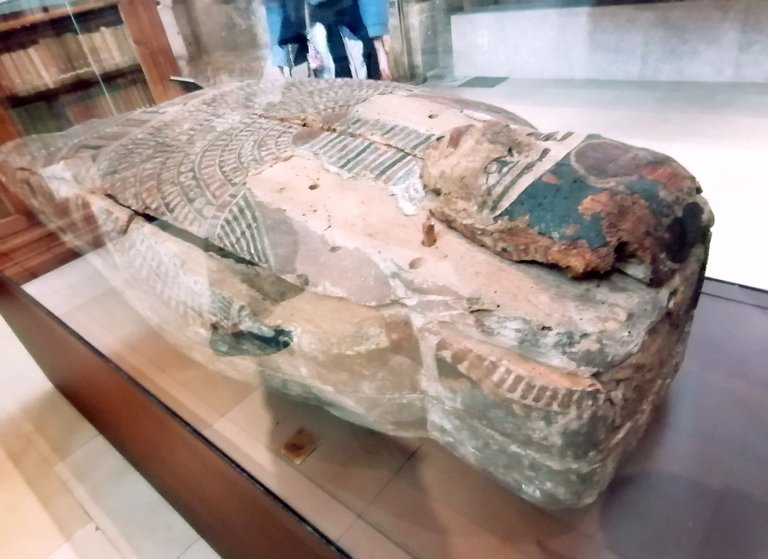
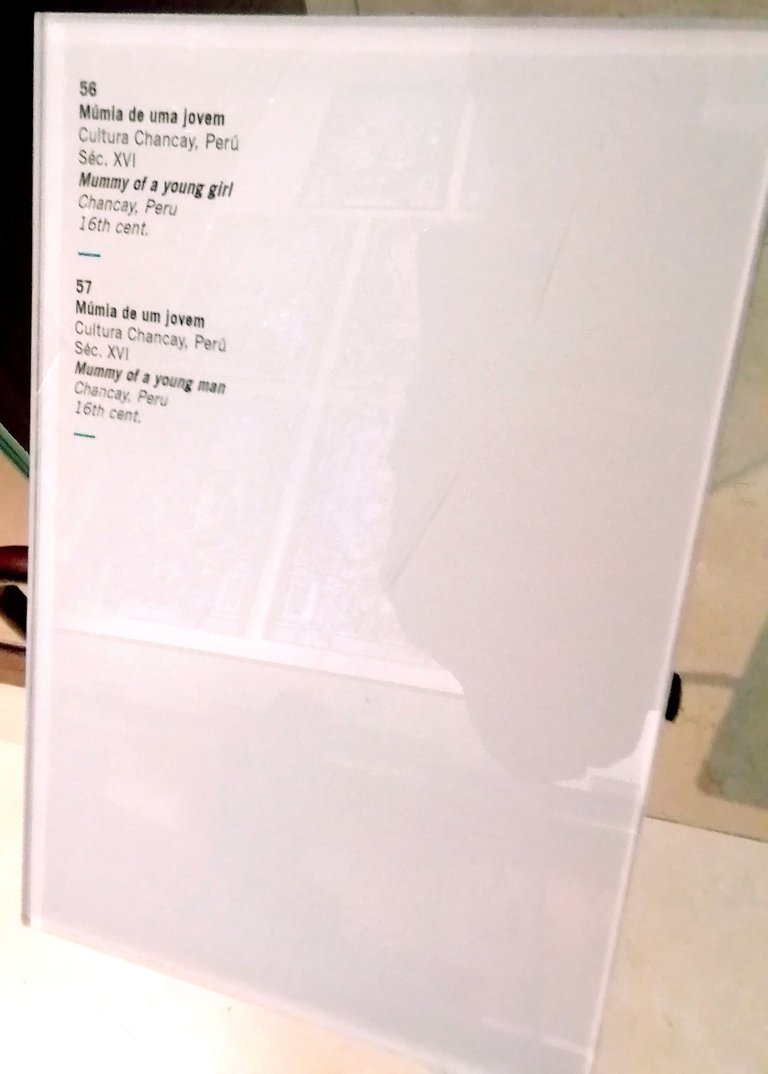
Museums around the world are known for their fascinating and sometimes eerie exhibits, and the Museu Arqueológico do Carmo in Lisbon, Portugal is no exception. Among its vast collection of artifacts and treasures from different civilizations and periods in history, the museum houses two mummified exhibits that have captivated visitors for a looooong time. And now follows my personal Highlight of this museum..
The two Pre-Columbian "beautiful girls," as they are often referred to, are believed to be from South America and are thought to have lived many centuries ago. They are mummified remains of young, small women or young girls (the sizes of them is not much, maybe young girls) that have been remarkably well-preserved, considering their age and the conditions in which they were found. The girls are believed to have been mummified through natural processes, such as dehydration and exposure to the elements, and were likely part of an ancient burial tradition. But why they are death or what the reason was I couldn't find out. Maybe they had a natural death or maybe a tragically end. Idk.
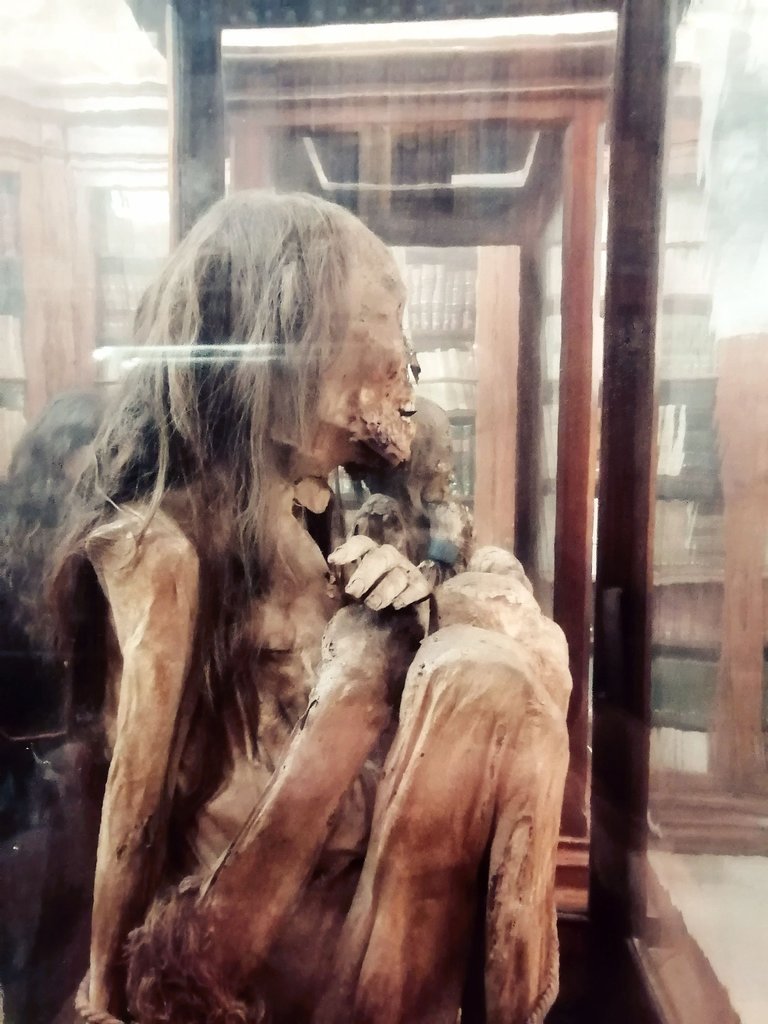
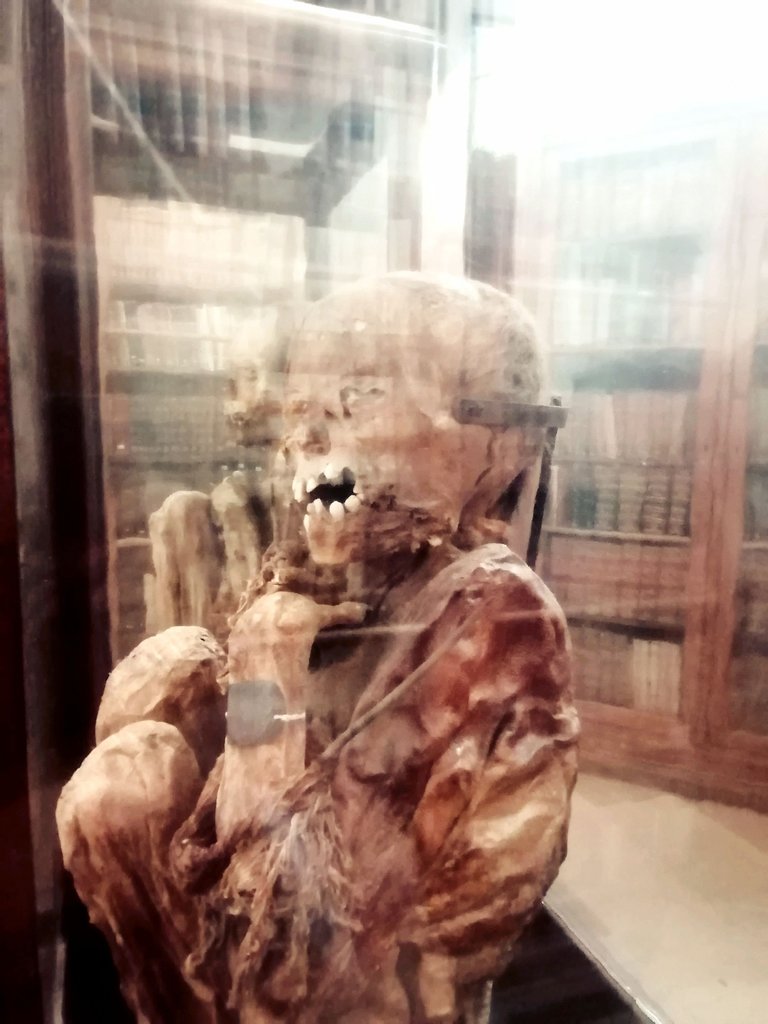
What makes these mummies particularly striking is their lifelike appearance, despite being so damn old. I really got goosebumps by watching them. It was a bit like in a Horror movie. The mummies are encased in glass and are displayed prominently in the museum, positioned near an Egyptian sarcophagus. Visitors to the museum can get an up-close view of the mummies, and they are considered one of the main attractions of the museum. But to photograph them is hard because double glasses....
Both mummies are clearly recognizable as young women aka girls, with their hair still intact and even many of their teeth visible. Although their eyes are empty sockets, their gaze is haunting and seemingly frozen in time. Their expressions are almost playful, as if they are sharing a secret with the visitors who come to see them.
While some visitors may find the mummies morbid, there is no doubt that they are a fascinating and unique piece of history snd specially of this museum. The mummies serve as a reminder of the ancient cultures and traditions that have shaped our world and cultures, and they provide valuable insight into the customs and practices of our ancestors.
The mummies of the "Museu Arqueológico do Carmo" may be macabre, but they are also timeless and deathless. Their enduring presence in the museum is a testament to the enduring fascination that humans have with the mysteries and the unknown of the past.
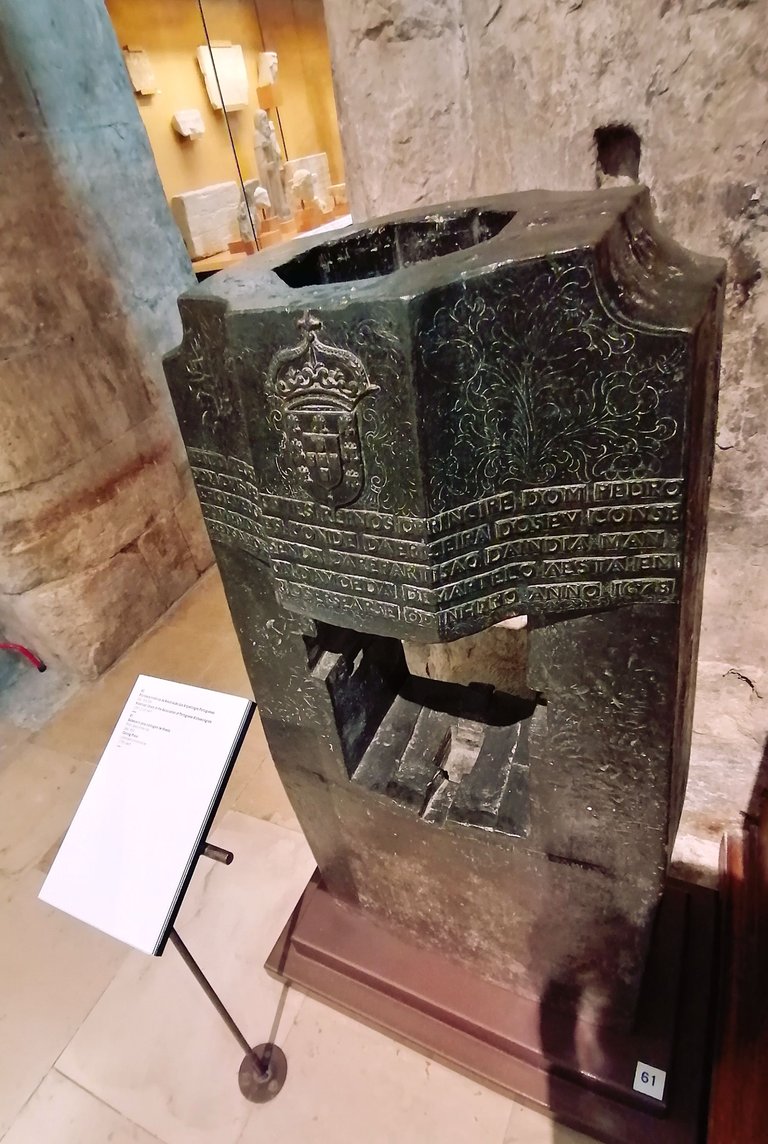
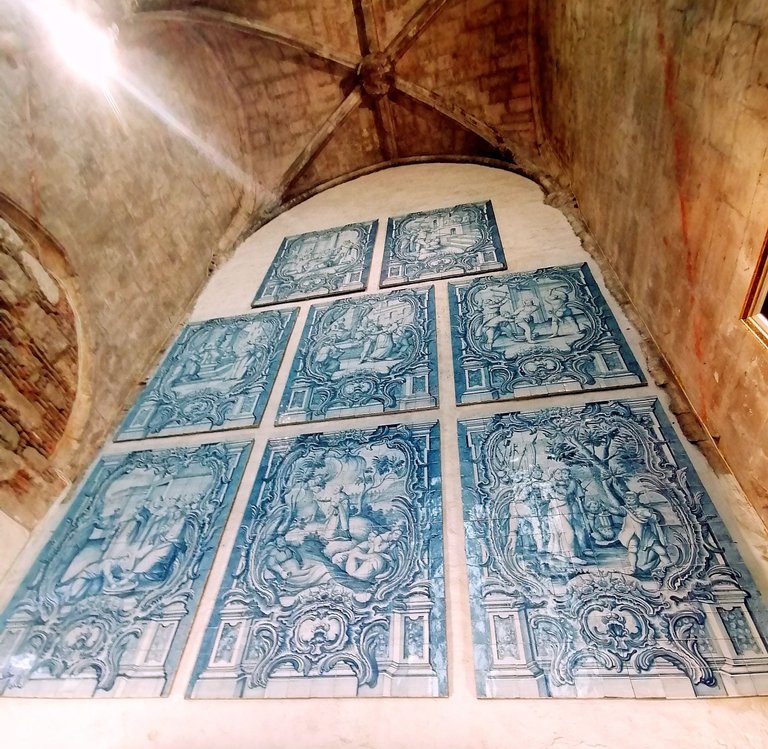
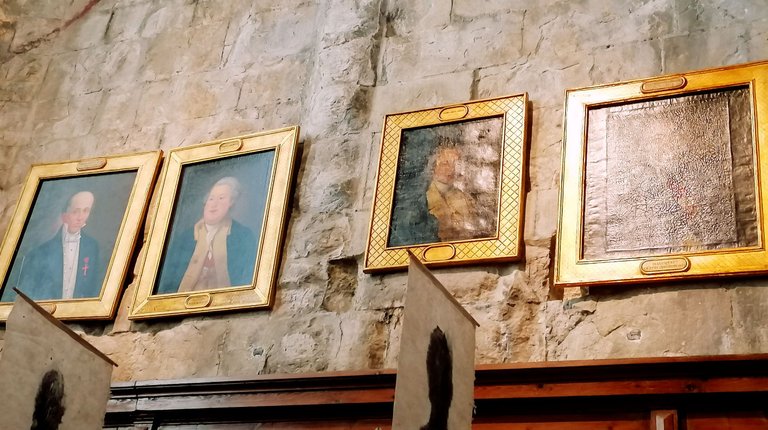
Room 5
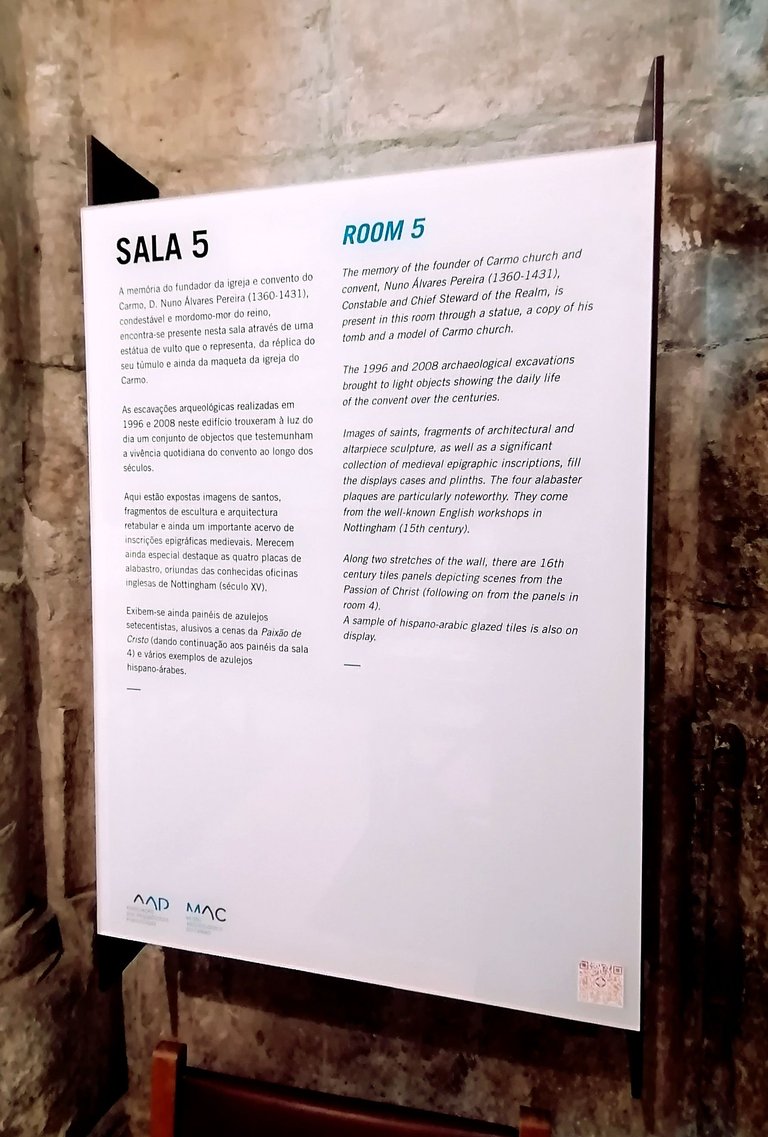
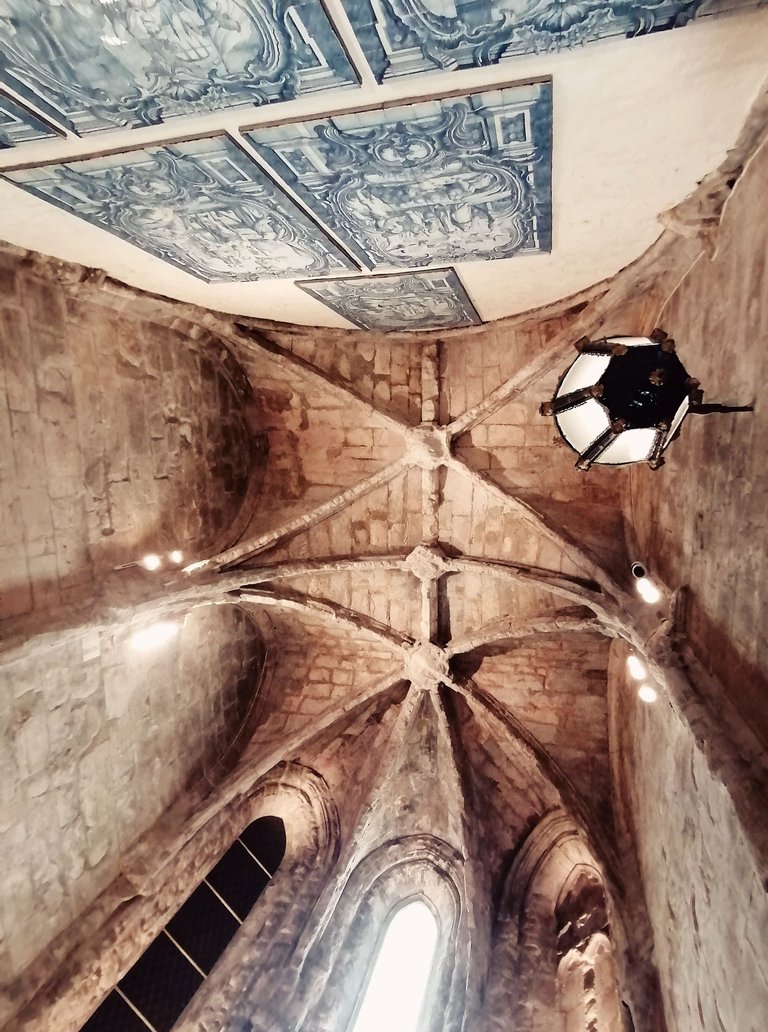
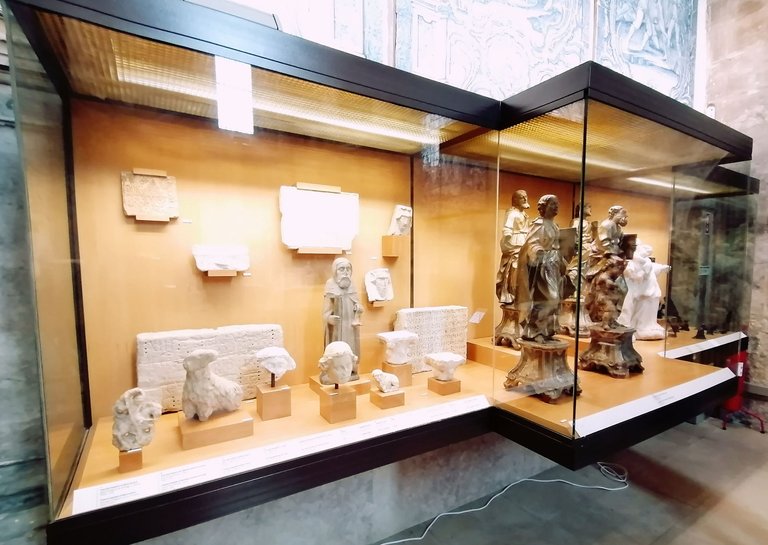

The fifth and final room of the museum contains a variety of medieval Portuguese artifacts, including many sculptures, again some tombs, and liturgical objects. Visitors can see a collection of Gothic-style tombstones here too, as well as a variety of medieval statues, including the 14th-century statue of Saint Anne. One of the highlights of this room is the 14th-century statue of the Archangel Michael, which is carved in alabaster and features intricate details.

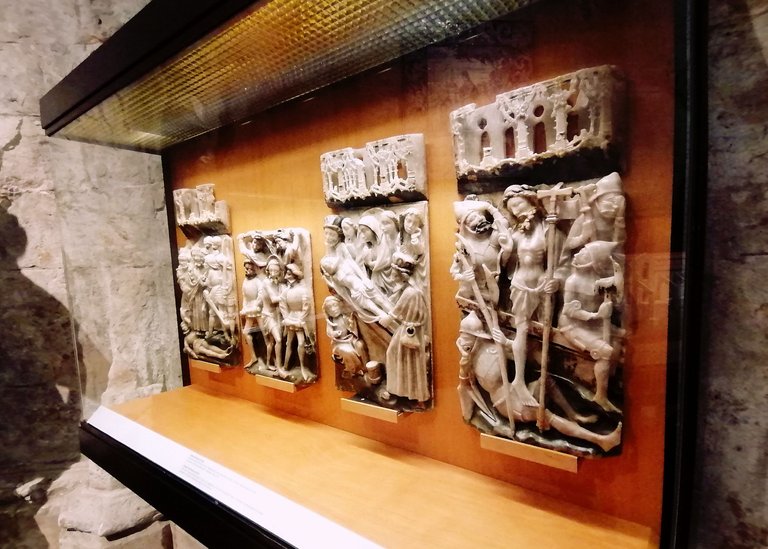
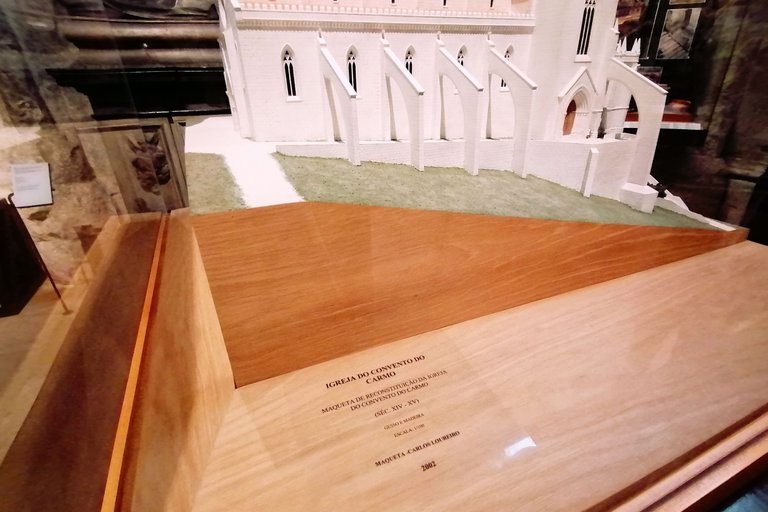
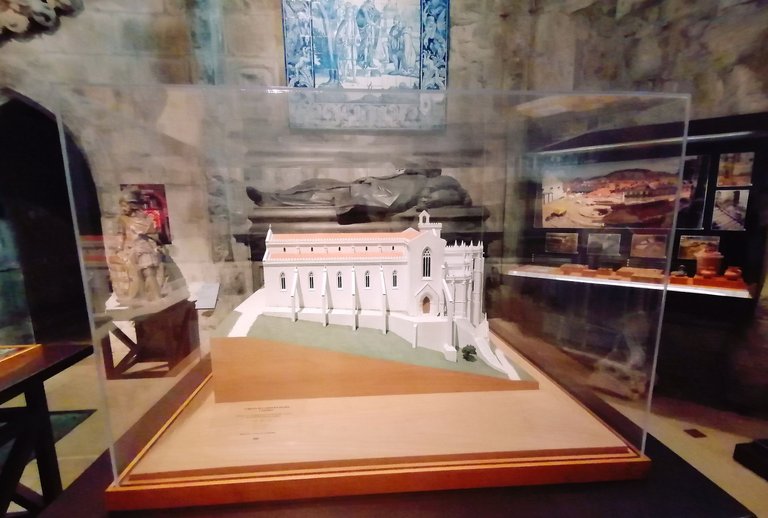
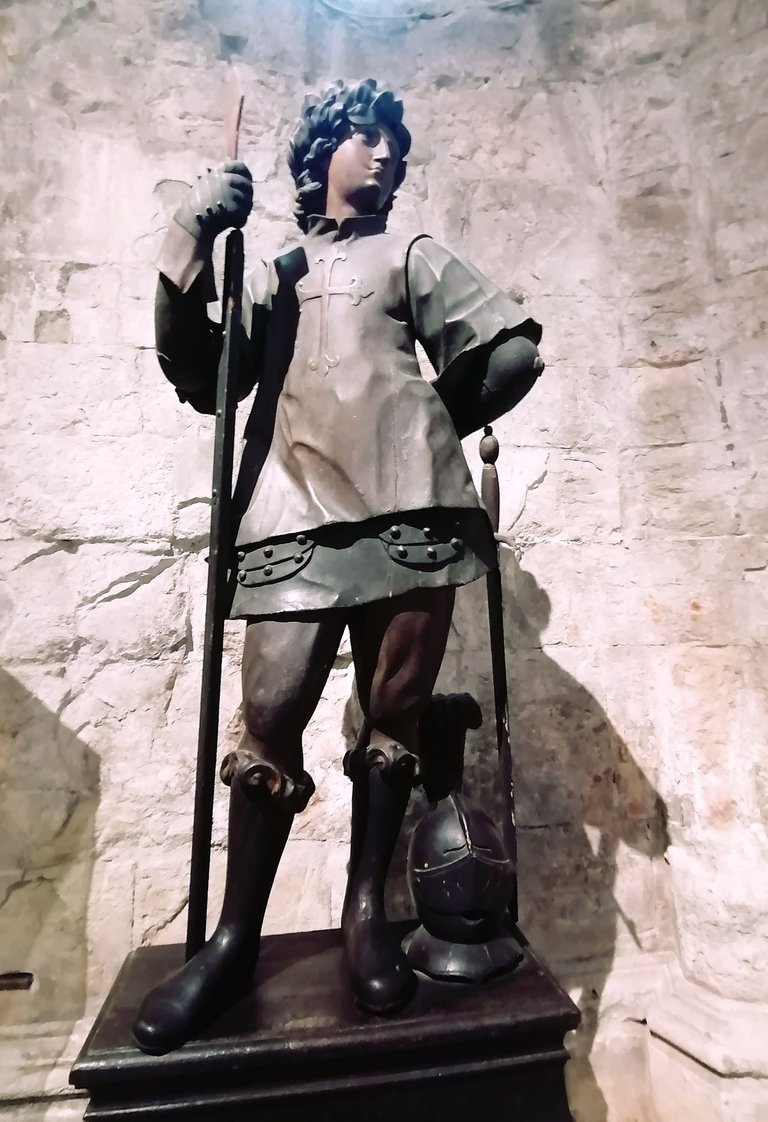
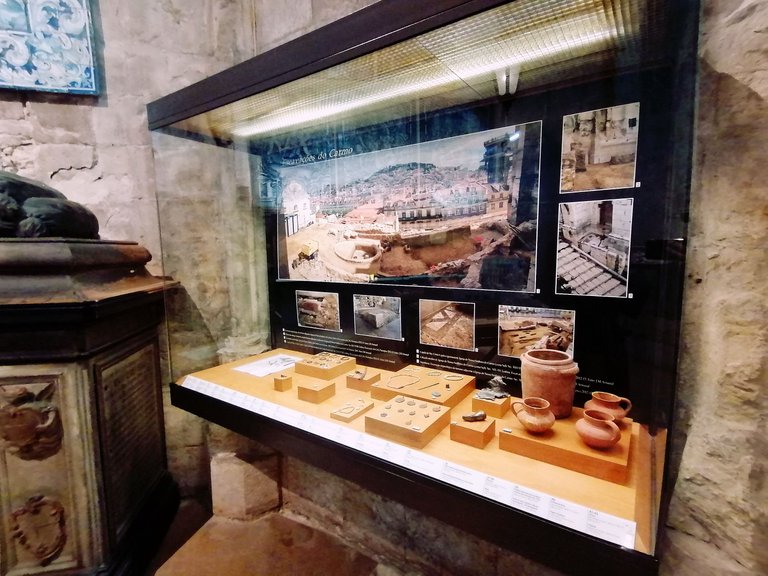
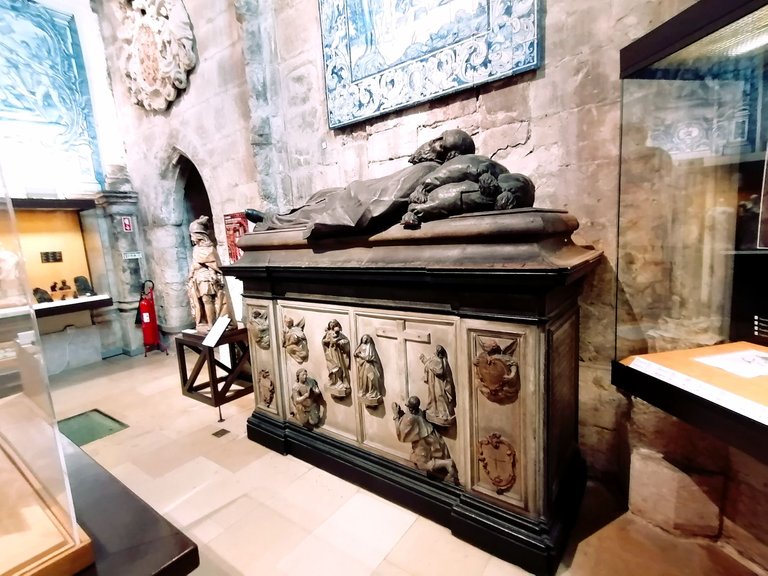
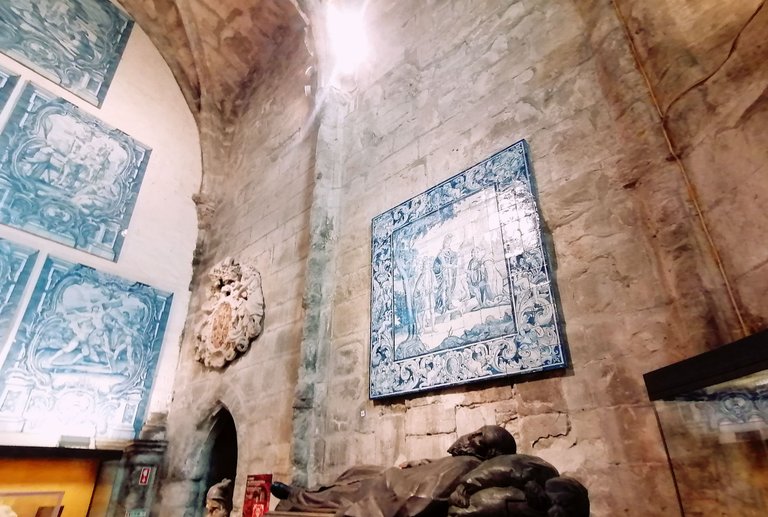

But my Highlight was tbis here...the Hindu warrior stele.
Among the many treasures on display is a striking stele that depicts a Hindu warrior, believed to date back to the 16th century, maybe even older I would say. What sets this artifact apart from other pieces in the museum's collection is that it also features the coat of arms of the Sousa (Prado) family on its reverse side.
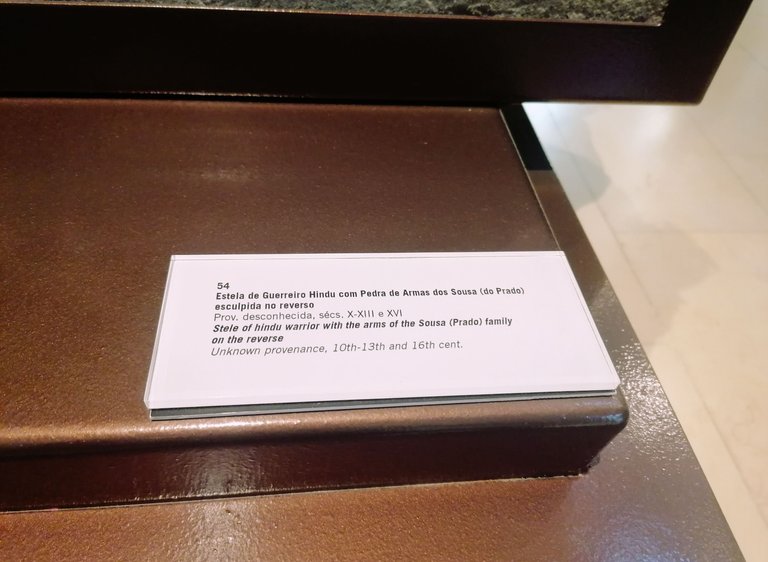

The stele is made of black basalt and stands at about ~ two meters in height. It is thought to originate from India and features an intricate depiction of a warrior in traditional Indian attire, holding a sword and a shield. The warrior's features are finely detailed, with his face and hair expertly carved. The inscriptions on the stele are in Devanagari script, which was used for writing Sanskrit, Hindi, and other languages.
On one of this images I can see also a Lingdam which is a traditional object for spiritual ceremonies as I know.

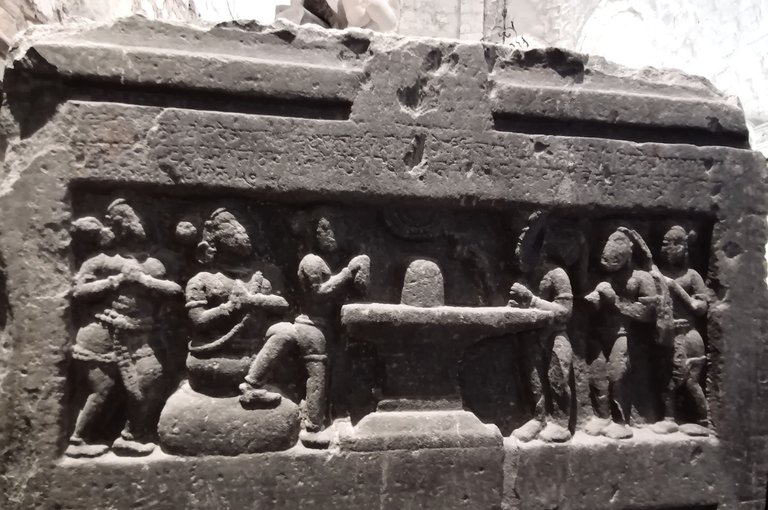
On the reverse side of the stele is the coat of arms of the Sousa (Prado) family, a prominent Portuguese noble family. The arms depict a shield with a blue background and a silver chevron, with three gold crowns above the chevron. The arms are surmounted by a helmet, and the motto "Libertas" is inscribed beneath the shield.
The stele is thought to have been part of the collection of Manuel de Sousa Prado, a 19th-century collector and scholar of Oriental art. The exact origins of the stele are unknown, but it is believed to have been acquired by Prado during his travels through India.
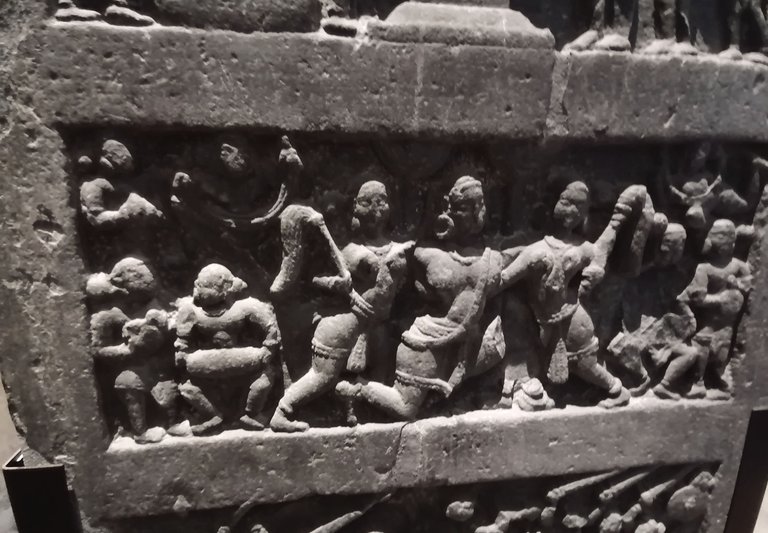
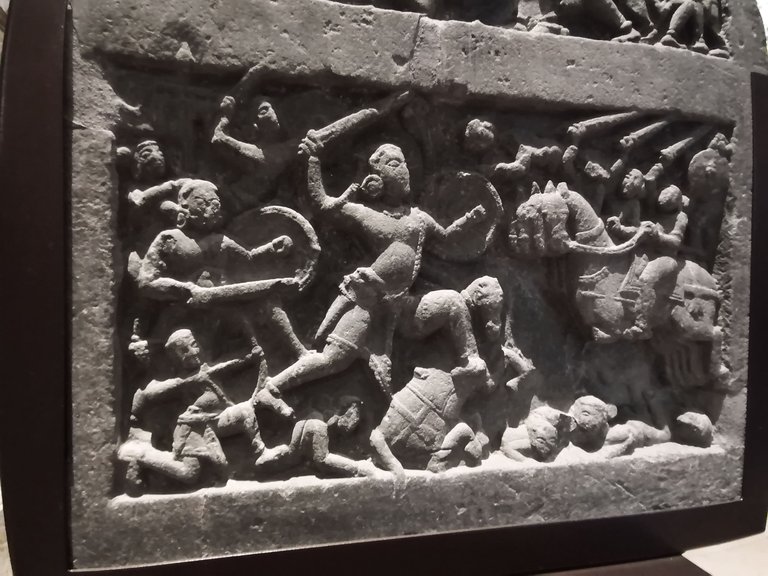
The stele of the Hindu warrior with the arms of the Sousa (Prado) family is a fascinating piece of history and art that provides valuable insight into the art and culture of ancient India. To me this is most fascinating. It is also a testament to the enduring connections between different civilizations and cultures throughout history. The fact that it bears the coat of arms of a Portuguese noble family adds another layer of intrigue to the artifact, raising questions about the circumstances of its acquisition and the connections between Portugal and India during the 16th century.
For visitors to the Museu Arqueológico do Carmo, the stele is an opportunity to explore the rich cultural heritage of India and the connections between different civilizations throughout history. Its intricate details and historical significance make it a highlight of the museum's collection and a must-see for anyone interested in the art and culture of ancient India.
What strikes me about this artifact is that in the first picture it shows a lindam, a ritual object. I am very bad at reading ancient Indian sculptures, but I know that they tell a whole story with a lot of information hidden in the individual images. If I were familiar with the clothing and gesture, I could certainly interpret it better. Well, what the heck. If one of you knows more about it, write it to me with pleasure in a comment. Also its to me not a "Random Coincidence". Family symbols are often given over thousands of years, maybe the Portuguese family was strongly connected to the old indian stele history...
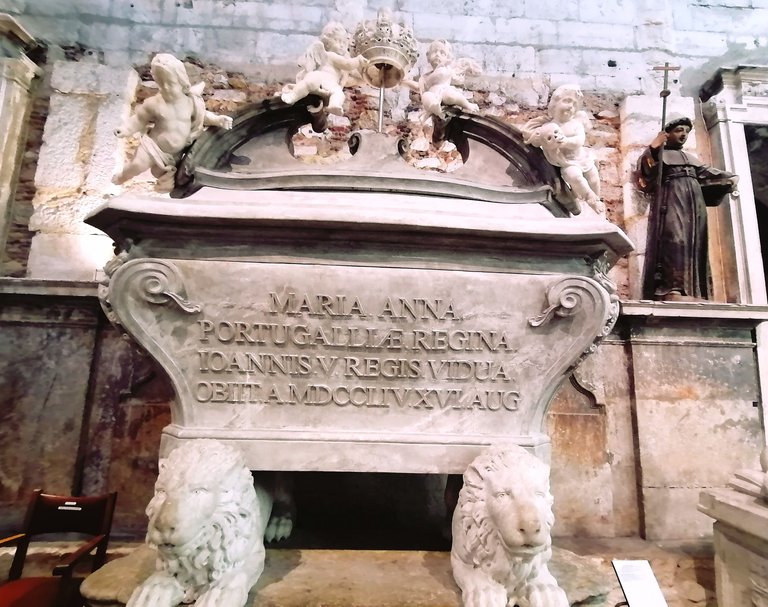

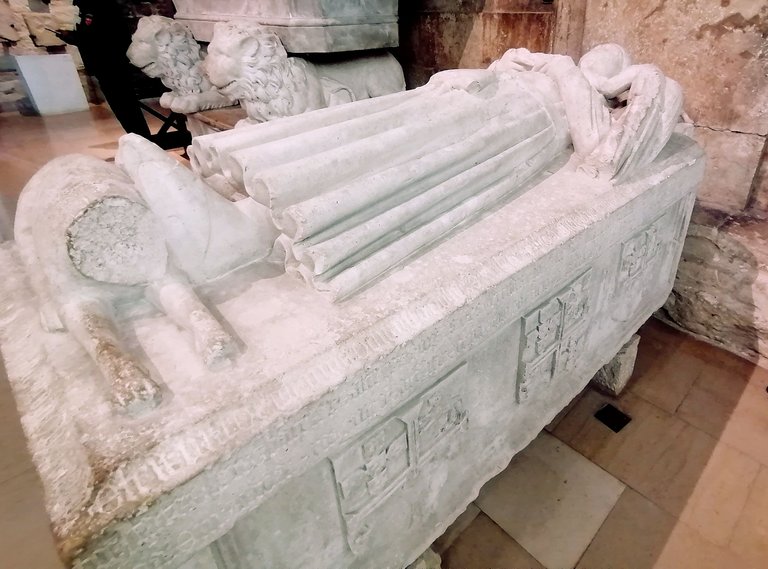
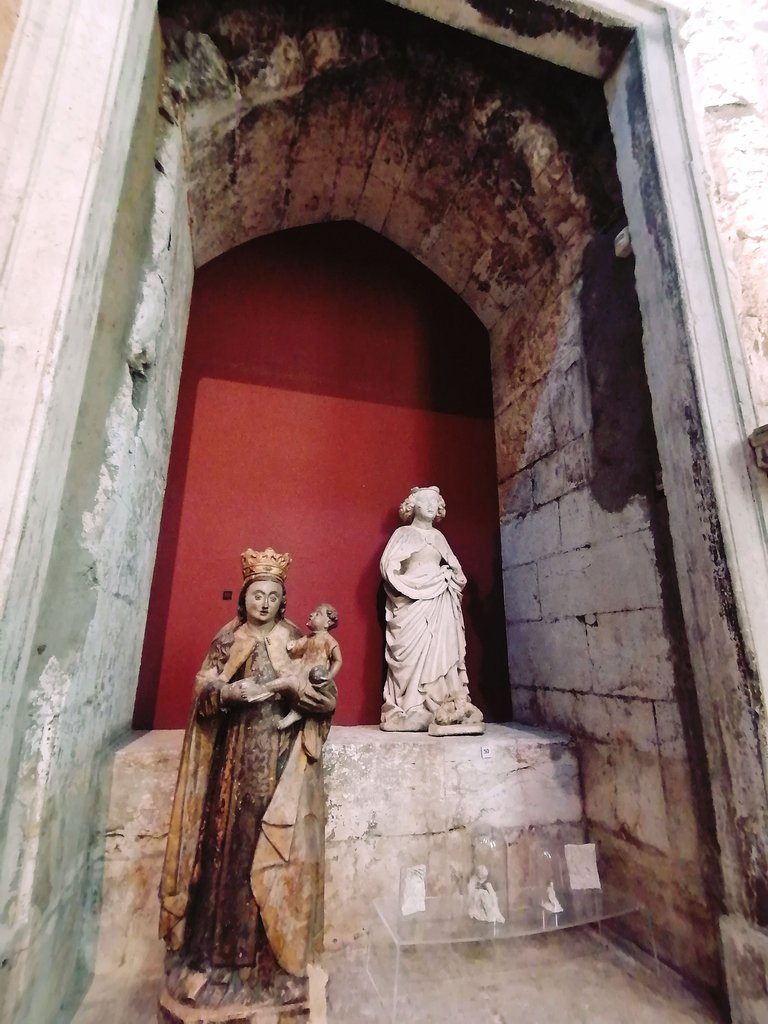
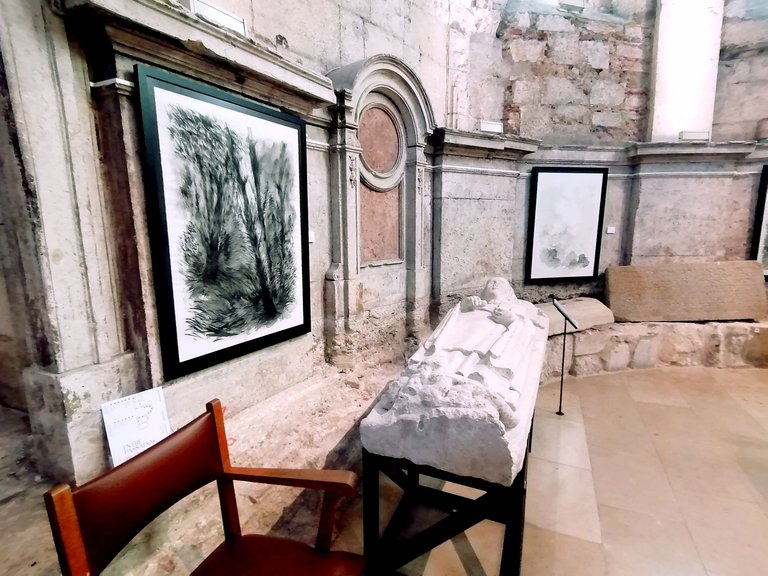
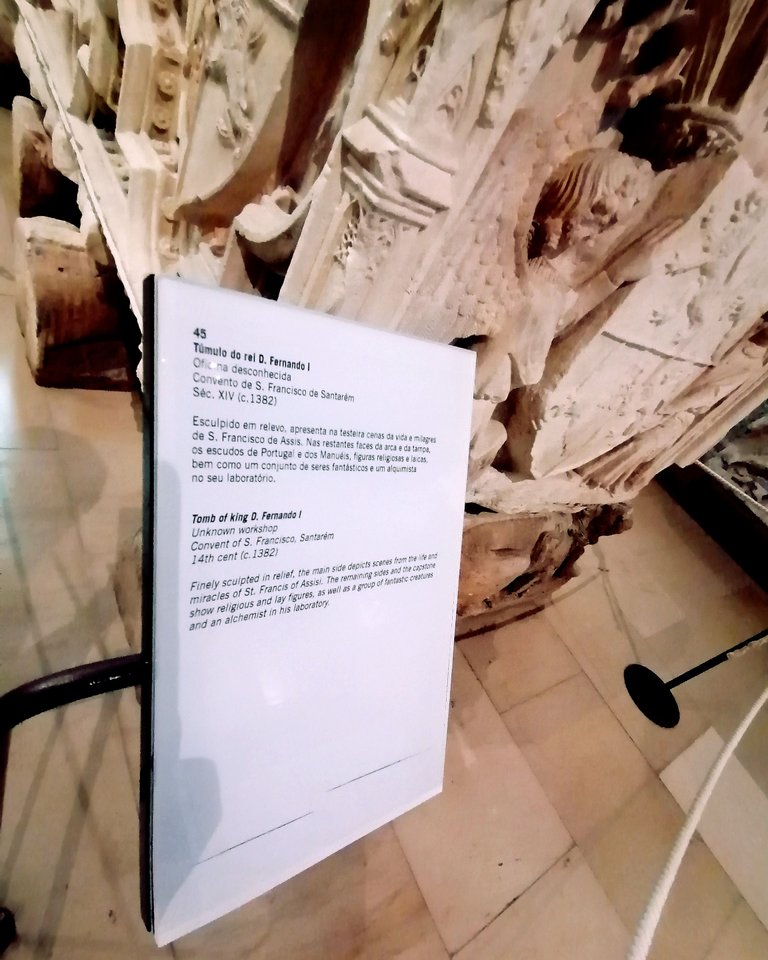
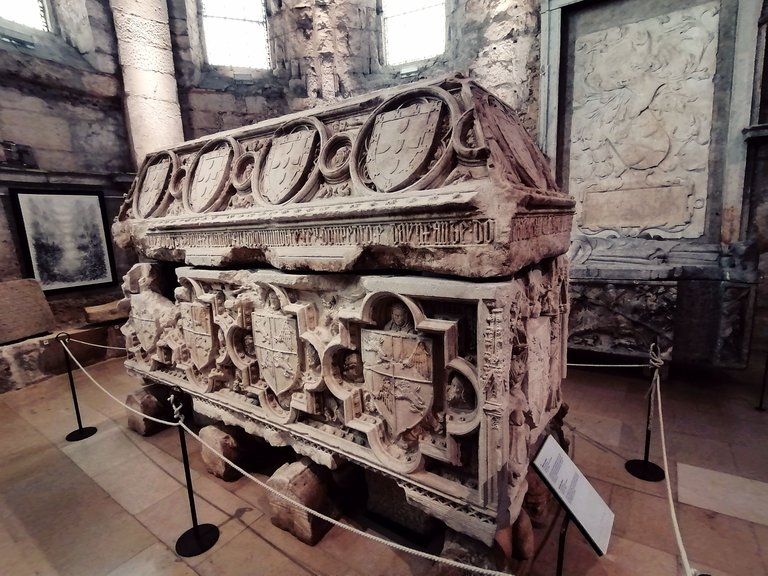


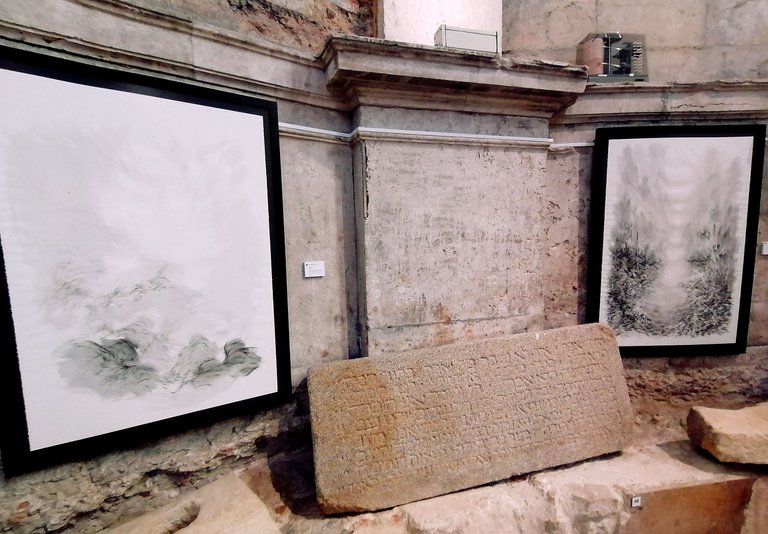
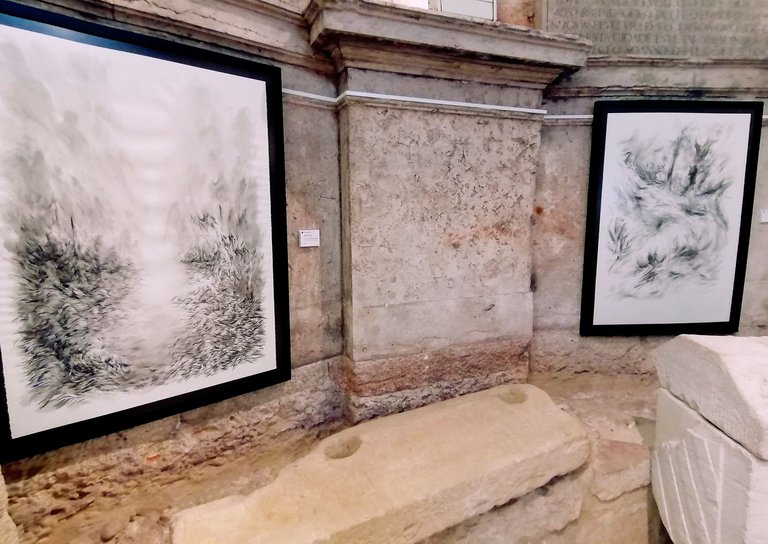
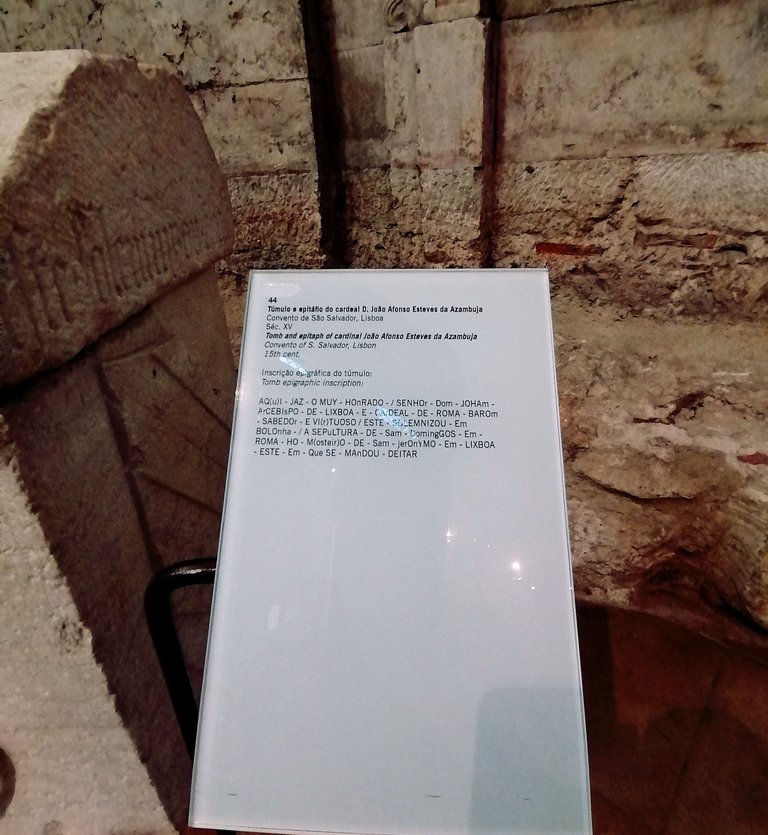



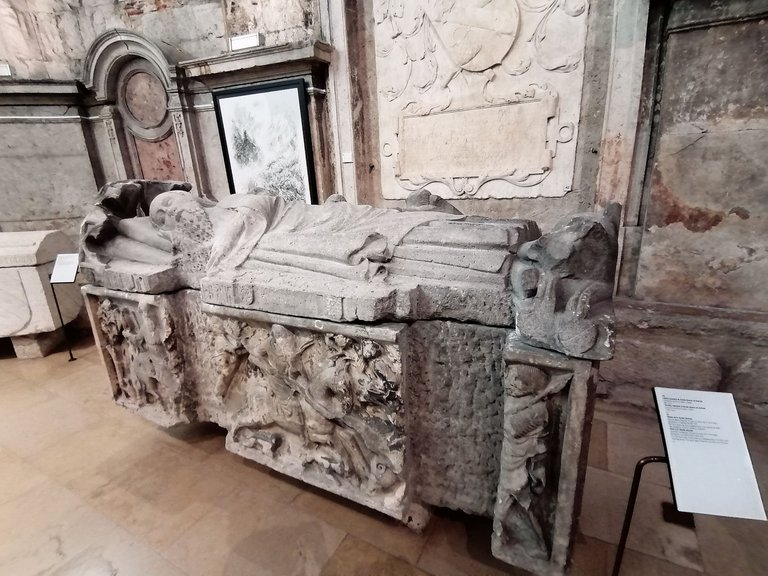
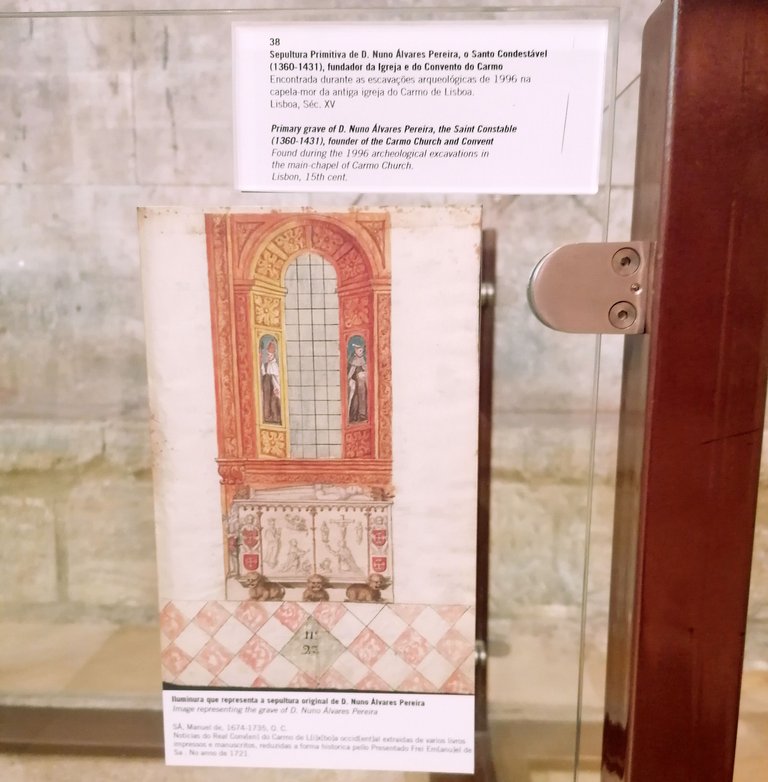

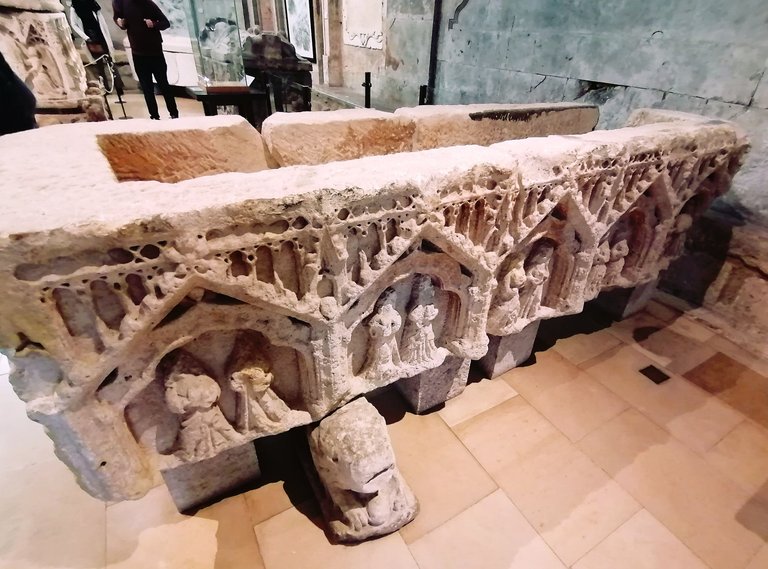
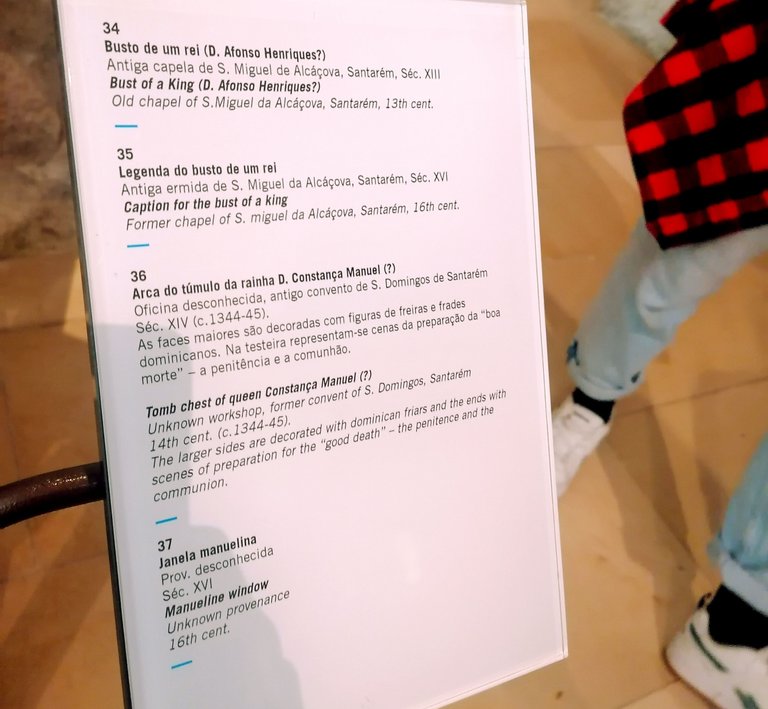


In conclusion, the Museu Arqueológico do Carmo is a fascinating museum that offers a glimpse into the history and culture of Lisbon and Portugal. With its collection of artifacts from various cultures and periods, the museum provides a unique and educational experience for visitors. Each of the five rooms of the museum offers a different perspective on the collection, making it a must-visit destination for anyone interested in history and archaeology.
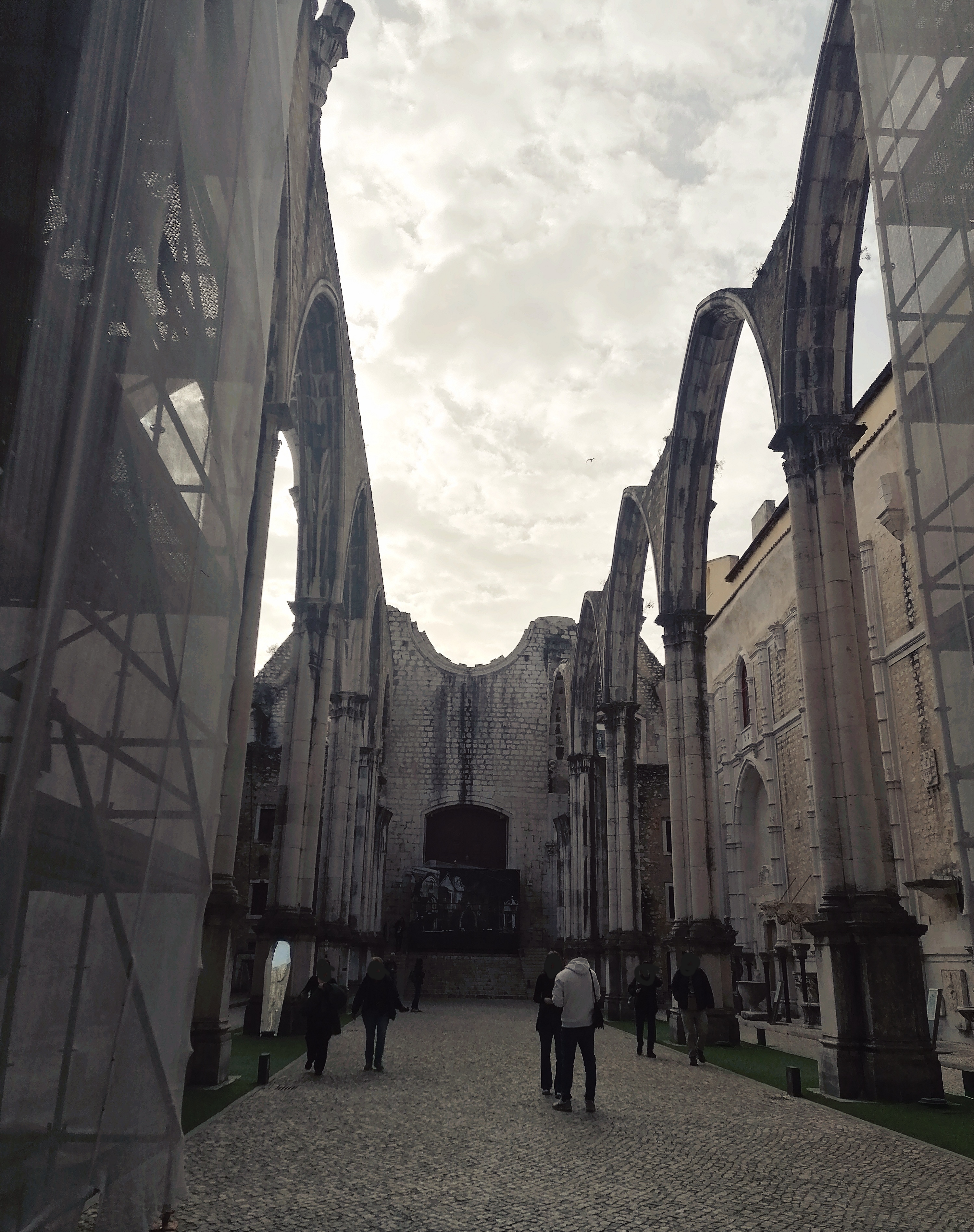
For today our walk is finished. Lets go to the exit.
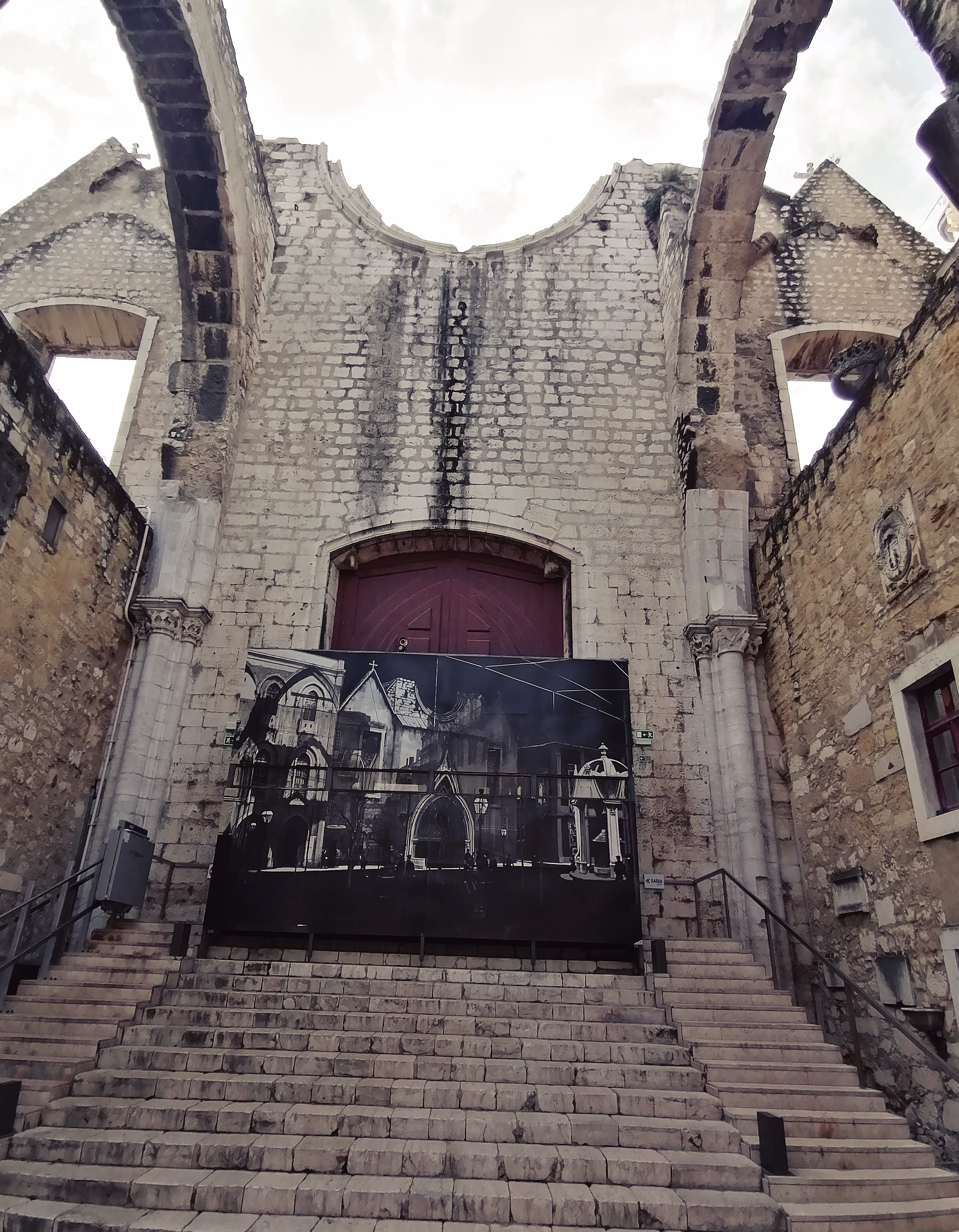

Hope you enjoyed the tour. Feel free to leave a comment.
Your @akida aka TrinityArt


My new #cryptoart as #crypto #merchandise available now.
Check out my #cryptoartshop
https://trinityart-nft.pixels.com/

Check out all of my NFT Art here:
https://nftshowroom.com/akida/gallery

The rewards earned on this comment will go directly to the people( @jijisaurart ) sharing the post on Twitter as long as they are registered with @poshtoken. Sign up at https://hiveposh.com.
Cool to see you back (and without downvote).Keep up.
Very cool visit of this museum, I really like the garden of sculptures in these ruins. And the photo of the ceiling with the azuelos, the high is impressive 👍
Have a great weekend
!PIZZA
Ola and muitoooo obrigada my friend. I will keep it up and post less til summer. If I understand right I am til july 5th on the blacklist. So if I got ignored anyway and have to proof myself I do less. But promise: if I find Streetart on or the other museum I will post it, my nfts and maybe 1 artwork will show up from time to time too. Maybe maybe 2 max. 3 post a week lets see. Hugs to ya. Have a beautiful weekend too. Beijinhos
When I saw the first image I couldn't resist coming to see more, in spite of that creepy aspect it caught my curiosity. it's incredible how these masters have kept and preserved all this so that it lasts throughout history.
Yeah I wisely have choosen out the freakish pic. Lol. Glad you liked the walk. Thabks a million for your feedback.
Oh my God! This is the dream museum tour for an artist! Lots of art, history, and crafts. I got scared for a bit on those mummies, yikes! My favorite part is the Egyptian artifacts. Thanks for sharing, Akida!!
!PIZZA
Thabk you my friend @jijisaurart 💯✨💕🤗 Muitoooo obrigada. Glad you liked it.
You may want to hold back on your best original content (which you should have posted previously instead of the plagiarised content). Curation guilds tend not to curate users so soon after they have been caught plagiarising, so you will have to ride out the storm and gain the trust back from the community until you get support again.
Ola dearest @livinguktaiwan thanks for your words. I appreciate them from my whole heart.
Thanks for your gentle advices. Yeah, I time a week I normally pisted such a biiiig post but I will listen to your advice and hold a bit back. But also I wanted to show this place no matter if I got support or not. As long as I don't get a downvote all good.
I will fight for the trust of the community for sure. ✨💕🤗💯👍🏼✨
Thanks for stopping by and your kind words. Have a beautiful weekend.
Congratulations, your post has been added to Pinmapple! 🎉🥳🍍
Did you know you have your own profile map?
And every post has their own map too!
Want to have your post on the map too?